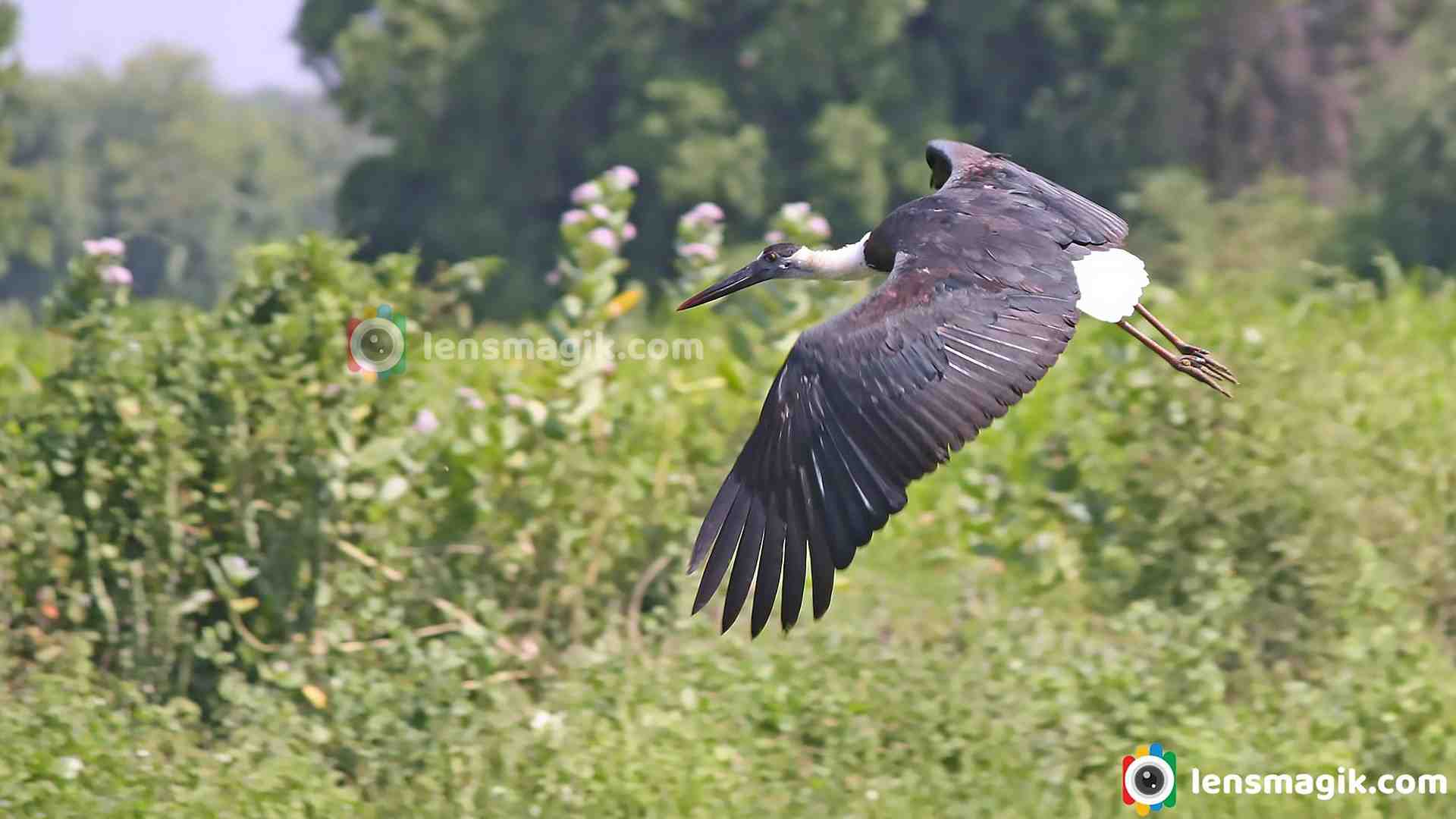
Asian Woolly-necked Stork is the large wading bird and it is also known as Asian Woollyneck . It is a spices of Stork family and large wading bird. It is widely spread spices and it breeds in Asia , India and Indonesia. It generally found at wetlands, agriculture field, cliff, and on trees. It also build nest on trees, mobile towers. Asian woolly necked stork found in Gujarat at many places like Thol Bird Sanctuary, Nal Sarovar Bird Sanctuary, Velavdar Sanctuary, and many more agriculture lands and wetlands, small ponds etc. I shoot it at agriculture land near vamaj village neat to kalol.
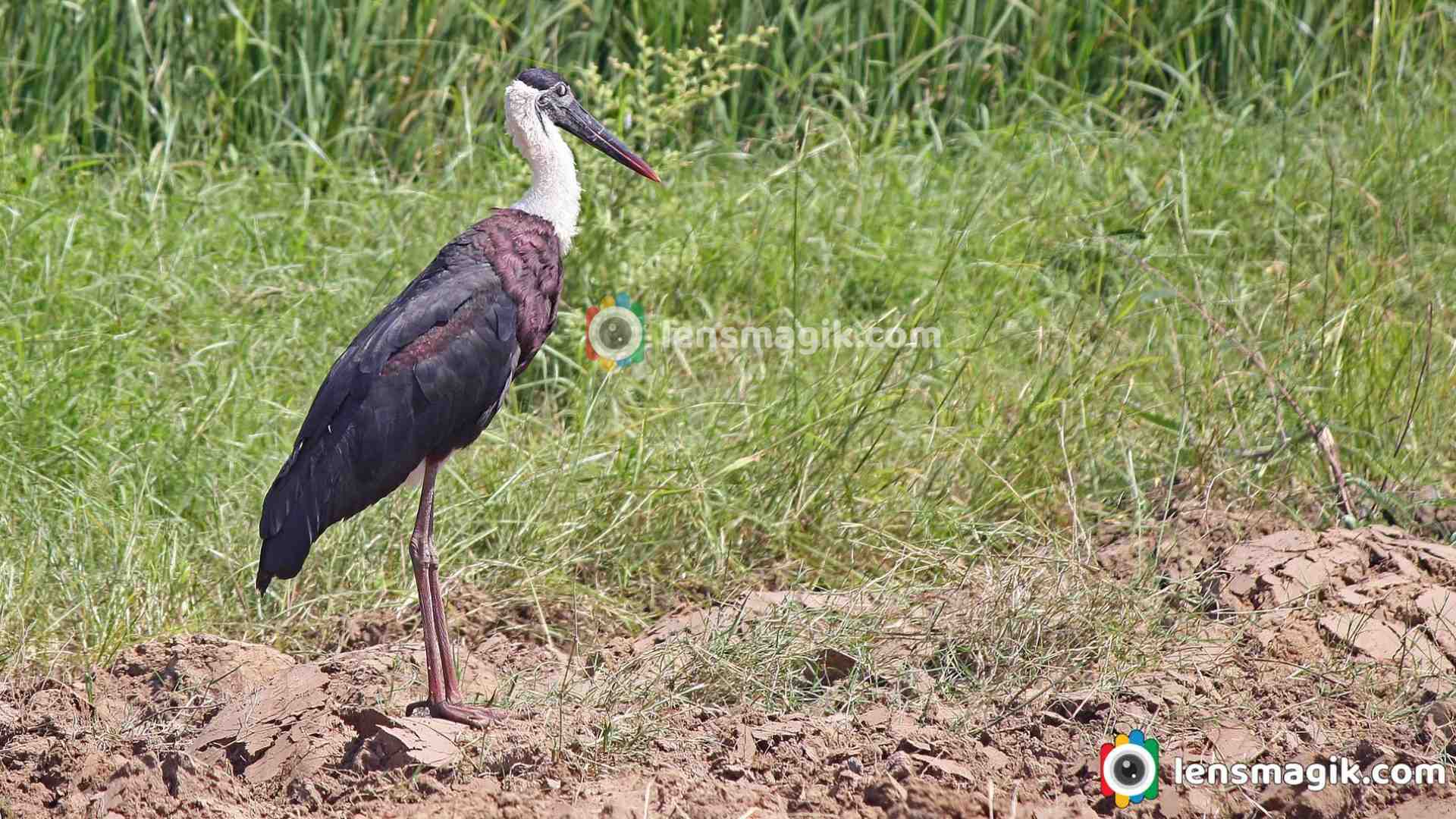
Facts and description about Asian Wooly-necked Stork :
- Binomial name of Woolly-necked stork is Ciconia Episcopus.
- Wooly necked stork is medium size stork in stork family
- It is around 75-92 cm in height.
- The iris of wooly necked stork is crimson or similar to wine red.
- Overall body is black in color . Neck is white and underparts are glossy purple or dark green. under tail and lower belly are white in color.
- It has long legs and heavy bill.
- Asian Woolly necked stork breeds singly. It breeds in India, Asian and Indonesia.
- They are attracted of fire in farms and agriculture because they found insects easily run away from fire .
- It has long and browed wings to travel long distance.
- They are generally in solo, pair or in 4-5 group. Flocks are generally found in summer when wetlands are very few.
- Asian woolly necked stork generally eat insects, reptiles and amphibians.
- They build nest in agriculture area on trees. They lay 2-6 eggs.
- Population of Asian woolly necked stork population is decreasing . It is now in near threaten ( NT ) in IUCN list.
Well Like Asian woolly necked stork the other stork spices found in Gujarat is Painted Stork too. Size of both are almost same but difference of color. In Gujarat there are lots of bird sanctuary where we can found woolly necked stork and painted stork. My nearest bird sanctuary is Thol bird Sanctuary. In Thol Sanctuary there are more than 150 spices found by bird watcher.
Gear Used : Canon 6 D , Canon 100-400mm lens
Location : Near vamaj village at agriculture area.

Gandhi Kutir is a convention center is located in Gandhinagar in sector 13 C. It is also known as Dandi Kutir. It is inspired by life of Mahatma Gandhi. It is spread in 34 acers area so it is the biggest convention center in India. Gandhi Kutir developed by Government of Gujarat. Many business summits like Vibrant Gujarat held here. Government of Gujarat developed Mahatma Mandir as a place of development and Unity. It was built by L&T . The design and planning of Mahatma mandir is environment friendly. Gandhi Kutir is a 41 meter high dome represent the famous Dandi March by Mahatma Gandhi. Gandhi Kutir Museum built on life of Mahatma Gandhi . It describe full life about Mahatma Gandhi from childhood to Purna Swaraj against British. In the Gallery there are different levels . At different levels different techniques used like 3D mapping , 3D holograph, 360 degree projection, Interactive Audio , LED screens and photographs.
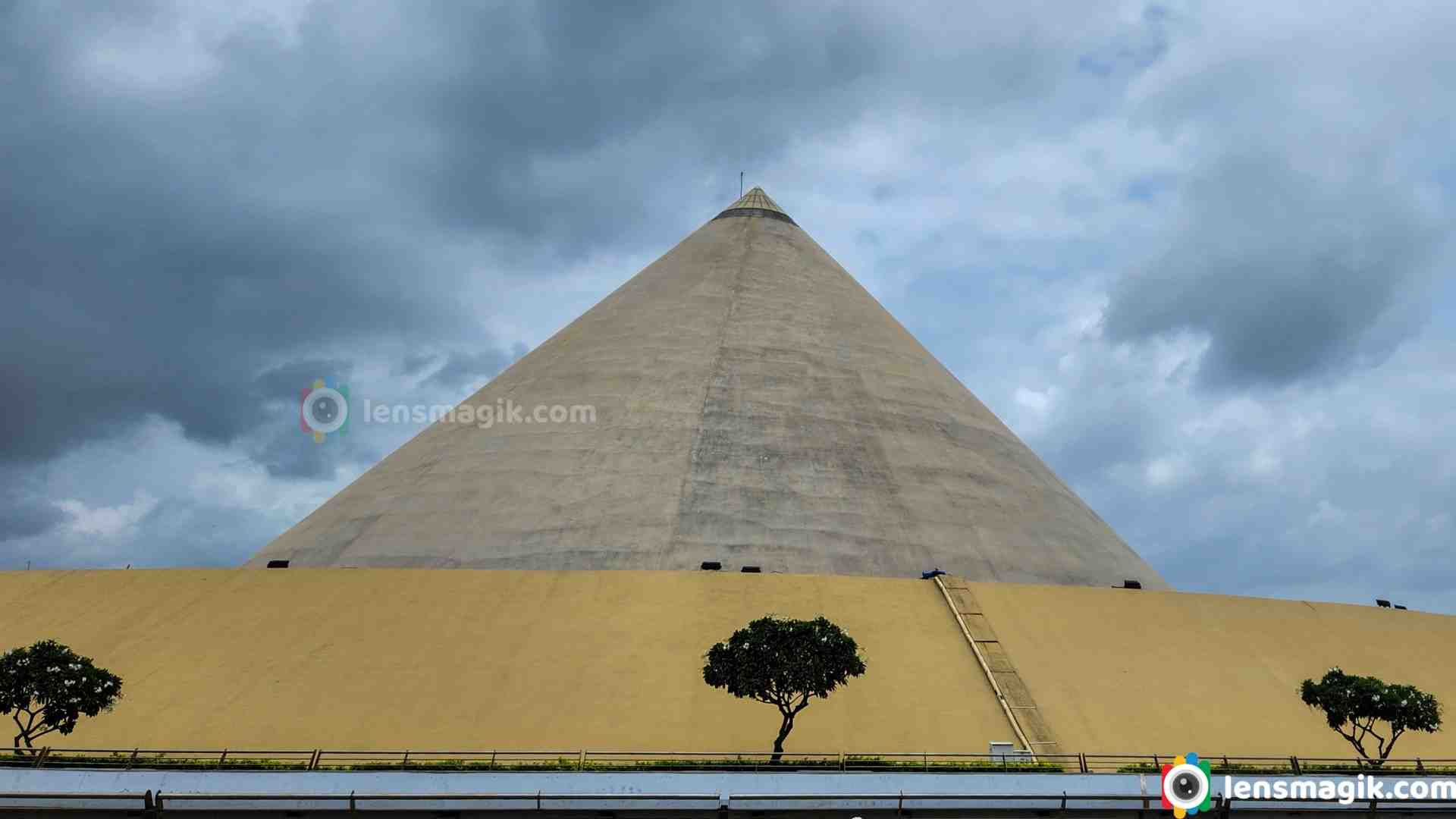
There are three part in Mahatma Mandir area :
- Convention Center : Convention center is column free air-condition hall. Total capacity of convention hall is around 15000 people at a time. Theater style hall can accommodate around 6000 peoples. It has 4 seminar hall with capacity of 500 of 3 hall and 1000 of 1 hall. Convention and exhibition area has natural light and air spaces. It is also equipped with sufficient lighting and waste water management.
- Memorial : Memorial is dedicated to Mahatma Gandhi . It was constructed by Shapoorji Pallonji and company limited. In the memory of Dandi March a suspension bridge was built. A dome like structure made by concrete and it represent salt mound houses, library and research center. Outer side of Dome structure a beautiful garden made for sitting. Also a Chakra or Spinning Wheel was built.
- Central Vista : A 3 km long and 162 mt wide road constructed to connect Mahatma Mandir and Gujarat Legislative Assembly. Road has three lanes both side and between road there is a garden.
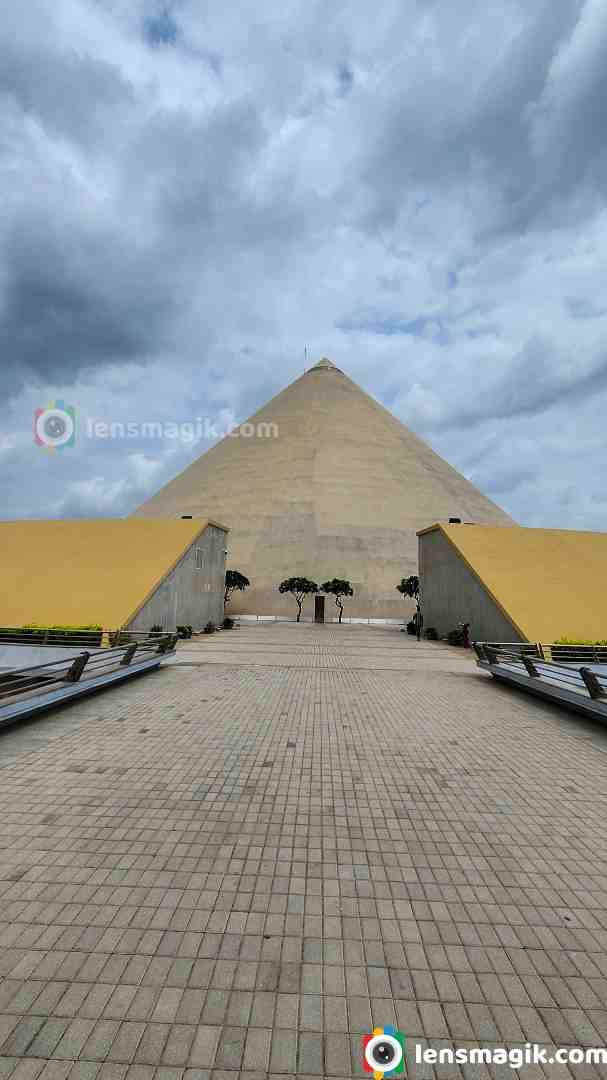
Entry Fee for Gandhi Kutir :
An entrance fee for Gandhi Kutir is 10 INR for Indians and 200 for foreigners. Free tickets for school and collage students but they have to submit request on school or collage letterhead. Free entry for disabled.
Timings for Gandhi Kutir :
Timings for Visit Gandhi Kutir is Tuesday to Sunday 10:30 AM to 5:00 PM . Monday Gandhi Kutir visit is closed.
How To Reach Mahatma Mandir :
Nearest Airport is Ahmedabad. From Ahmedabad airport to Mahatma mandir is around around 20-22 km distance.
Nearest Railway station is Gandhinagar railway station.
Hotels near Mahatma Mandir : The Leela Hotel located on Railway station near to Mahatma Mandir . It is 5 star hotel so bit costly. Also cheap hotels available in Gandhinagar too.
Places to Visit Near Mahatma Mandir : Adalaj ni Vav is the nearest place to visit which was in between Gandhinagar and Ahmedabad. Also Narendra Modi Stadium which was world's largest cricket stadium.
Read more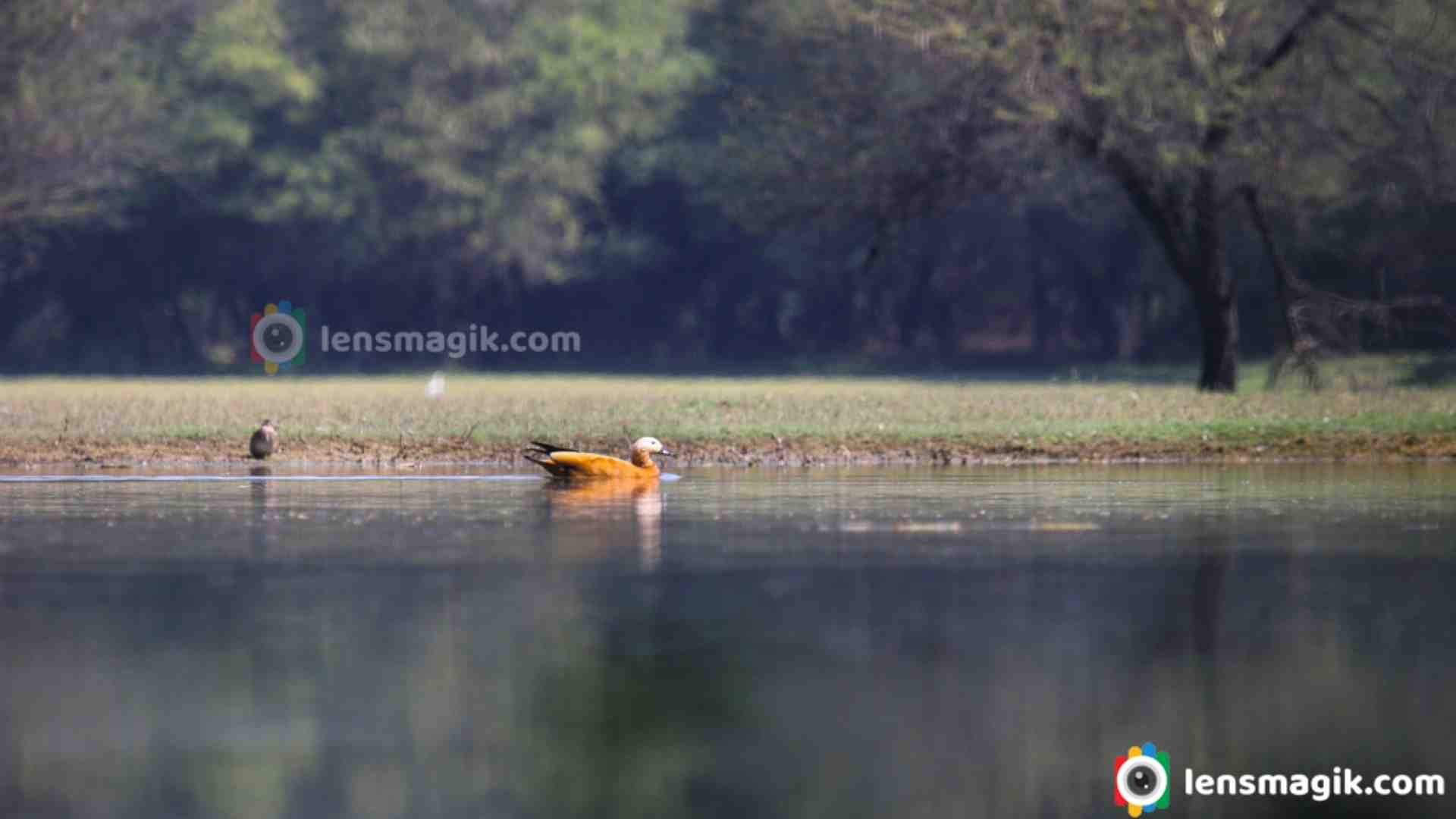
Ruddy Shelduck is migratory bird in India and also in Gujarat. It is generally found in many wetland areas and bird sanctuary like Thol Bird Sanctuary, Nal Sarovar , Little rann of Kutch , Pariej Wetland etc. It is known as Brahminy Duck in India. They are resident in Northwest Africa and Ethiopia. Their main breeding area are southeast Europe, China and Mongolia. Ruddy Shelduck is common winter visitor in India during October to April. Ruddy shelduck generally found near lakes, rivers , reservoirs and water bodies. Ruddy shelduck is the member of shelduck Genus Tadorna in wildfowl family Anatidae.
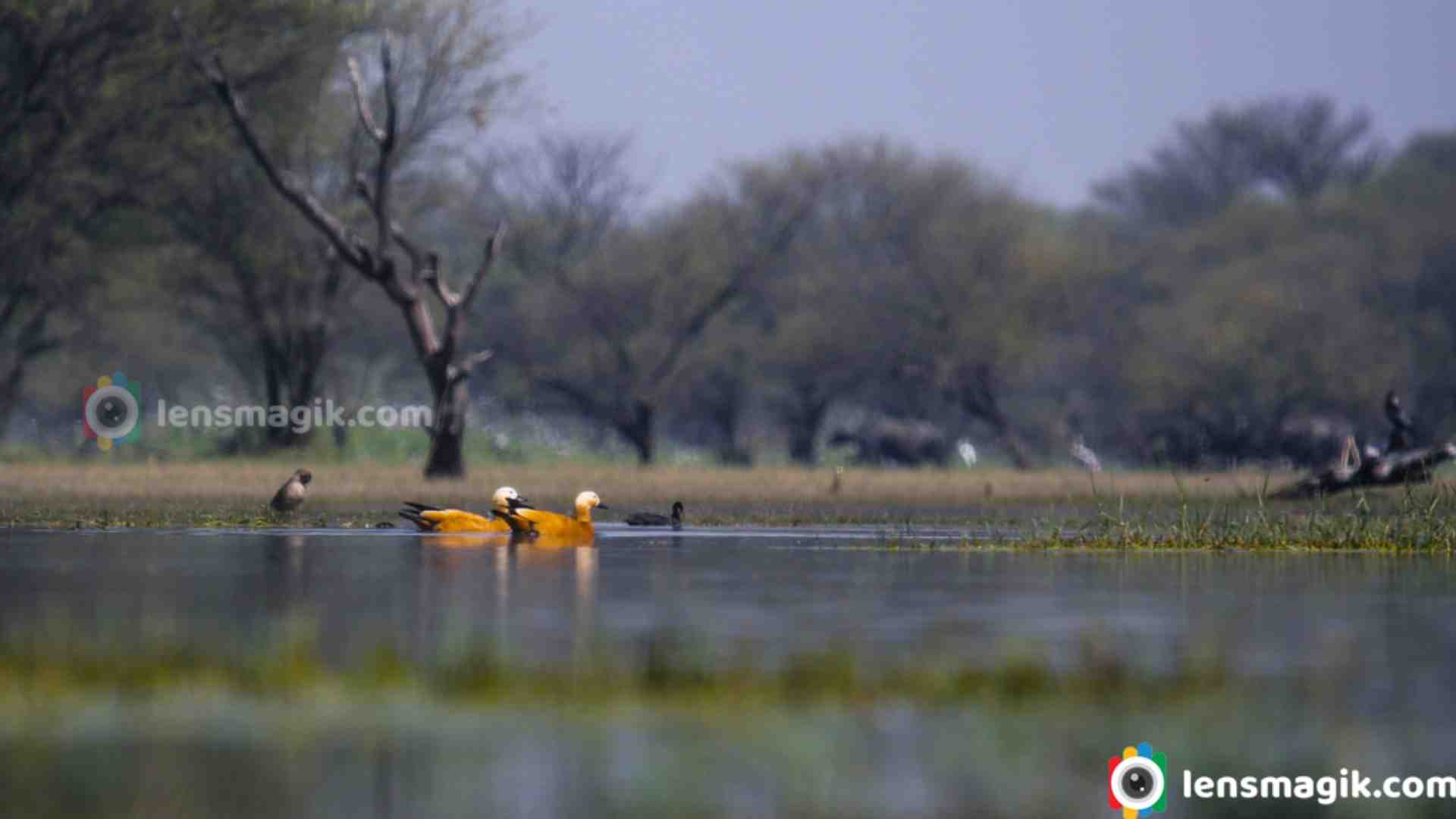
Description and Facts about Ruddy Shelduck :
- Length of ruddy shelduck is around 56-70cm . With wingspan length is around 110-135 cm.
- Ruddy shelduck body is orange brown, head is paler , tail is black and wings feather during flight is black also.
- It is migratory bird in India during winter . It breeds in Central Asia, southeast Europe .
- Female Ruddy Shelduck lays around 8 eggs . Female incubate them for four weeks.
- Ruddy Shelduck call loud nasal honking notes in series. They can call from ground and from air also.
- Juvenile is darker brown shade but very similar to female.
- Ruddy Shelduck is mainly nocturnal bird. It is omnivorous and feed grass, plants, grains and aquatic invertibates.
- Population of Ruddy shelduck is around 170000 to 225000 approx.
- Ruddy shelduck is in least concern bird list in IUCN list
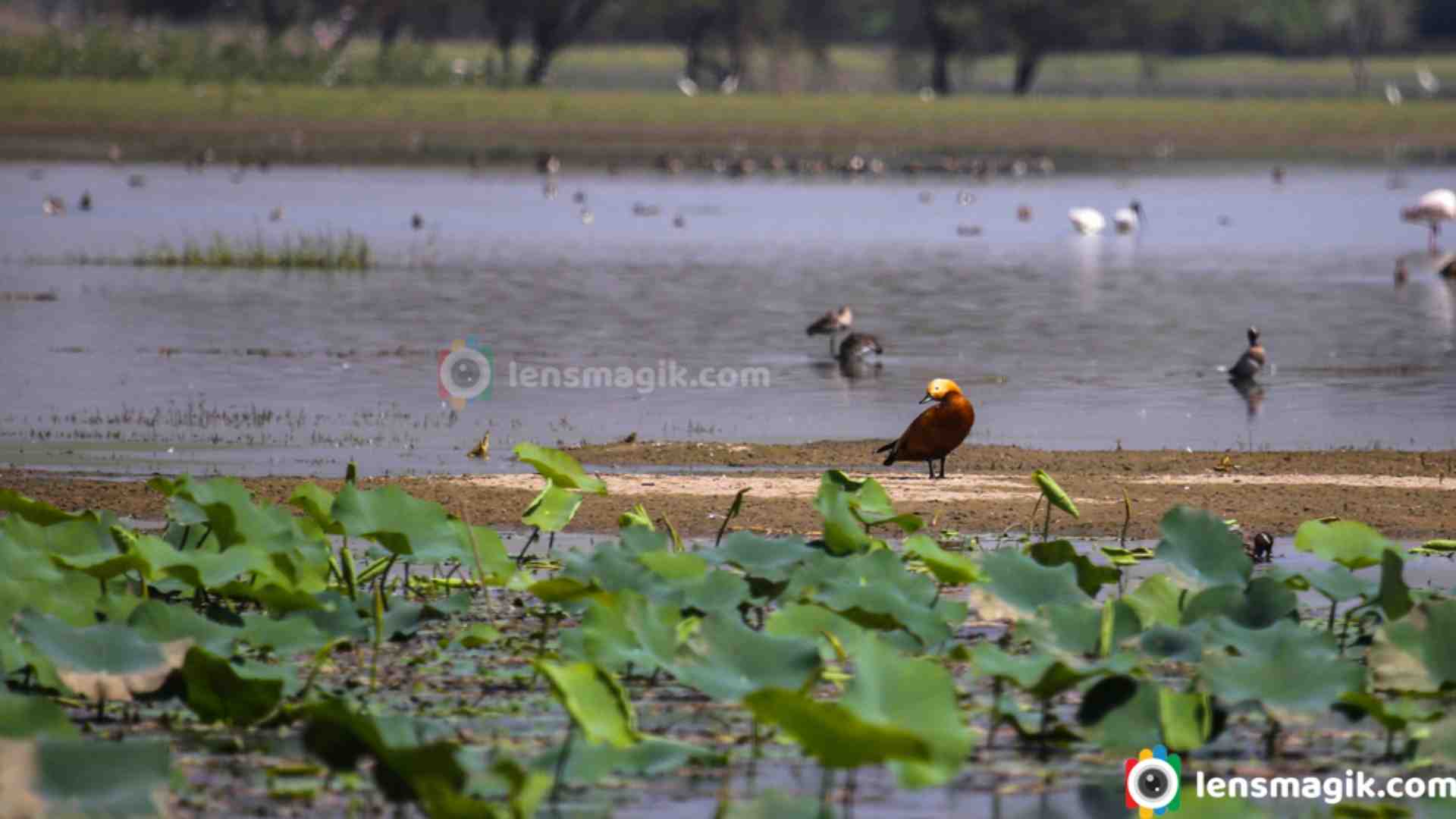
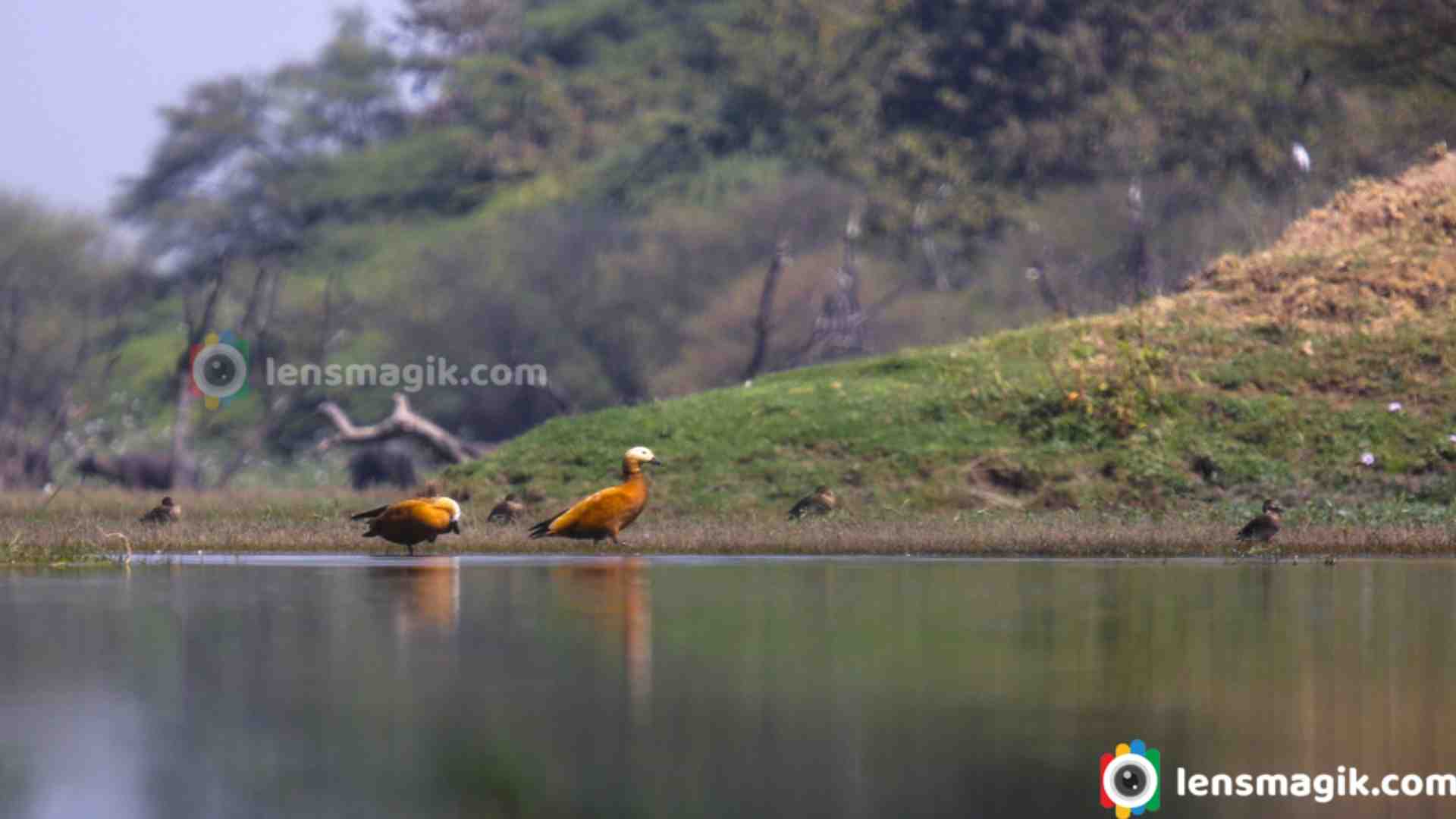
Ruddy Shelduck found in pair and small groups. They rarely found in flocks. It had been recorded more than 4000 birds in Koshi Barrage and Koshi Tappu Wildlife Reserve in Nepal. Also a 10000 recorded at Lake Duden in Turkey. In Gujarat i found Ruddy Shelduck at Thol Bird Sanctuary and also at Little Rann of Kutch. It is also found in many other wetlands like Nalsarovar Sanctuary, Pariej Wetland etc. Nearest bird sanctuary near Ahmedabad is Thol Bird Sanctuary where you can find more than 150 different spices of birds and also a migratory birds like Greater Flamingos, Great White Pelican, Ducks, Spoonbill , Bar Headed Goose etc.
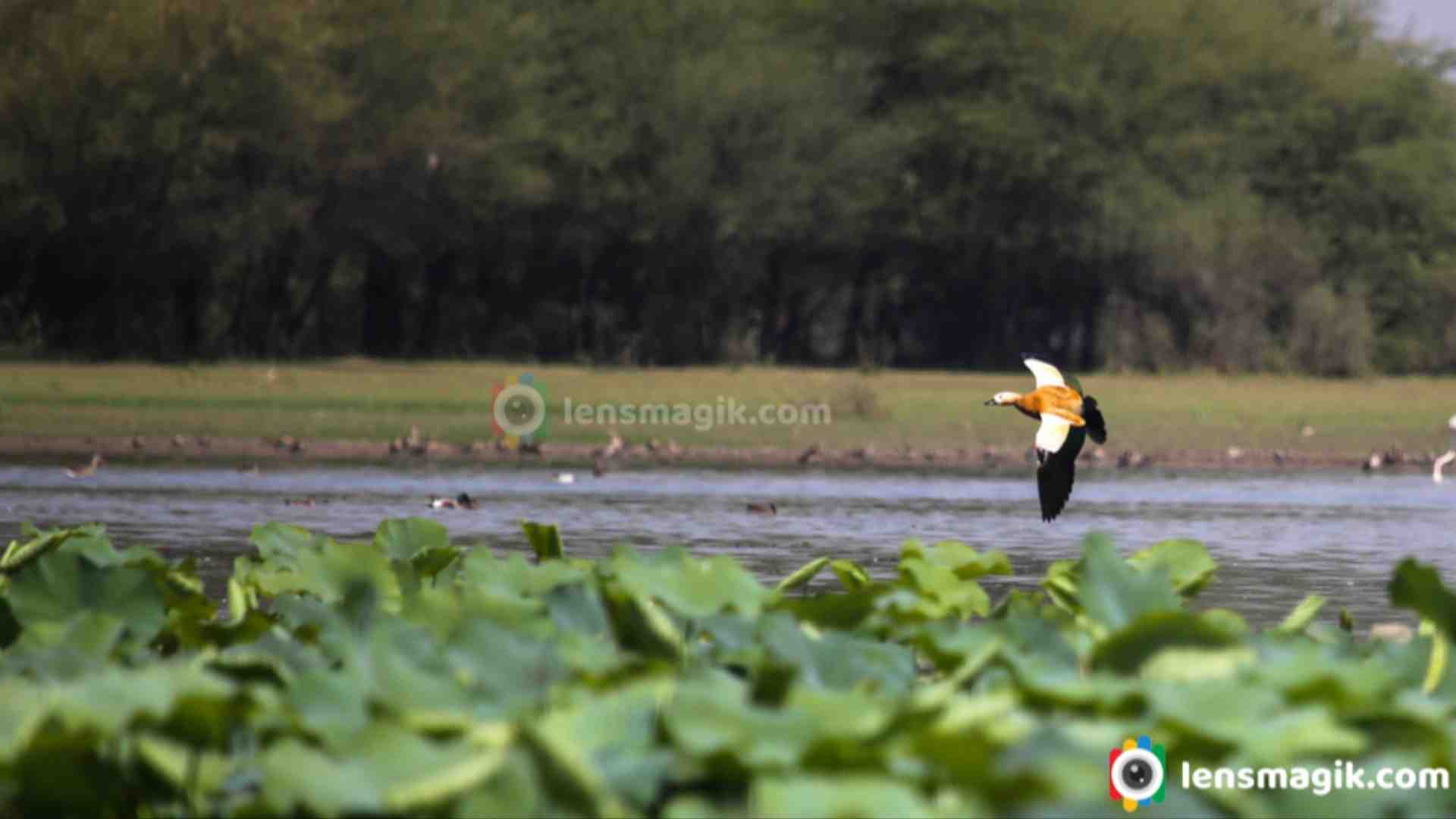
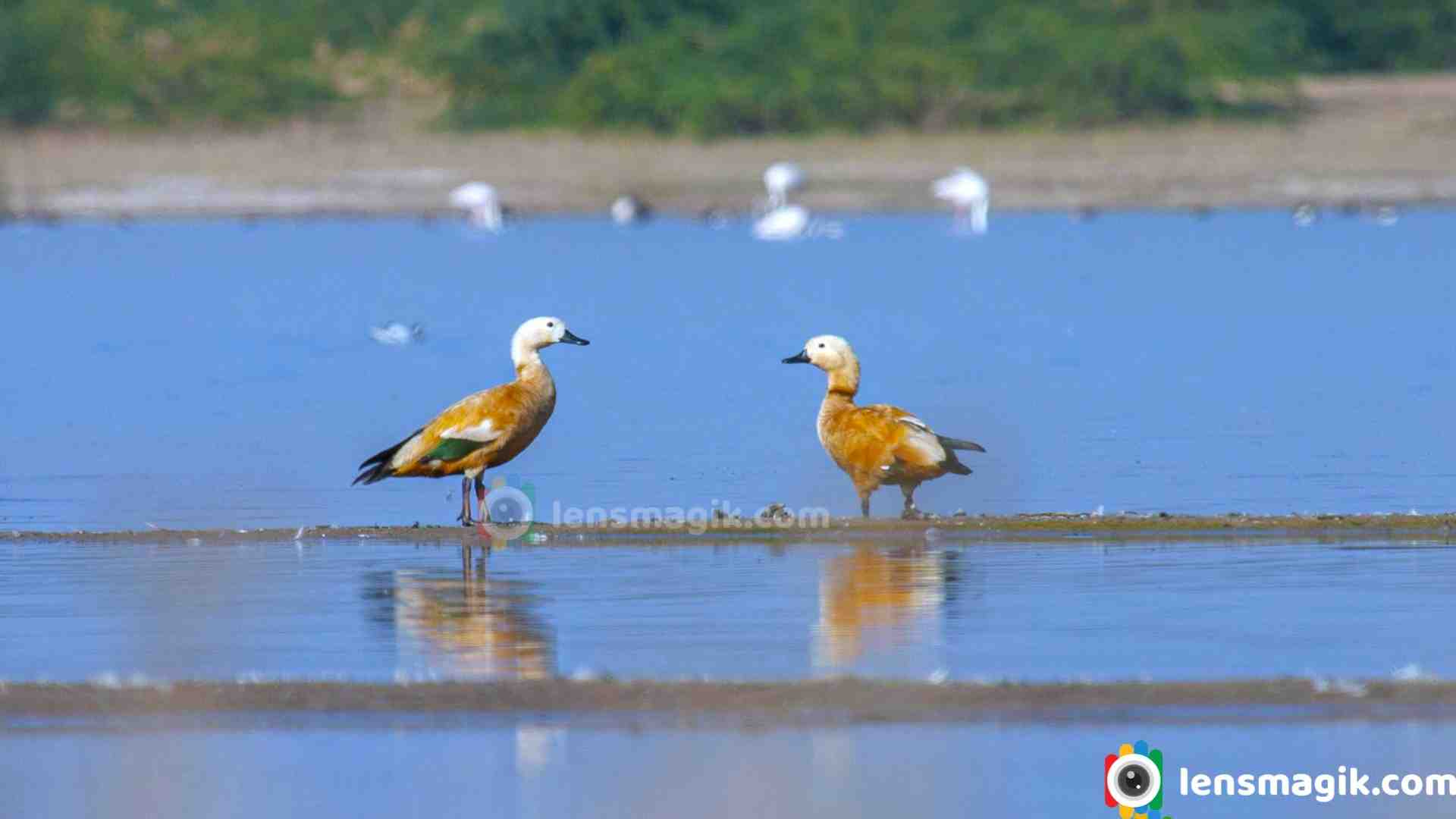
Camera used : Canon 6D, Canon 80D, canon 100-400mm lens
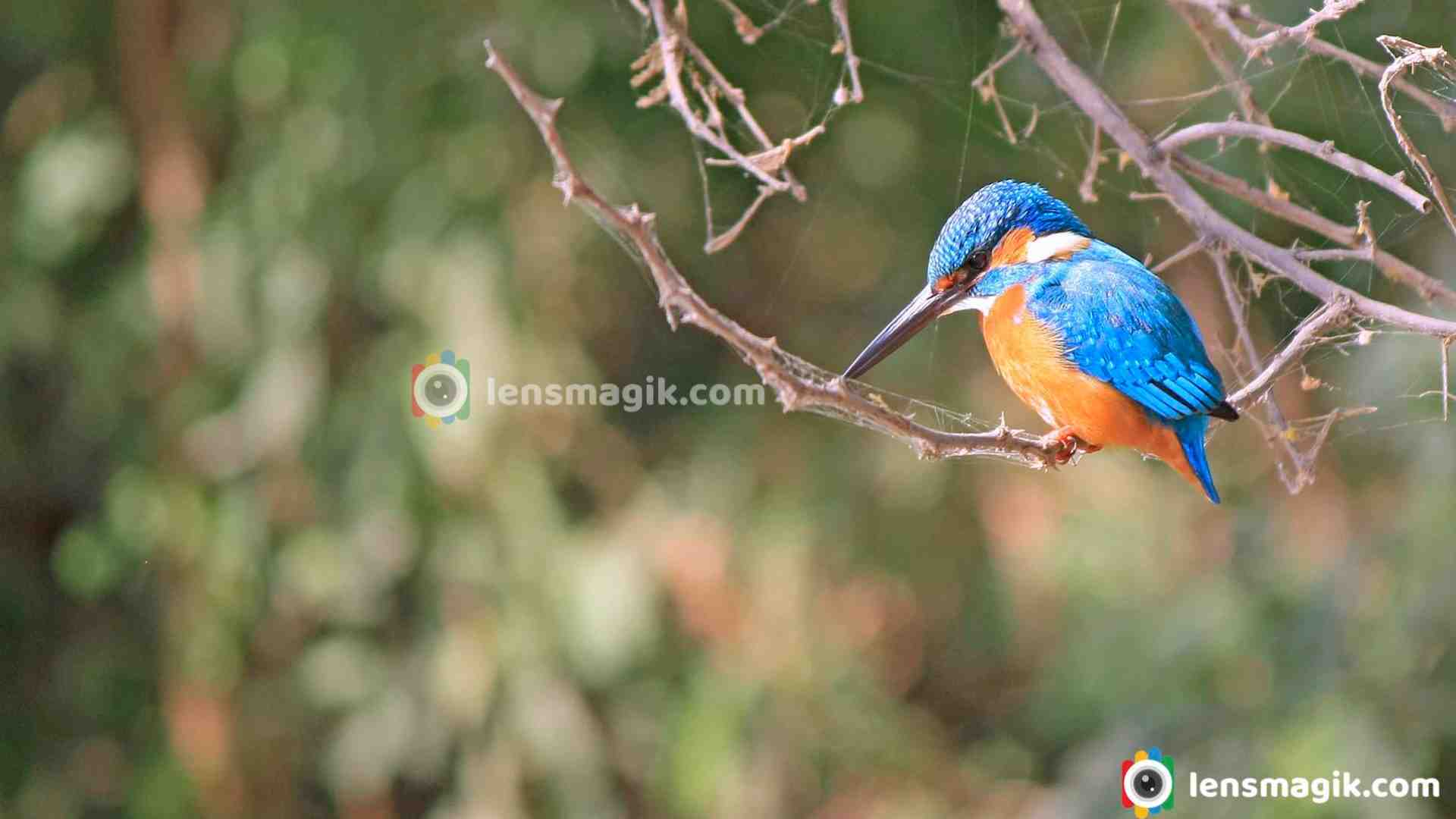
Common Kingfisher is also known as Eurasian Kingfisher or River Kingfisher. It is sparrow size bird with blue color on top of the body. It is widely distributed in North Africa and Eurasia. When rivers freezes in winter they migrate from their. In India common kingfisher also a widely distributed in all over region. They generally found near to the water areas like canals, rivers, river birdges, ponds etc. I took a shot of common kingfisher or Eurasian Kingfisher at Thol bird sanctuary located in Gujarat near Sanand.
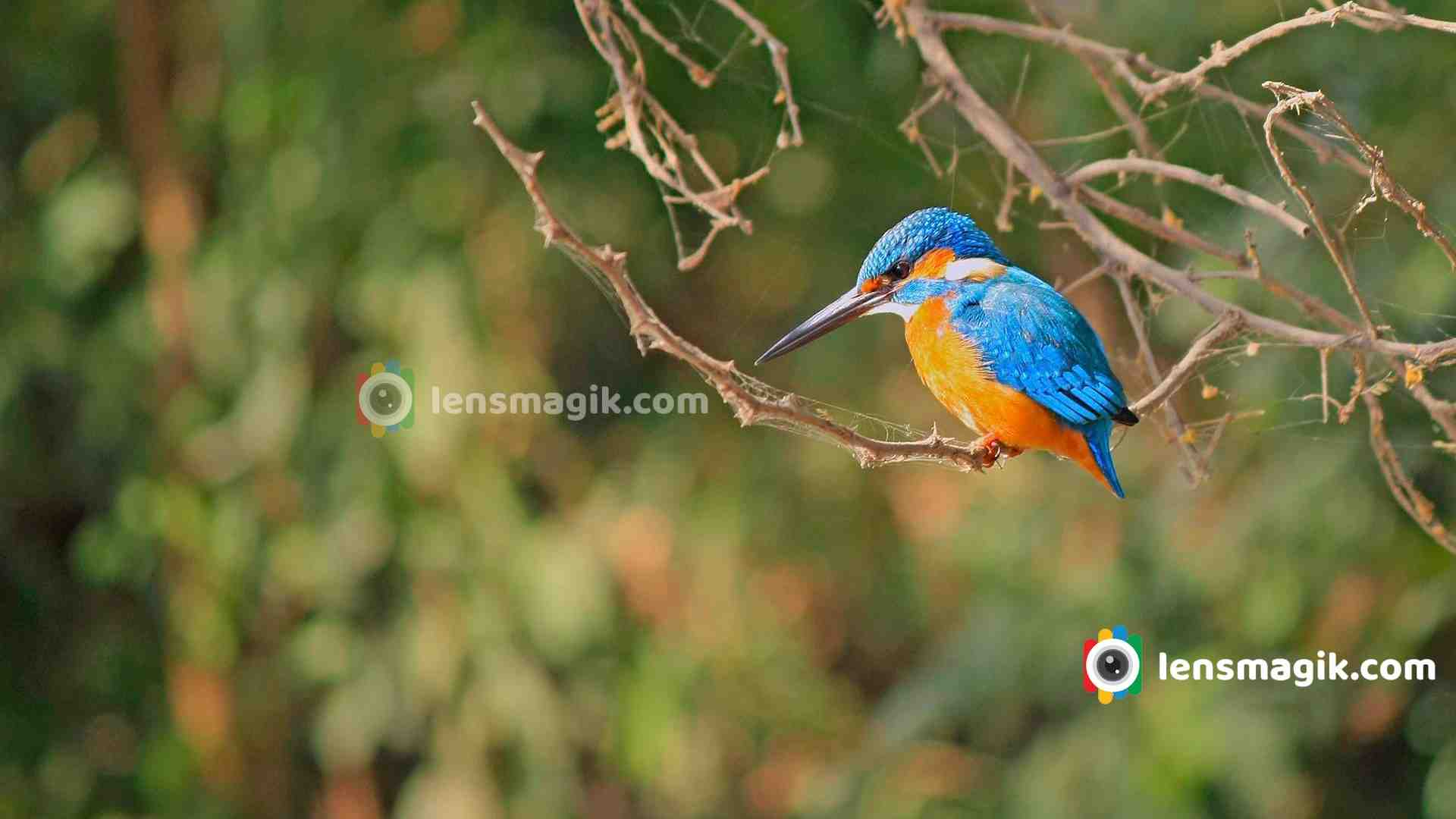
Description and facts about Common Kingfisher :
- It is about 16cm long and 25cm with wingspan.
- Its weight around 35-44 gm.
- It has short tail as all kingfisher tail is short.
- It has green blue upperparts and it has green blue neck stripe.
- Juvenile is similar to adult but dull underparts.
- Main flight feathers moult between july to november and it will takes 90-100 days to grow.
- Kingfisher flight too fast on low water.
- It is widely distributed in Europe, Asia and North Africa ( winter visitor ).
- Common kingfisher eats 60% of its body every day.
- Common Kingfisher lays 2-10 eggs which are white glossy in color.
Common Kingfisher in Gujarat :
Common Kingfisher or Small Blue Kingfisher found in Gujarat at many places like Thol Bird Sanctuary, Nalsarovar Bird sanctuary, Velavdar Sanctuary and many other outskirts of Wetlands too. They are very small and cute in look. There are lots of kingfisher bird spices found in Gujarat also.
Read more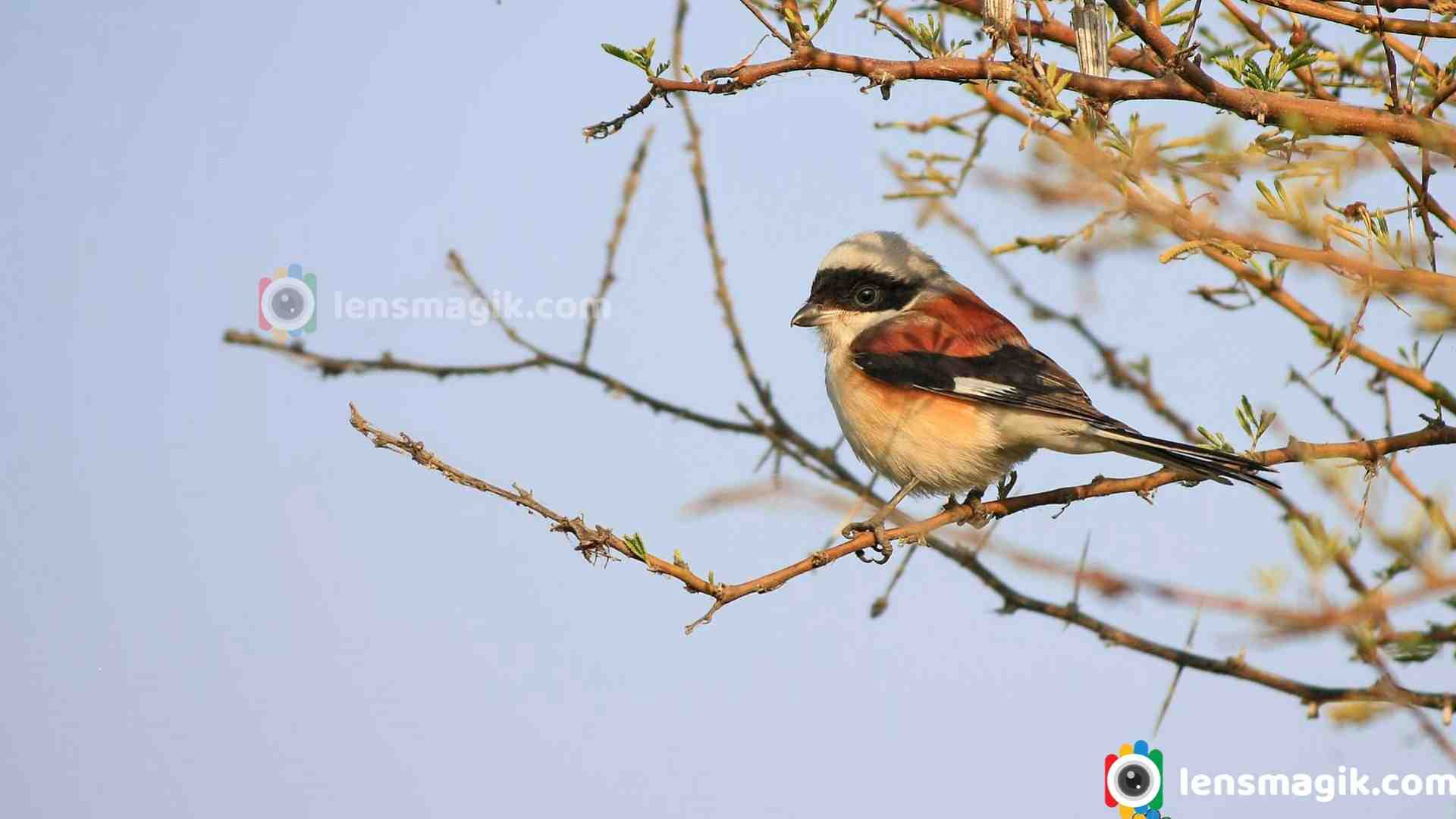
Bay backed Shrike is generally found in south Asia and it is resident bird of south Asia. In Gujarat it found many places and near to agriculture areas. Also found in Thol Bird Sanctuary, Nal Sarovar Sanctuary and many other sanctuaries . It is member of bird family Lannidae. Binominal Name of Bay Backed Shrike is Lanius Vittatus. It is generally found in India, Pakistan, Nepal and Afghanistan and also in Shri Lanka. In Lannidae family there are total 34 spices of shrike found in different places.
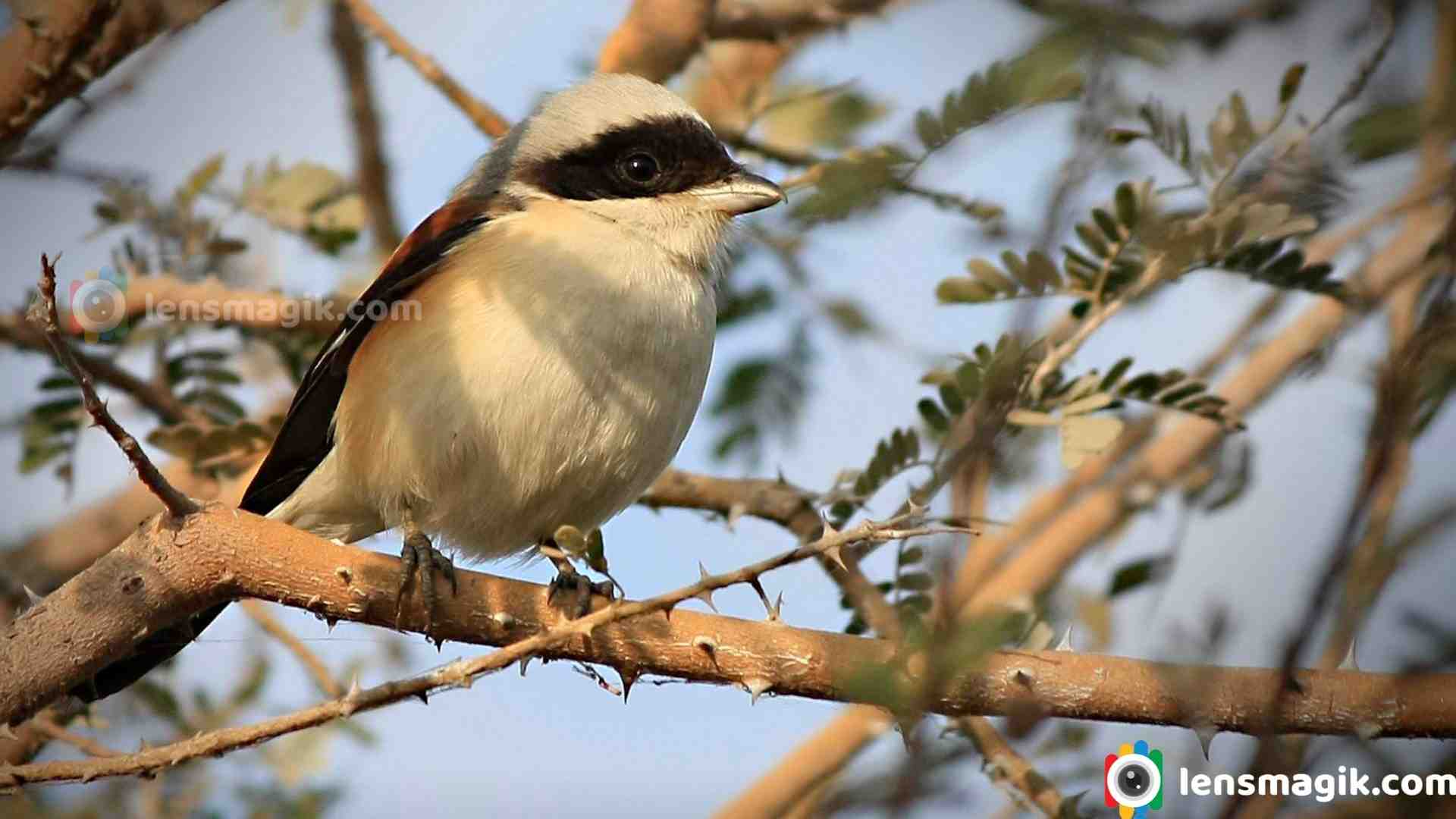
Description and facts about Bay Backed Shrike
- Bay Backed Shrike is smallish shrike.
- It has long black tail and maroon brown above parts with pale rump.
- Bay backed shrike Underparts are white.
- On the eye of Bay backed shrike there is a black strike like a bandit mask.
- Legs and bill are dark grey in color.
- It built nest in bush, cultivation area or scrubby areas.
- It lays 3-5 eggs .
- They found generally in Pair.
- For hunting they fly 2 to 2.5 mt high from ground and catch food within 10 mt radius .
- Shrike has good eyesight and sharp beaks.
- Status of Bay Backed Shrike is least concern in IUCN list.
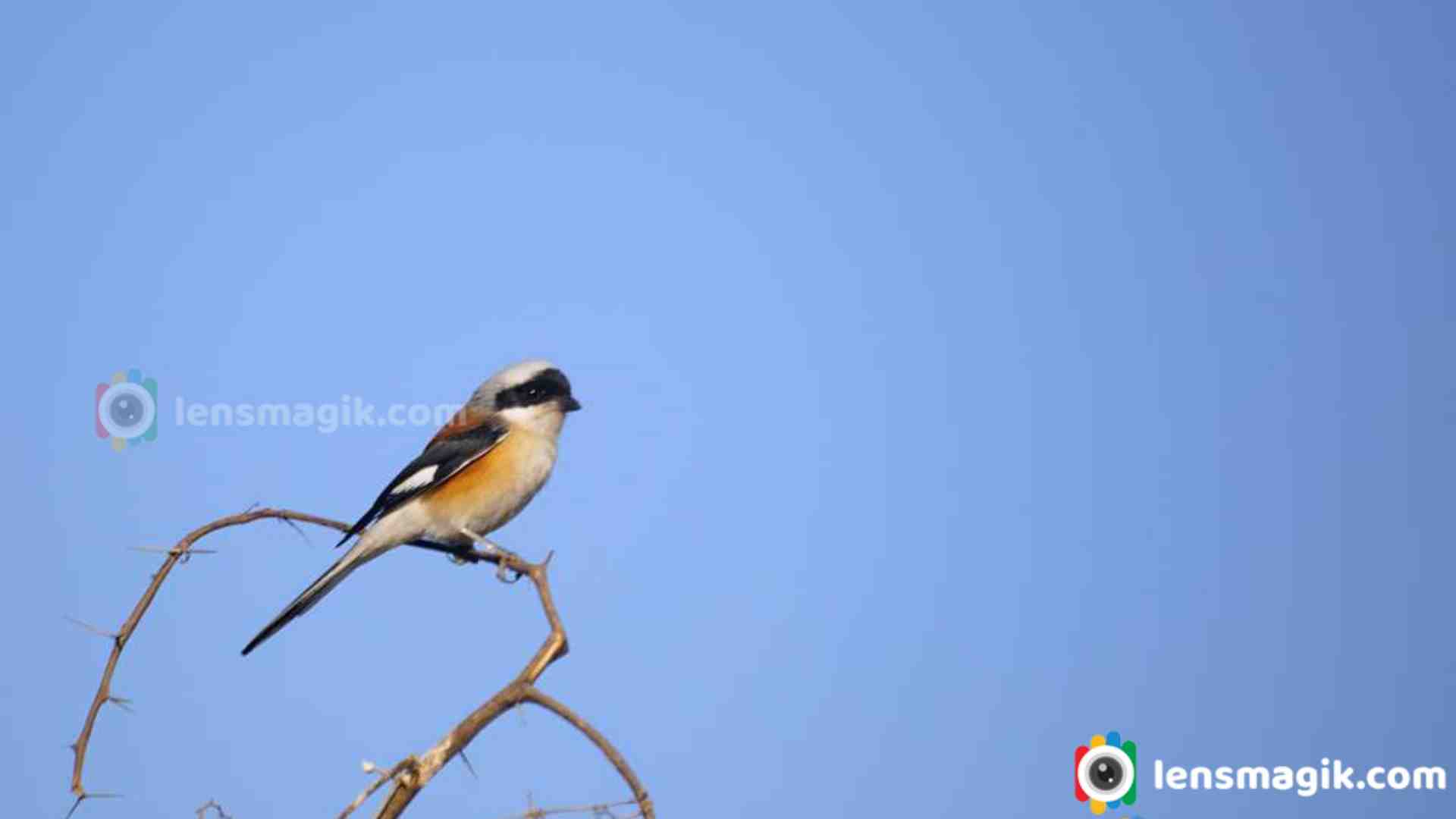
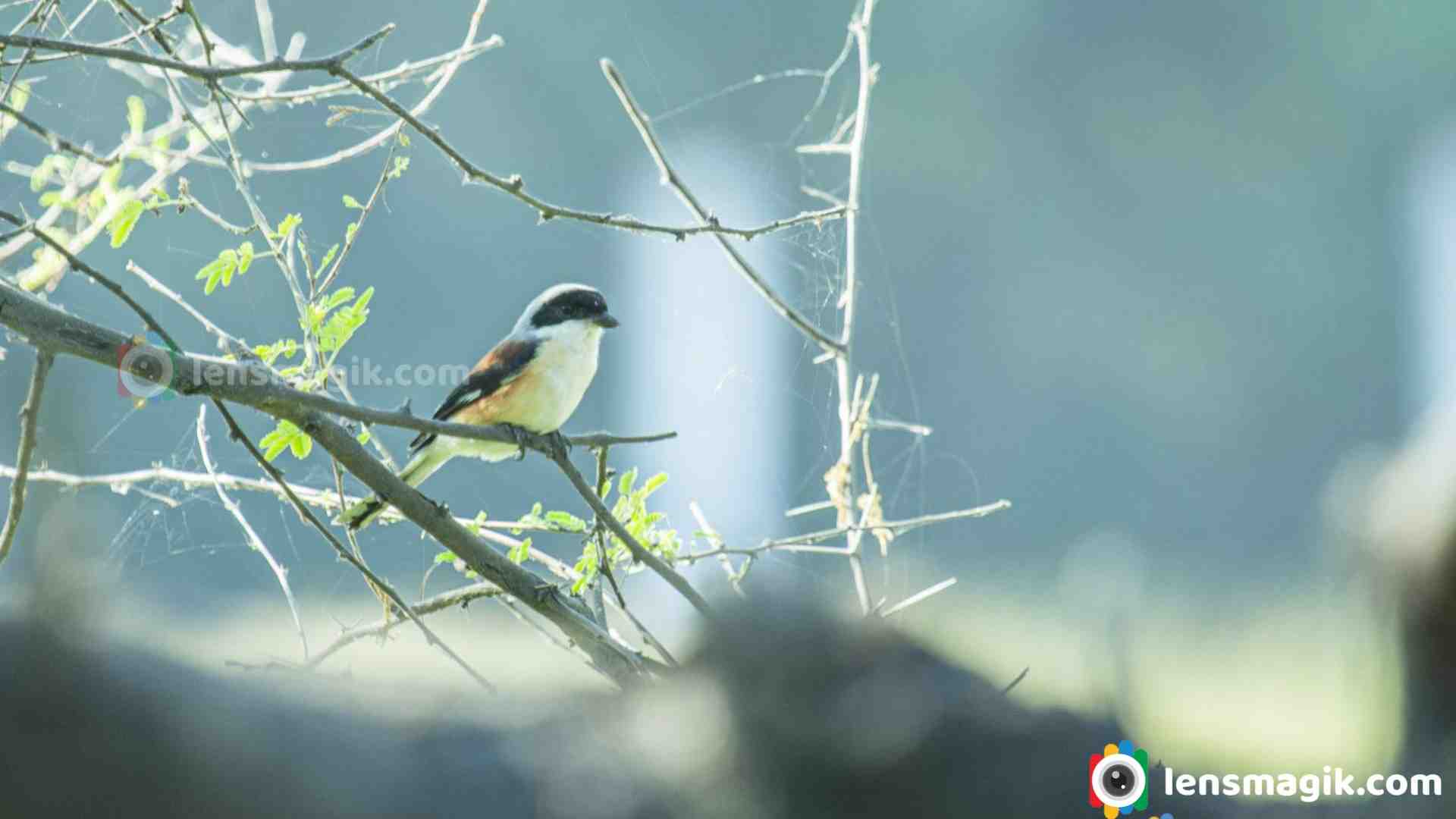
Bay backed Shrike is resident bird in Gujarat. It is found at many places like agriculture areas, farms, scrubby areas etc. I found it in Thol Bird sanctuary first time and then at agriculture areas outskirts it found easily. They find food easily near to agriculture areas and farms so they live near to them.
Camera Used : Canon 1000 D, Canon 6D, Canon 100-400 mm lens
Read more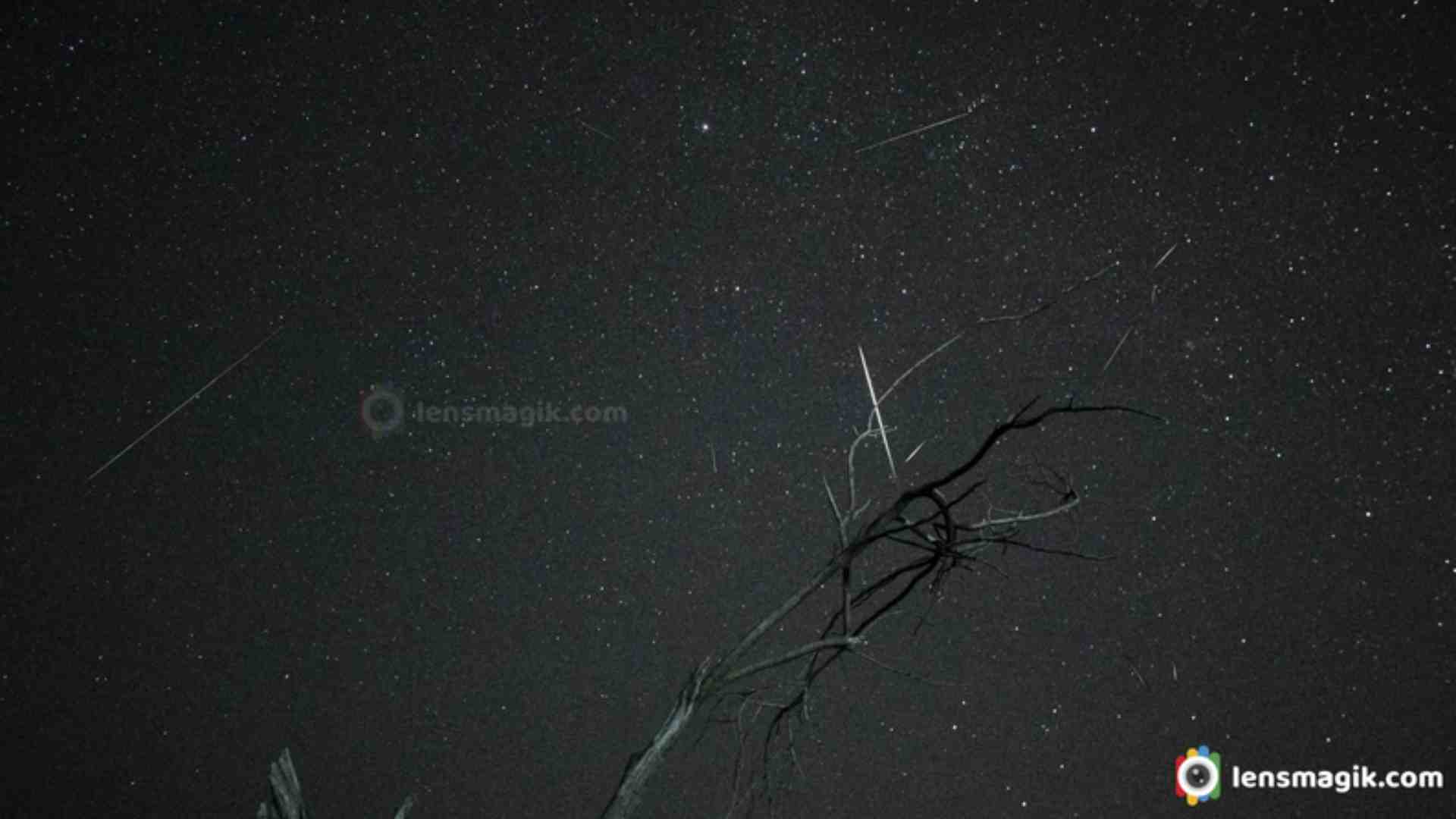
Meteor is a piece of rock in the sky. It is caused by meteoroid crashing through the Earth’s atmosphere. It looks like streak of light in the sky when it comes in the Earth’s atmosphere. Millions of meteors occur in the sky. They are looks like shooting star. As per the size of meteor you can see vary of streak of light in the sky. Big meteor make big streak of light and small meteor make small streak of light.
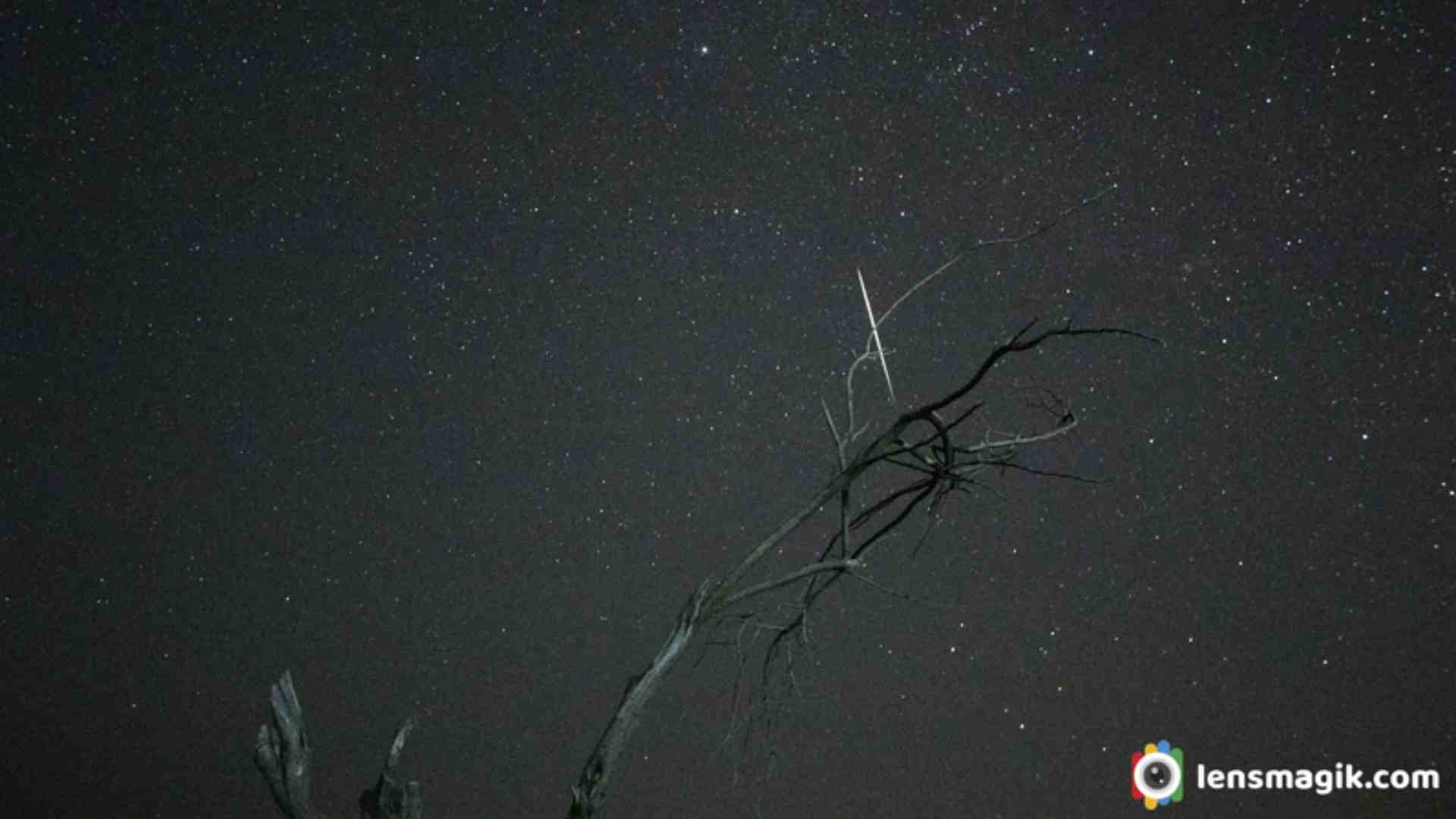
Geminids Meteor shower :
Meteors come from same place in the sky which is called Radiant. Meteors which appear to radiate from constellation Gemini is called Geminids Meteor Shower. Geminids Meteor shower appears in December every year. Geminids Meteoroids are 1000 years old. Geminids Meteor shower caused by object 3200 Phaethon . Geminids are fast and bright and also it is most favorite meteor shower among all meteor shower. Geminids meteor shower rises from Northeast side and can bring 30-40 at minimum side and 100 -110 at maximum side per hour. The maximum visible of meteors are on peak day of it around 100-120 meteors per hour. Geminids meteor shower rising time around 7-9 pm and its on peak at 2 AM to early morning . At 2 AM you can see maximum meteors of Geminids.
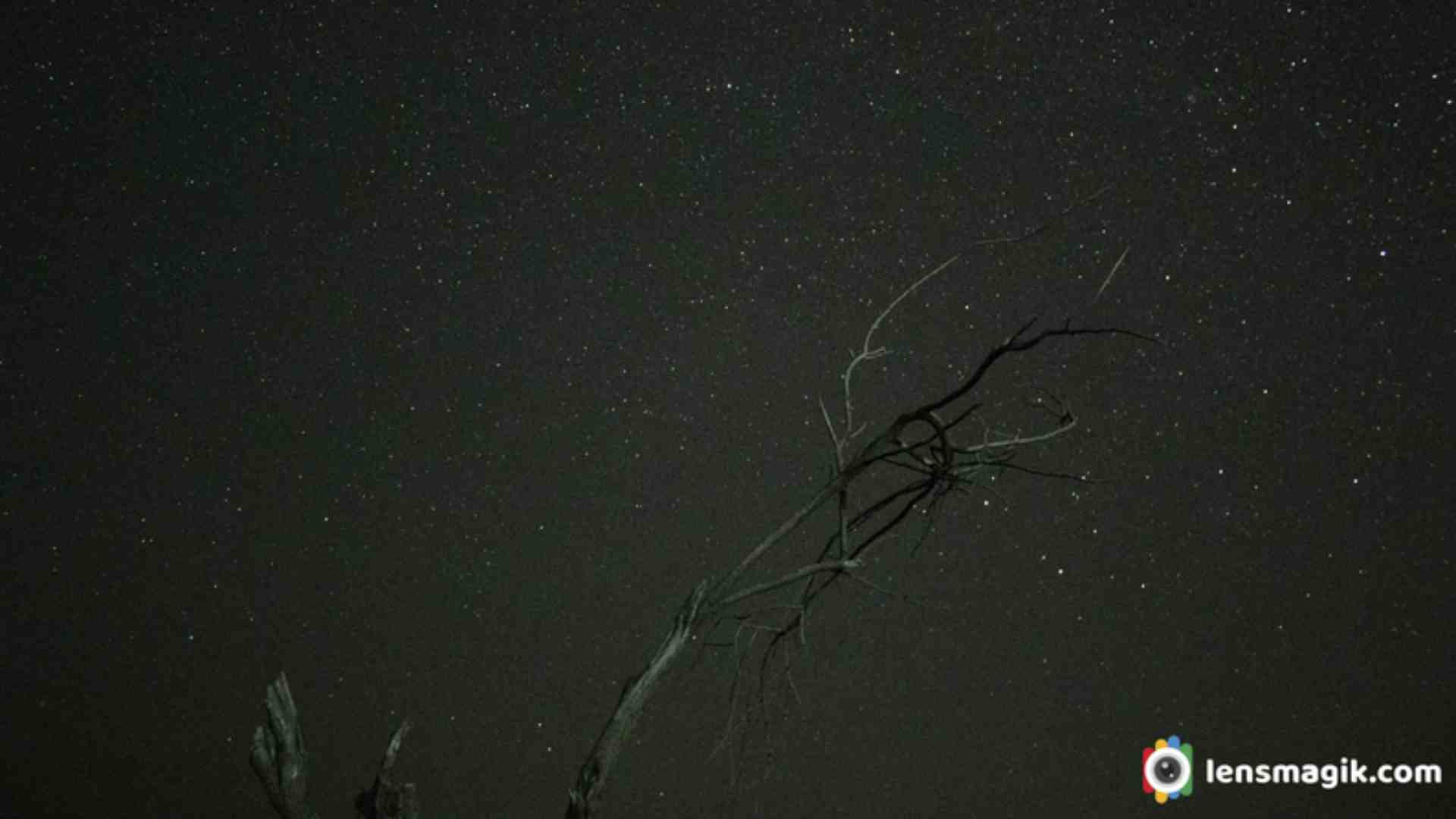
Time-Laps Photography of Geminids Meteor Shower :
To see meteors we need a dark sky and also low pollution area. First we need to choose best location for Astro photography or star trail photography or milky way photography or Meteor shower photography. We need to choose date when Geminids meteor is on peak . On peak date there is more chance to capture meteors in your camera. Choose an object in foreground for time-laps photography. Set up your camera on tripod with Interval meter. Focus on subject in foreground which you choose or make your camera lens focus on infinity. I had taken more than 200 photos in first frame and 150 photos in second frame.
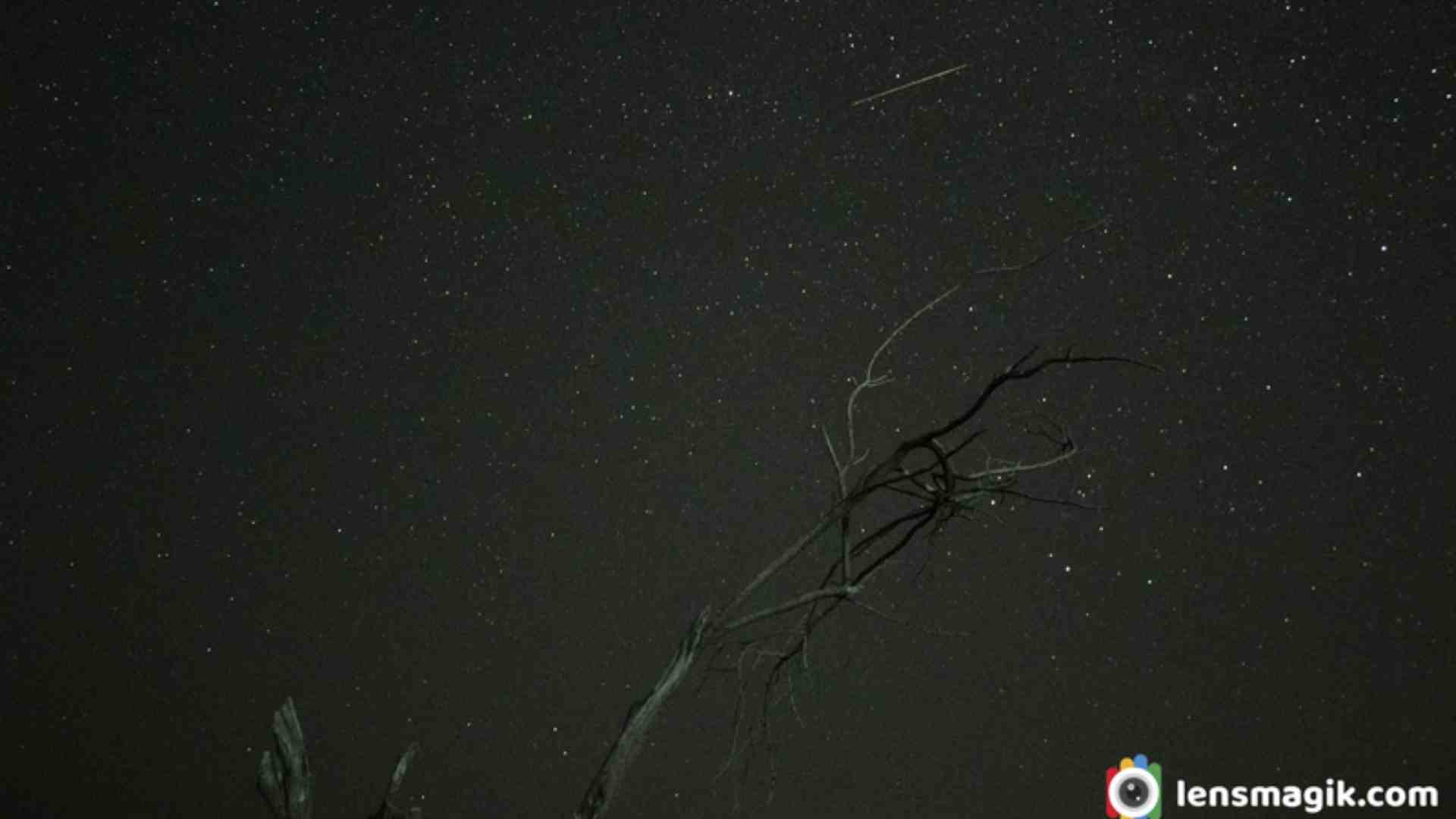
Time-Laps Settings for Meteor shower
- Set Aperture minimum as your lens supports. Best lens for star photography is 10mm, 14mm which lenses support low aperture like F/1.8 or F/2.8.
- Select manual focus for lens.
- Set interval meter shutter speed 20-25 seconds. More than 25 seconds your shutter speed may create star trail so set it to 20 or 25 seconds max.
- Set interval time around 20-25 seconds. Interval time you can decrease if you choose long exposure noise reduction off in your camera but I suggest to select interval time minimum 20 seconds.
- Set frames approx. 500 frames
- Set ISO in your camera 1600-3200 depending on your camera noise. For low noise full frame camera is the best option.
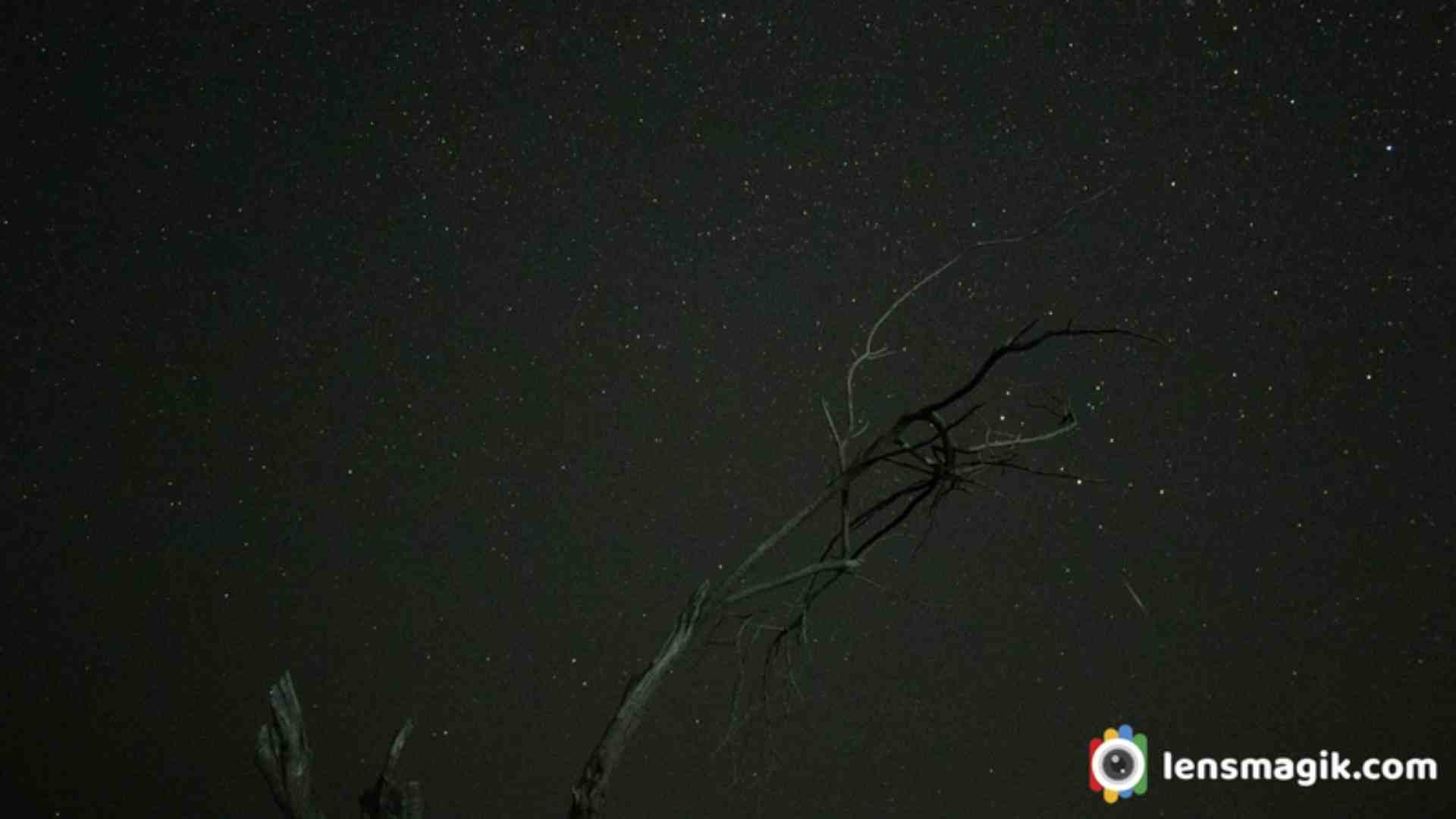
Best dark area finder app is
https://darksitefinder.com/maps/world.html#4/39.00/-98.00
https://www.darkskymap.com/nightSkyBrightness
For time and date of meteor shower visit
https://www.timeanddate.com/astronomy/meteor-shower/
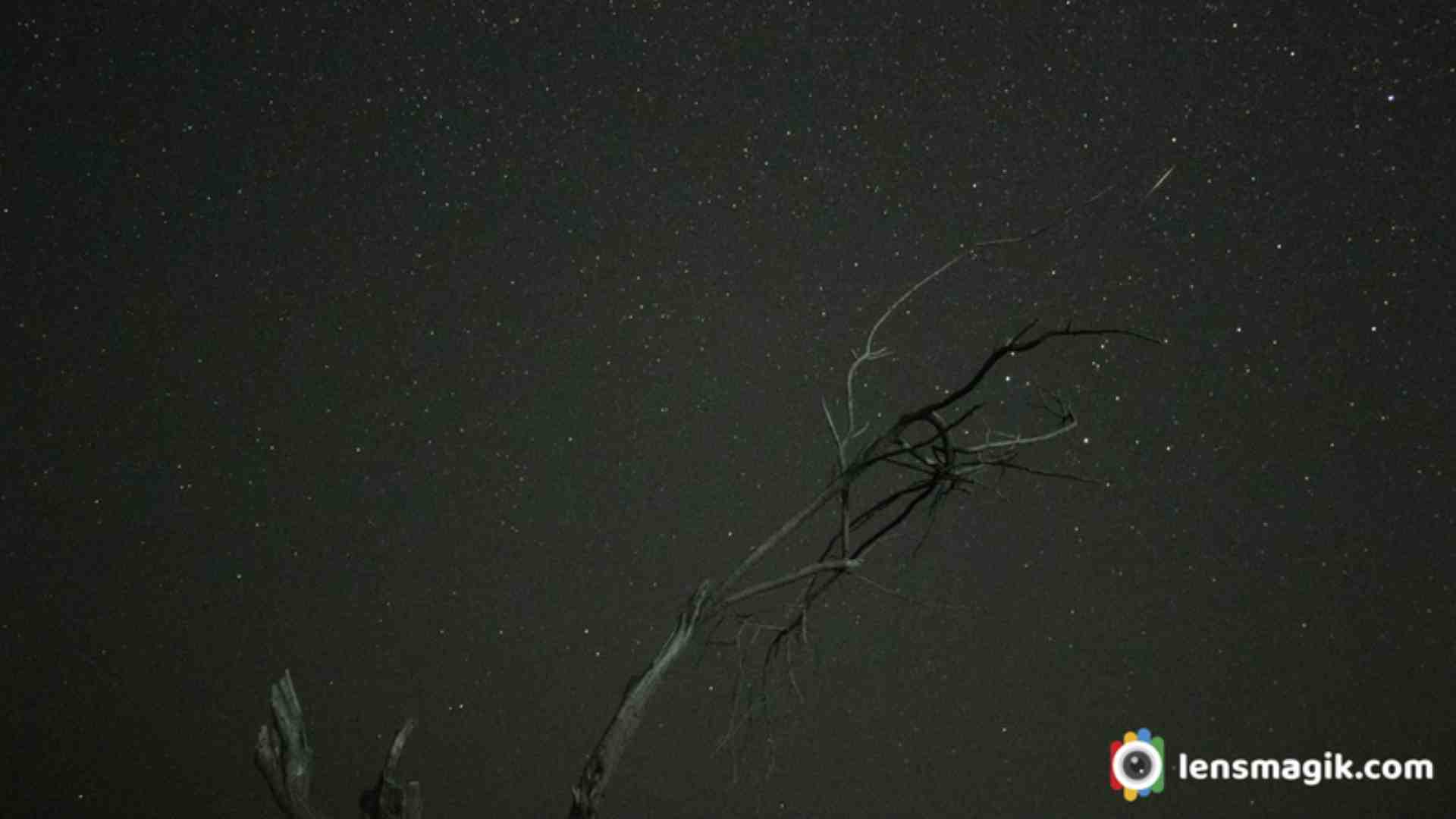
Post Processing Time-laps photos
After taking more than 500 frames in time-laps you need to see them one by one and check how many meteors are captured in the frames. Those frames in which you captured meteors merge them in 1 frame in photoshop or lightroom.
Also you can make a time-laps video in many software with selecting all your frames. I made video in Picasa software which made time-laps video easily. Only JPEG files selected in picasa so make sure your frames may in JPEG or convert in JPEG.
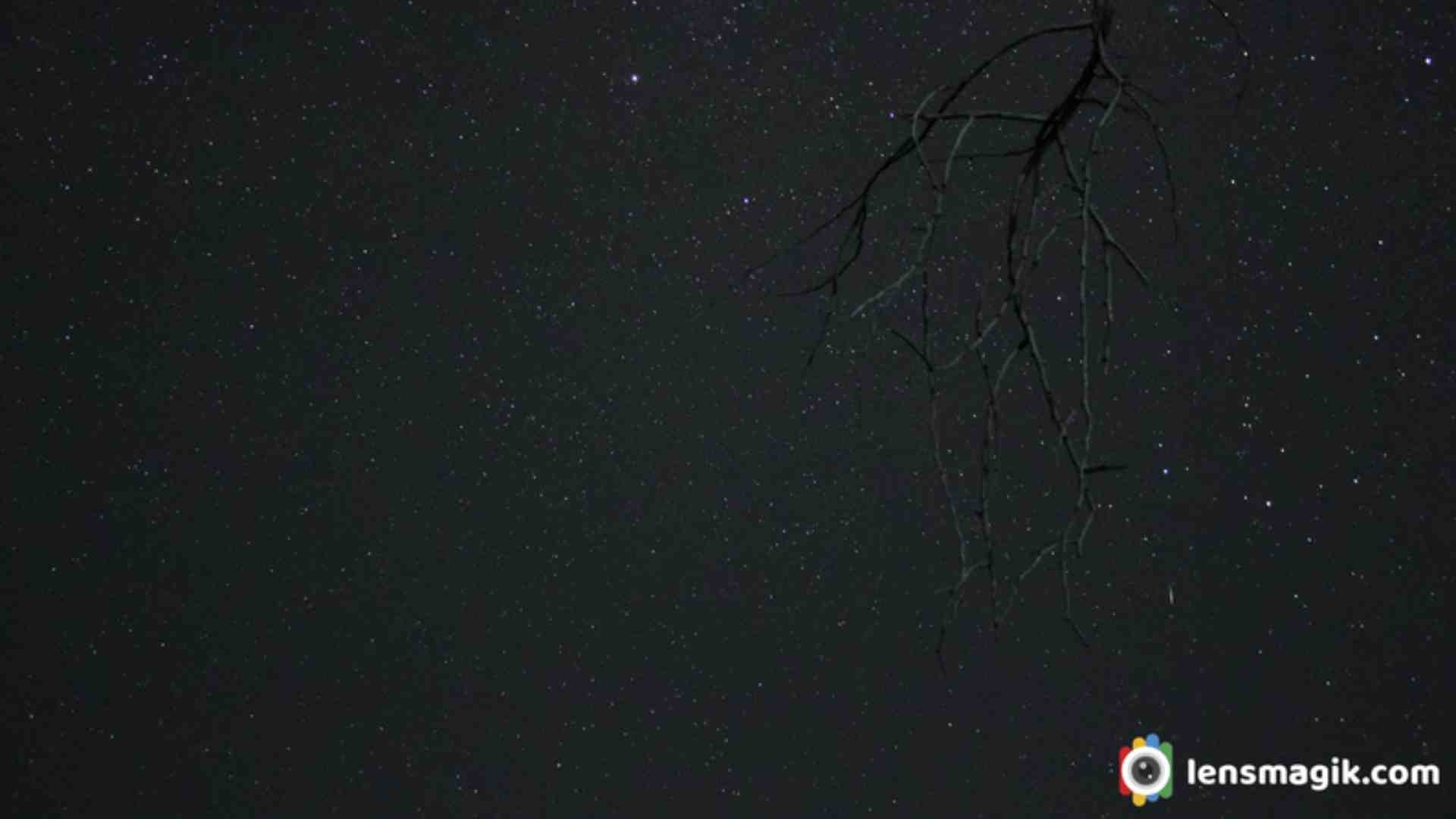
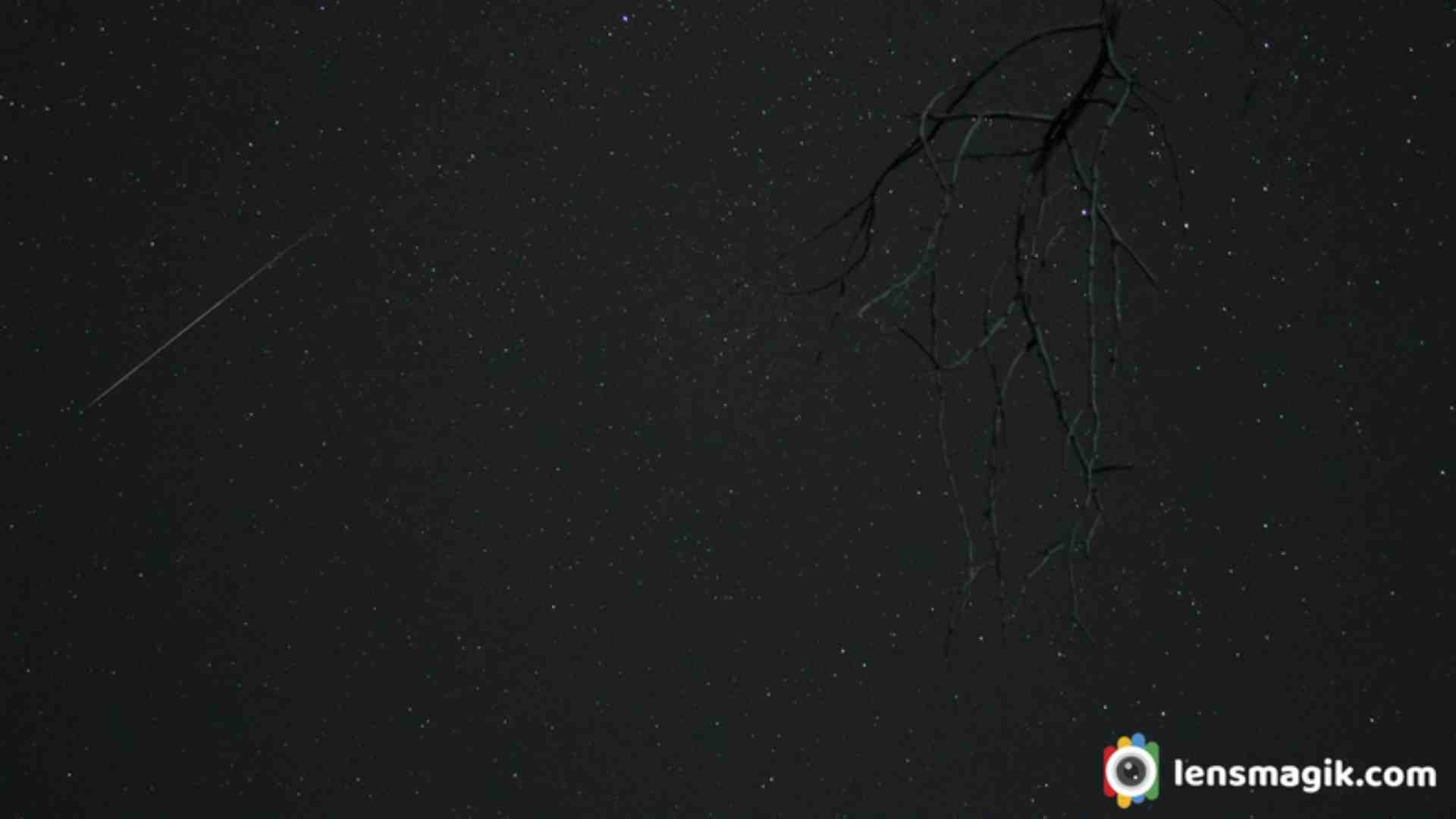
Geminids meteor shower is one of the best meteor shower among all meteor shower. In India you can see Geminids meteor shower very clear from dark areas. In Gujarat Little Rann of Kutch and Rann of Kutch area is best for Astro photography. Also Some areas near polo forest, Jessore Sanctuary and Dahod are good spots for night photography. There are also Perseids and Leonids meteor shower also most popular. But in India Geminids meteor shower is the best visible. Perseids meteor shower is occur in August but in India there is a monsoon season during perseids meteor shower. So i guess for India Geminids meteor shower is the best
Gear Used : Canon 80D, Canon 18-55 mm lens
Read more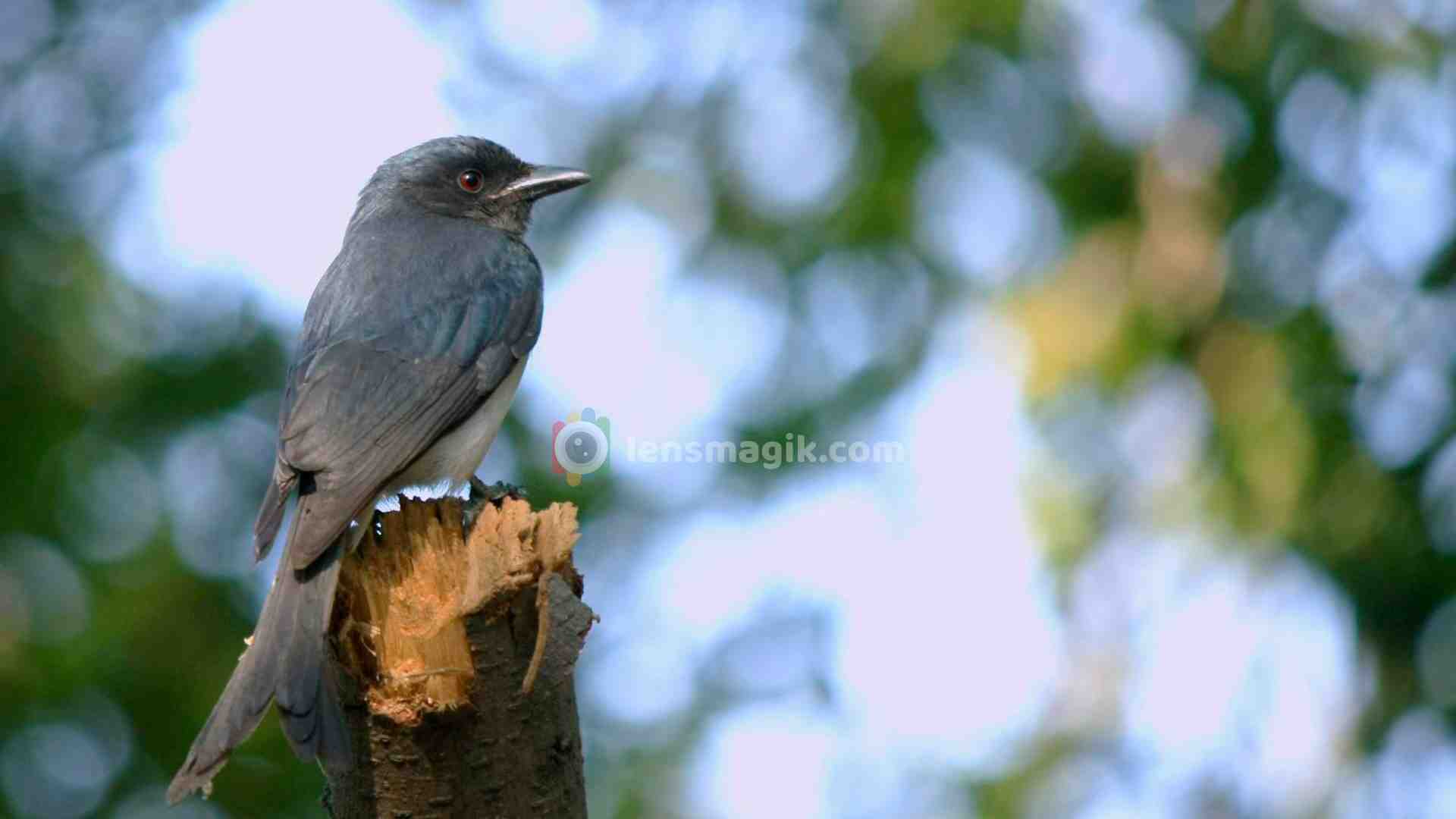
White Bellied Drongo is a spices of Drongo bird which is a member of Dicruridae family. The George Edwards which is English Naturalist used name The Fork Tail'd Indian Butcher Bird. It is generally found at open forest or dry scrub areas. I found it at Thol Bird Sanctuary near thol village , Kadi taluka. It is also a Dicruridae family bird which is very similar to black drongo only difference is white color in underparts. Tail is long and looks like fork .
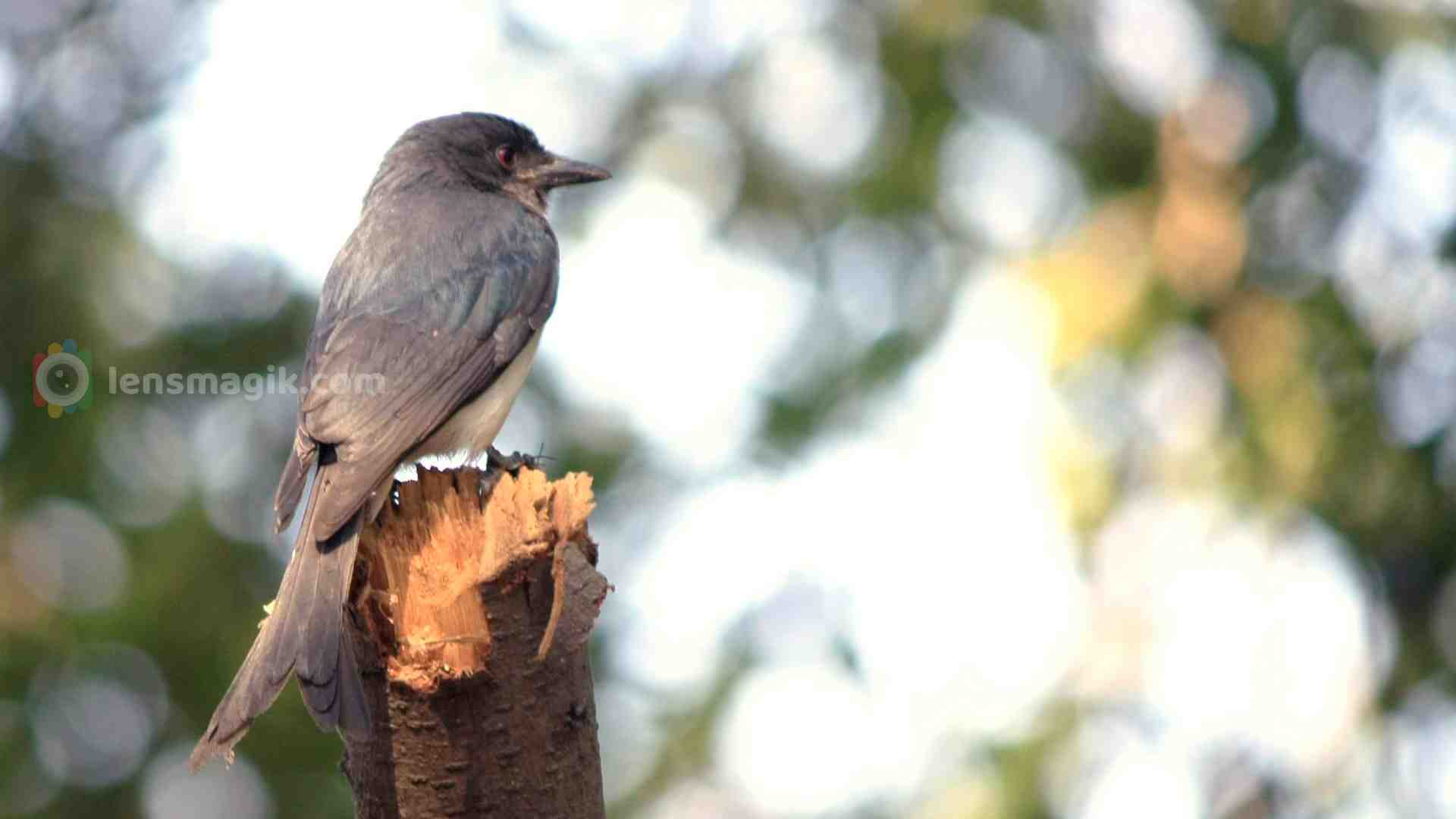
Description and Facts about White Bellied Drongo :
- White bellied Drongo is similar to Black Drongo . It has black body , greyish throat and belly is white.
- Tail is looks like fork and less deep then black drongo.
- Male has shorter tail then female.
- White bellied drongo found in forest and dry areas. It is a resident bird in India.
- They are in group of 2 or 3 generally.
- Breeding season for Drongo is February to July.
- They lay 2 -4 eggs on 20-30 feet height on tree.
Also a Black Drongo is very similar to white bellied drongo. In Thol Bird Sanctuary both spices found. Also they found an many other places of Gujarat because they are resident birds. Drongo bird is also very aggressive during breeding season and after laying eggs to protect them.
Photo Taken at Thol Bird Sanctuary, Gujarat
Gear used : Canon 1000 D with canon 55-250 mm lens
Read more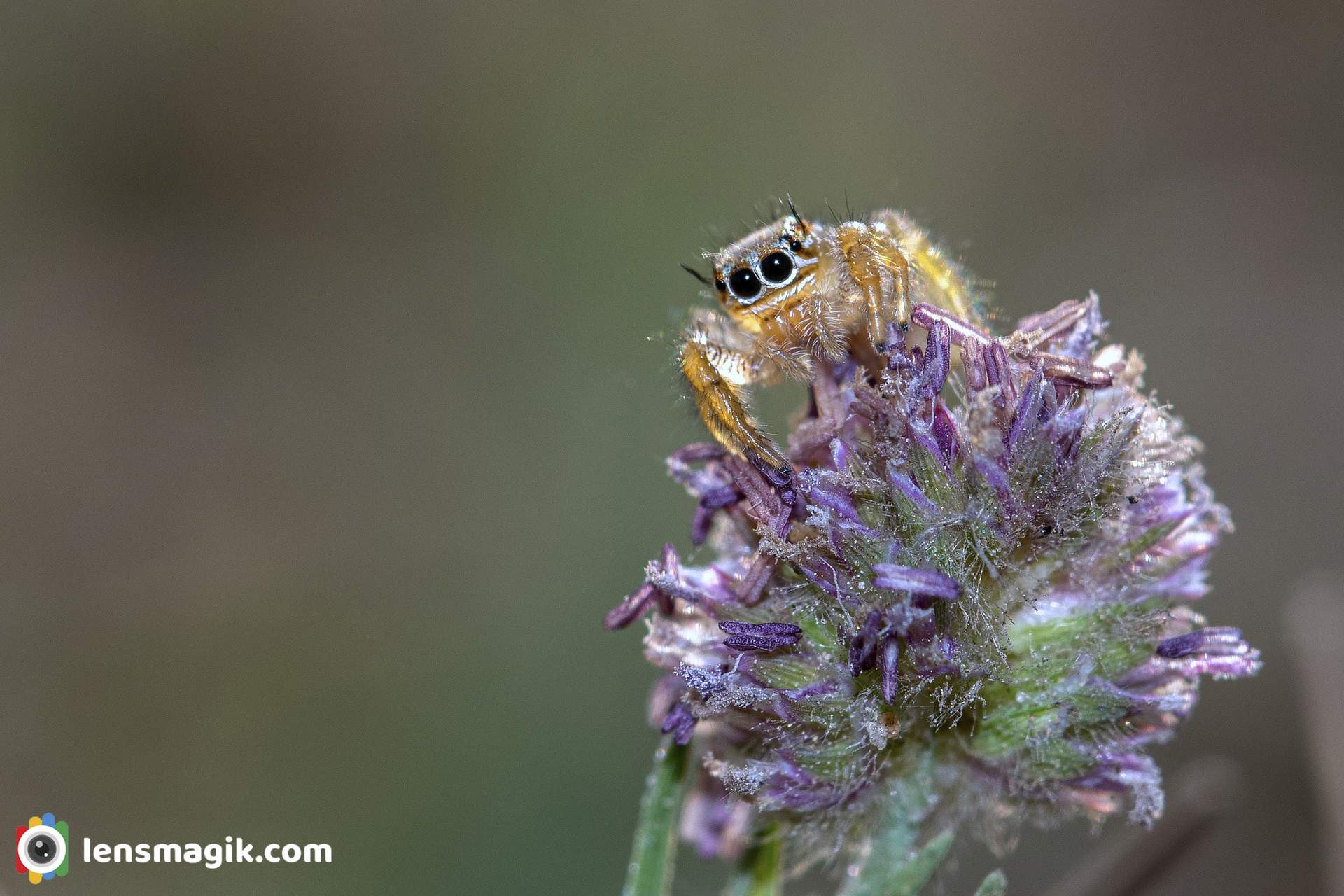
There are lots of Spider spices in the world. Spiders are good subject to shoot as a macro photo. Actually spiders are everywhere along to home and gardens. Jumping spider are group of spider constitute the family salticidae. This family contained over 600 described genera and over 6000 spices. Jumping spiders are easily identify from other spiders from their eyes and shape. The jumping spiders have faces that are roughly rectangular surface. The eyes are forward looking on flat face. The body length of jumping spider are around 1 to 25 mm. They generally found in forest , desert, scrub lands,temperate forest too. Toxicity of jumping spider is very less for humans. so jumping spider bite is not poisonous. Spiders are not insects because they belongs to family Salticidae and classified as Arachnids.

I found jumping spider during my trip to LRK ( Little Rann Of Kutch ). also its a live photography competition Name WILD CLICKS powered by canon in December 2019. Spiders in macro photography looks beautiful . For Macro Photography you need good light and good camera gears.
Some Facts about Jumping spider :
- The life of jumping spider is around 6 month to 2-3 years.
- Jumping spider are shy but you can easily catch them.
- They have 8 eyes.
- Once you will be familiar with spider then it enjoy your company.
- As per research of Miami university spiders like music.
- Generally they build their web in corners and dense trees , small plants etc.
- All spiders are predators.
- Jumping spider can change sudden blood flow in their body.
- Jumping spider do not use web for hunting.
- Jumping spider can dance also.
- Jumping spider can jump 10-50 times of their body.
- Jumping spider have 8 legs as all spider have 8 legs.
About Little Rann of Kutch :
LRK or little rann of kutch is a Wild ass sanctuary of Gujarat. Sanctuary for Indian Wild Ass but its also very well known for raptors and migratory birds. During winter some migratory birds like flamingos, pelican, bar headed goose, raptors, falcons, eagles, owls are regular visitors. So the sanctuary is more important for wildlife in Gujarat where you can find all birds, mammals and also 360 view of rann of kutch. Also some wetland areas near rann are beautiful for sunset and sunrise. You can also get some good macro photos of insects of rann for making good theme of COLORS OF RANN. I tried to shoot this spider with background of sun but its too hard for me . because it cant steady on one place for a second but got good pictures.

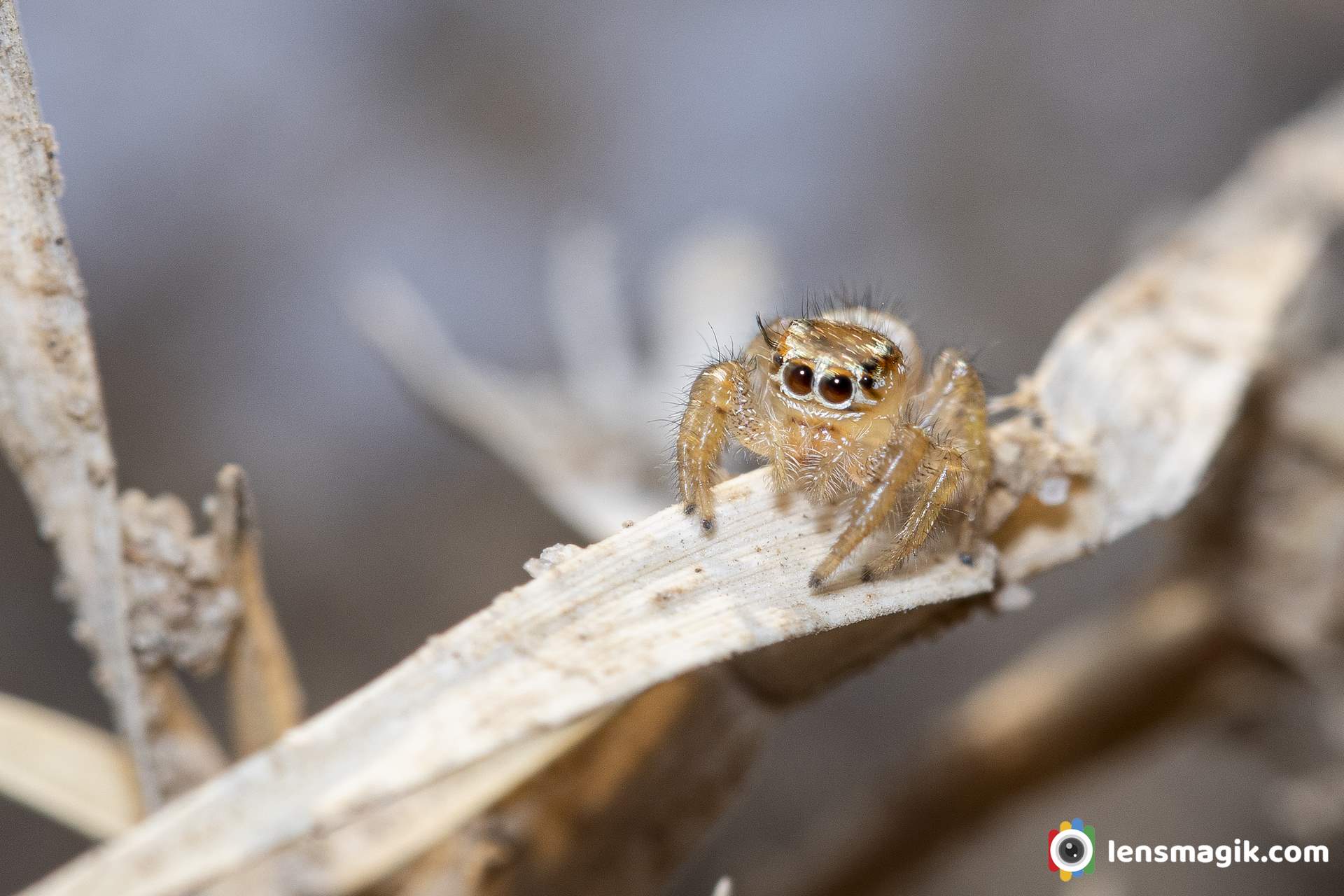
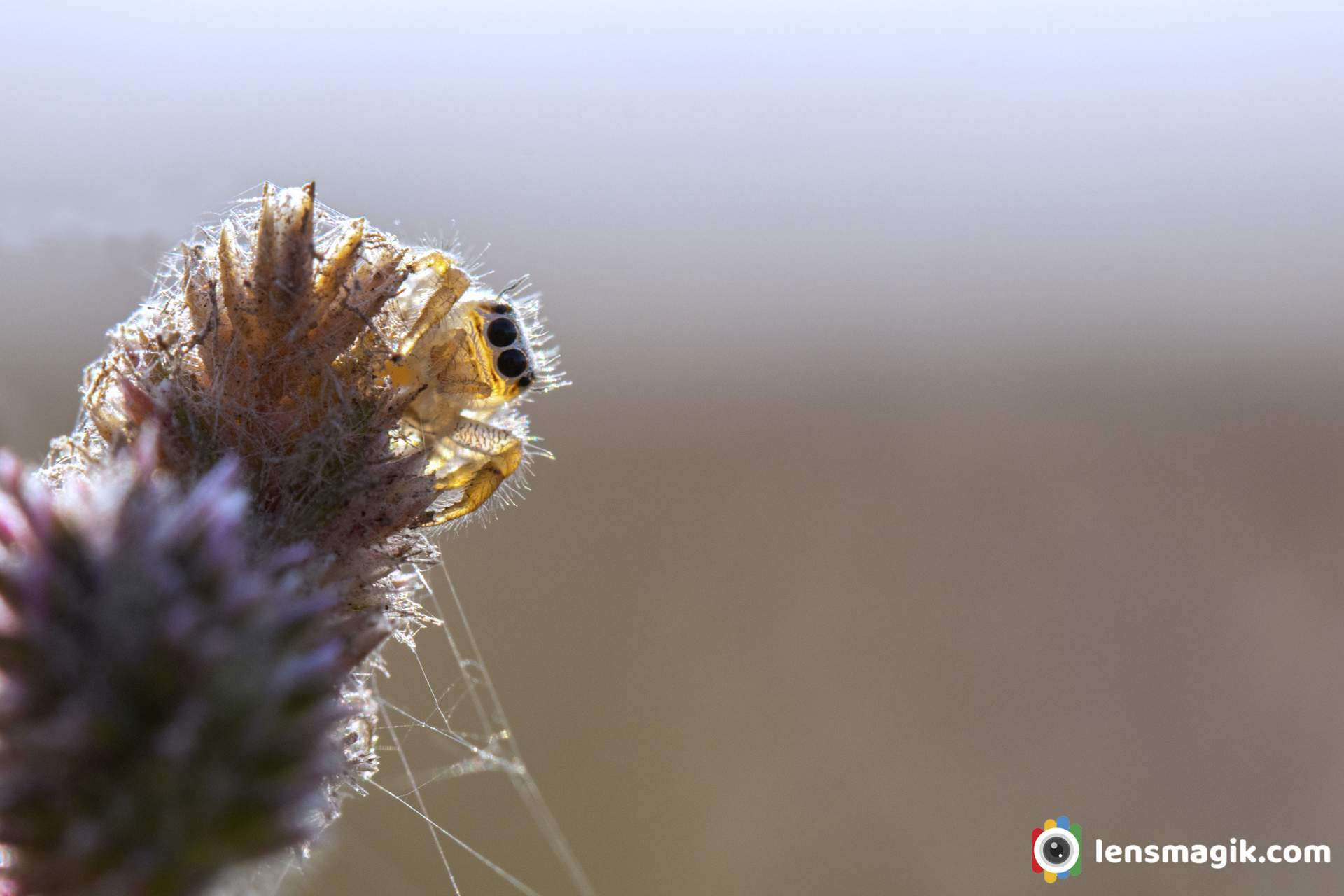
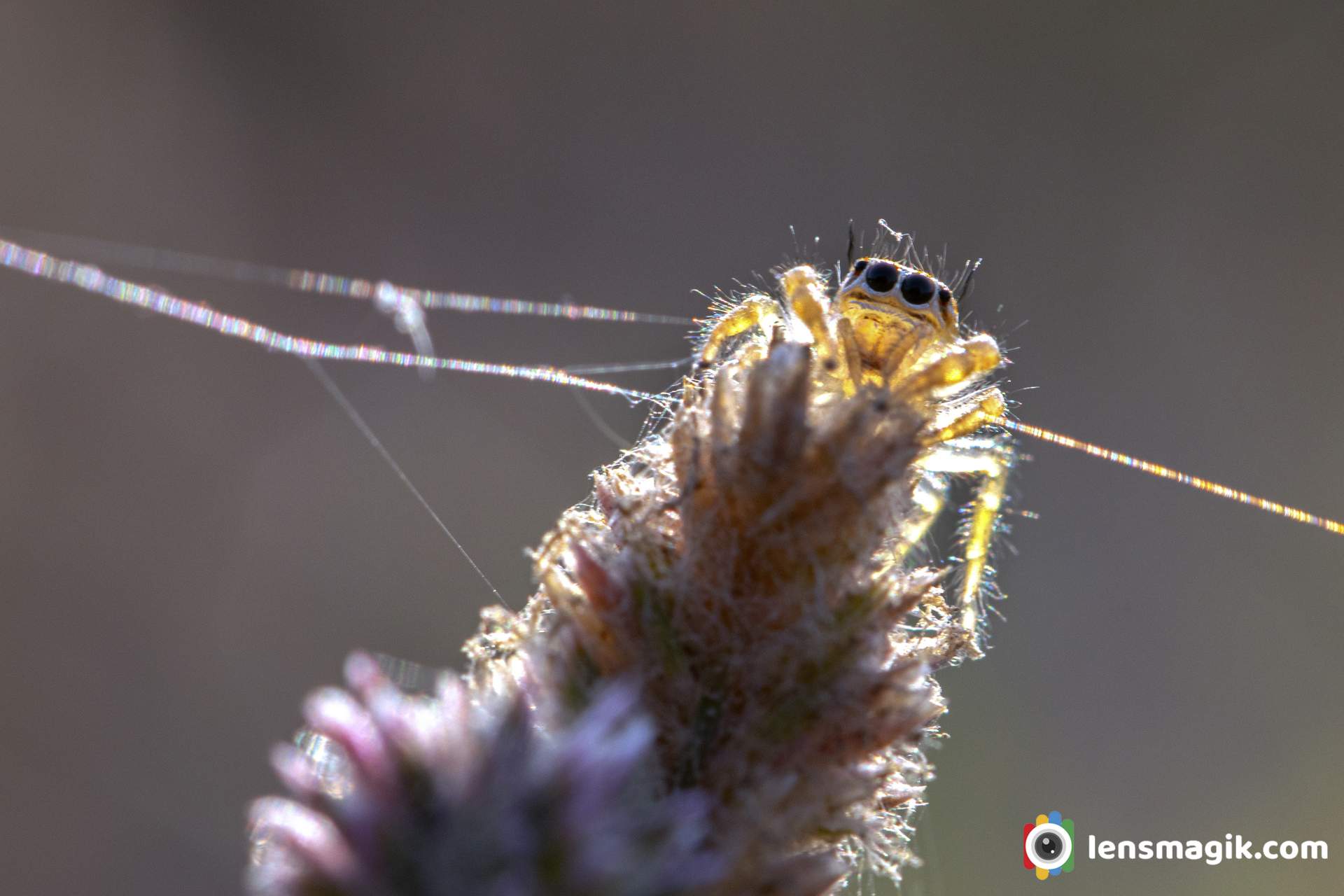
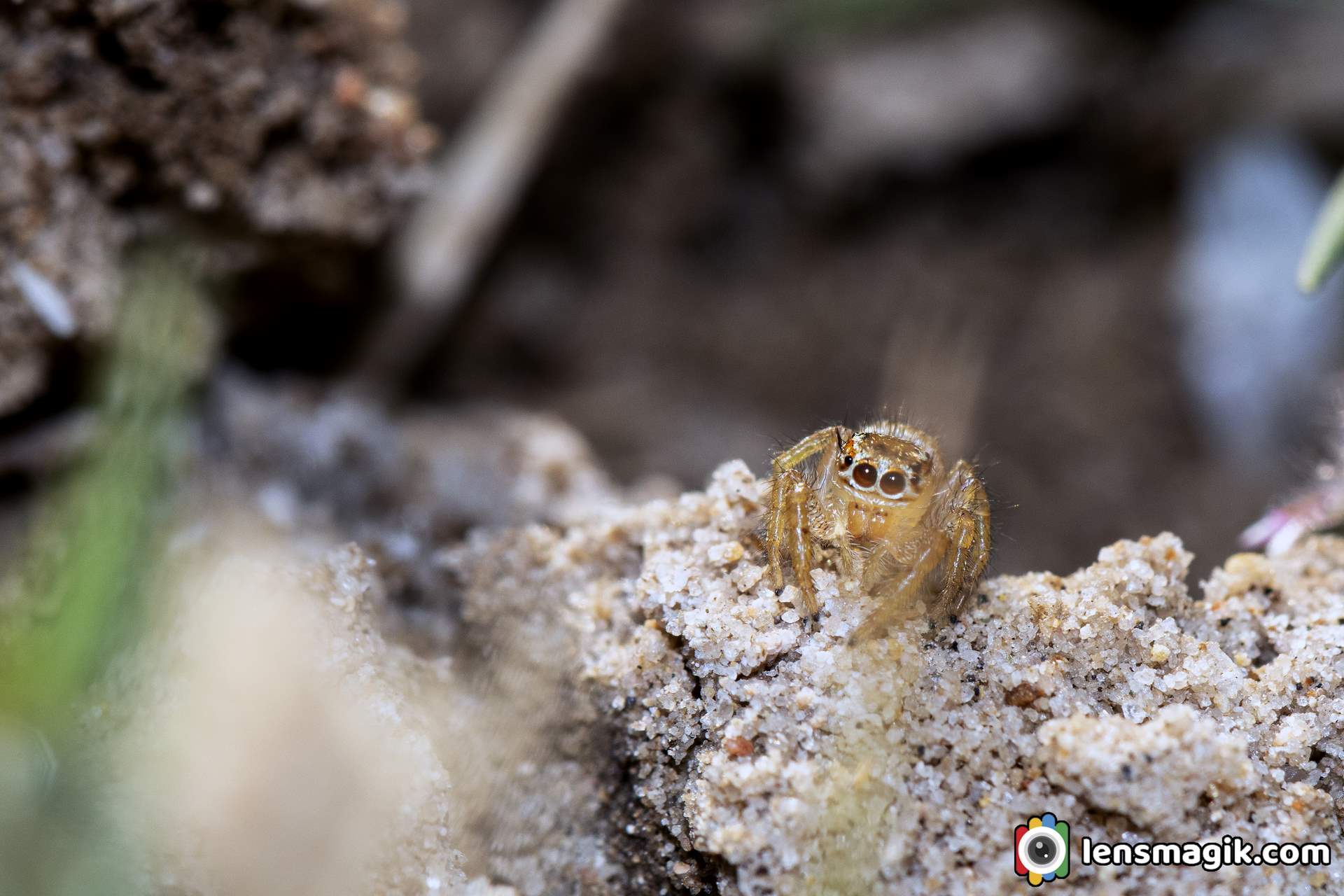
Gear used : Canon 80 D , Canon 6 D ,Canon 100mm Macro , Flash not fired
Location : Little Rann Of Kutch, Dasada
Read more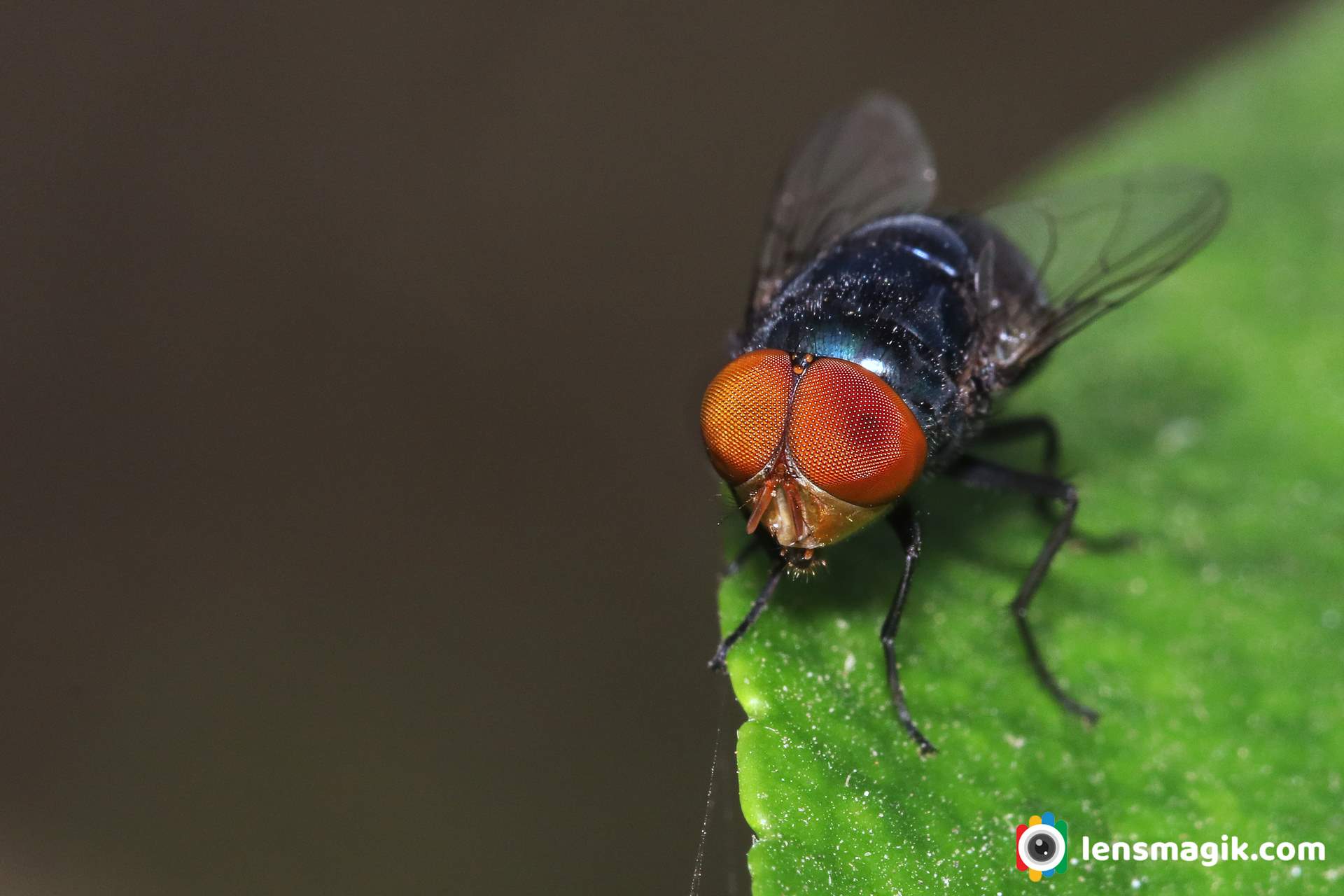
Housefly is a small insect which is found anywhere around us. It is most common fly spices. Binomial Name of Housefly is Musca domestica. Housefly is very well known for carry pathogens which can cause serious diseases in Animals and Humans. There are also different flies like fruit fly , Drain fly , Lesser Housefly, Blow fly, Common Green bottle fly etc. It is an insect and it has an important role for ecology for breaking down organic matter. They can carry lots of organisms on hair, mouth and feces. Also they carry parasites with them and cause diseases like Typhoid, Cholera ,Diarrhea etc.
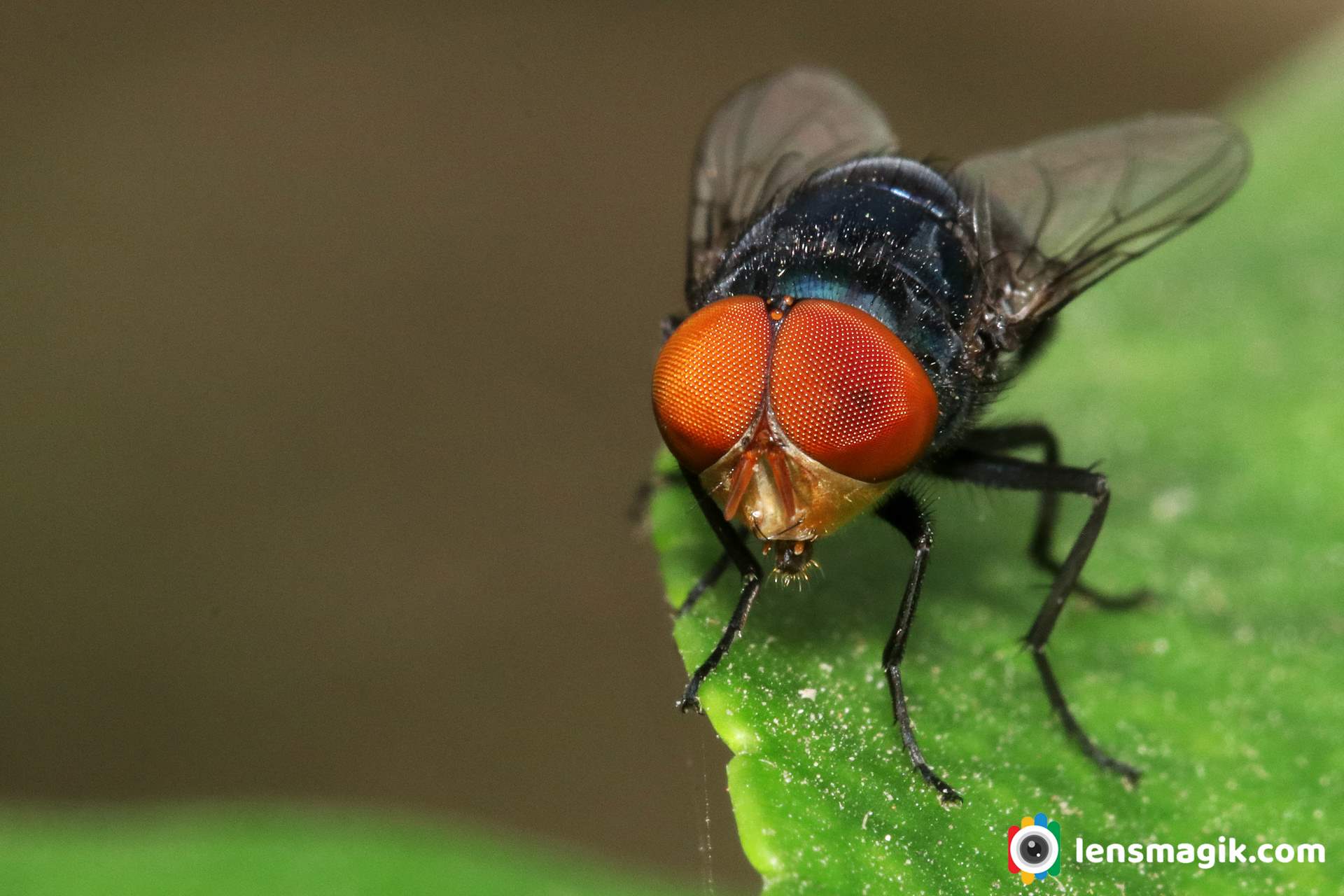
About Housefly : It is the most common fly spices found in the houses. They have red eyes and black in color. They have small hairs on their body and single pair of wings. Females are little larger than Male. Adult housefly length about 6 to 7 mm and 12-15mm with wingspan. They have 3 simple eyes and pair of antennae.
Some Facts about Housefly or Flies :
- Flies multiply quickly
- Flies can spread diseases.
- Flies test with their feet.
- Housefly don't chew
- Flies pollinate plants.
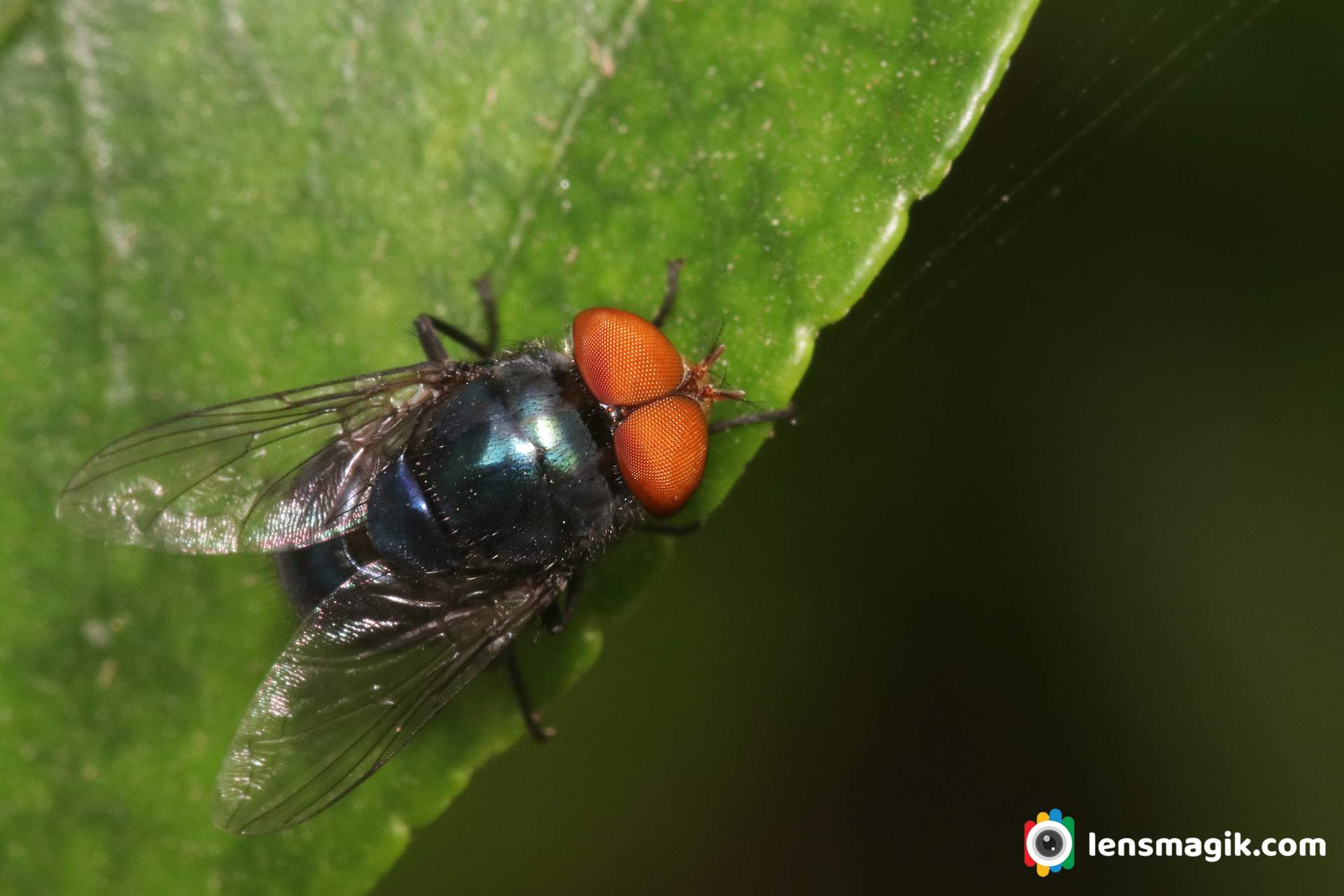
Things to know about Housefly :
- Female housefly mates only once and it store sperms to use it later on.
- It lays eggs on waste food or carrion and lays eggs in 100 of batches.
- After eggs they soon hatch into larvae which is known as maggot.
- After 3 larvael stage they turn into pupae about 8 mm. and then become housefly.
- Housefly generally lives 2 to 4 weeks.
- They feed different liquid, semi liquid substence. They can feed some solid meterials which can soften by housefly saliva.
- Houseflies process visual information 7 times faster than humans.
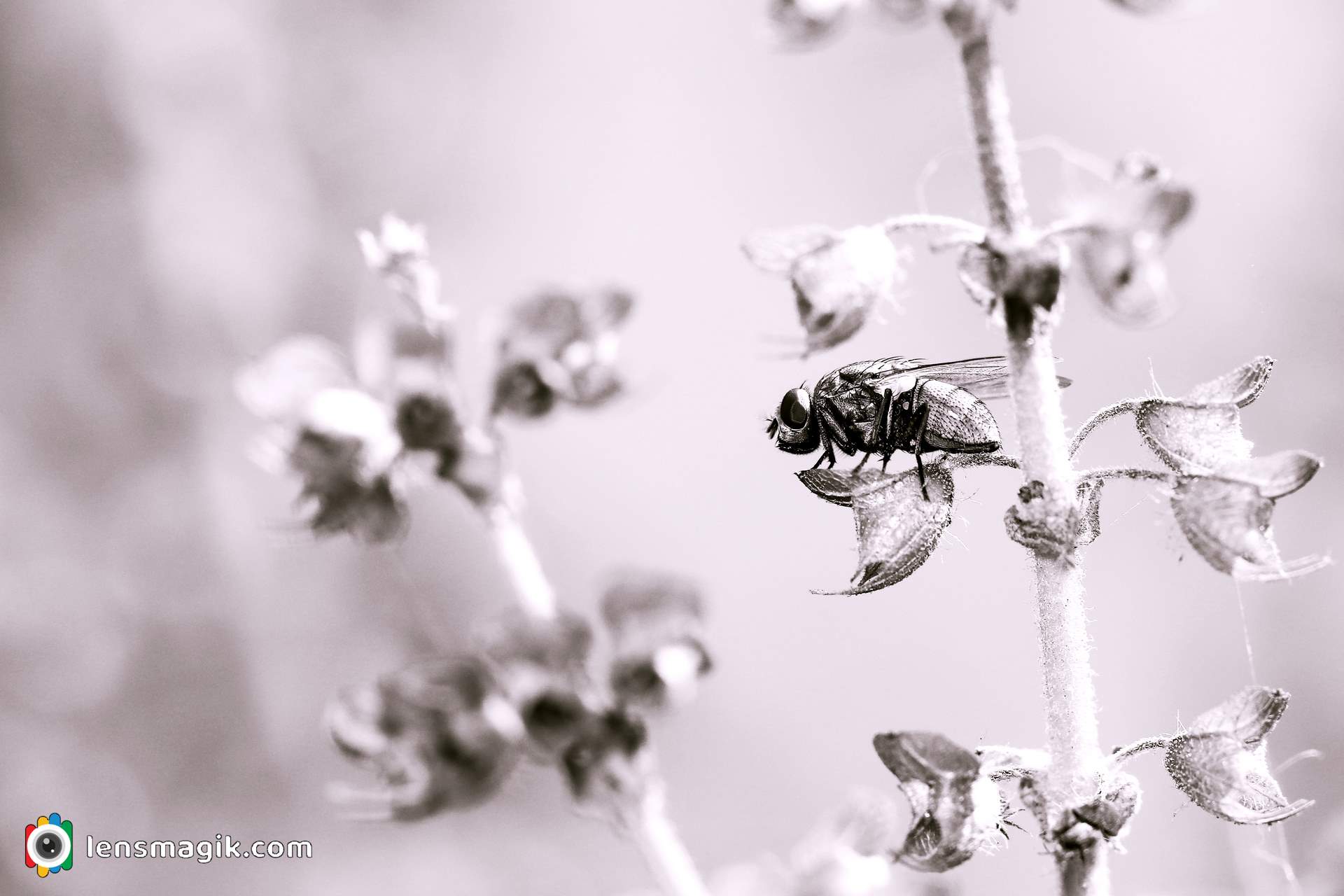
Life cycle of Housefly :
Female lays Eggs ----- after 1 day 1st instar larva ----- after 1 day 2nd instar larva ----- after 1 day 3rd instar larva ----- after 2 or 3 days Pupae/ pupa ----- after 3.5 to 4.5 days it turn into adult housefly
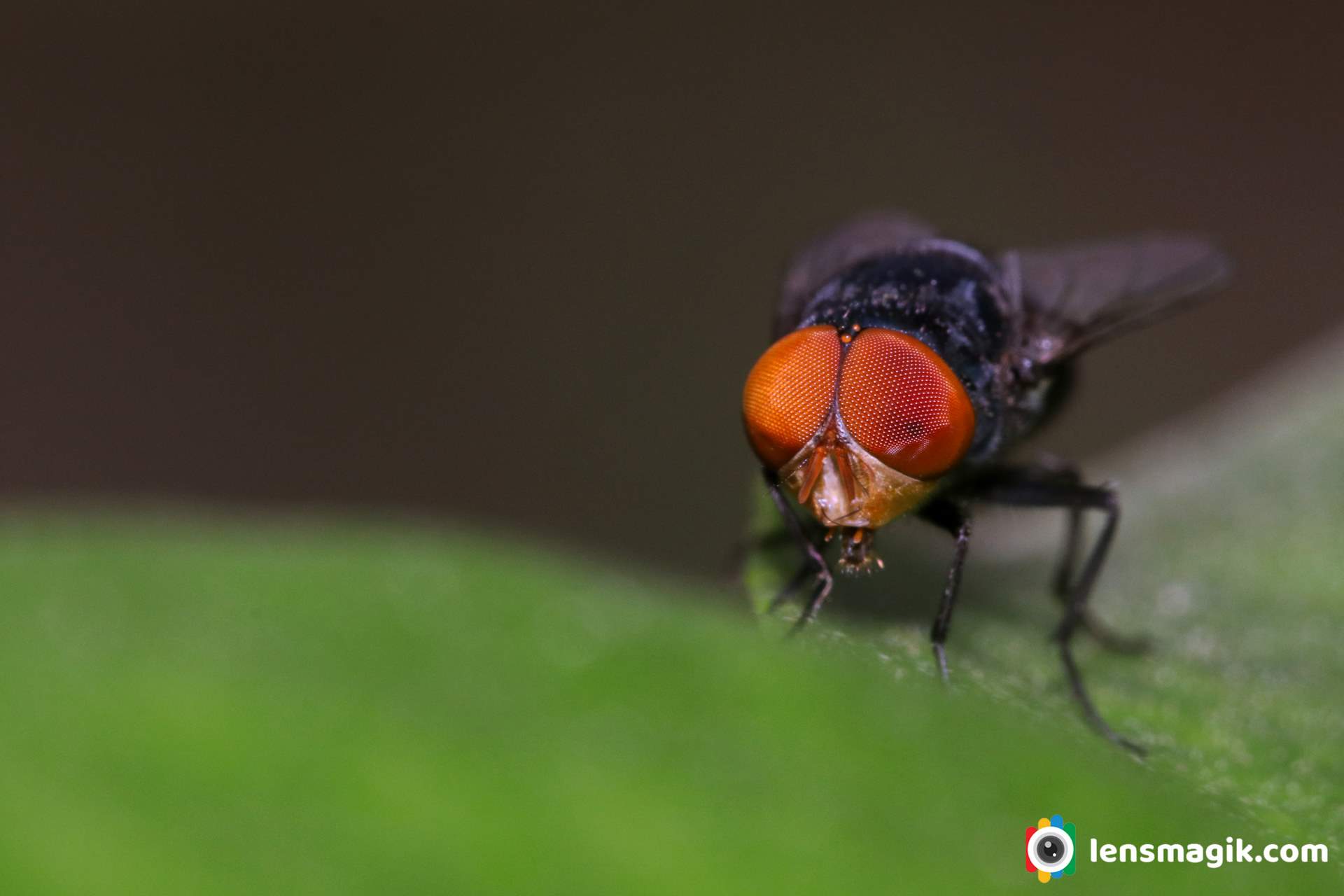
Housefly is very difficult to catch in your frame. Its flying speed is amazing so you can not catch them easily. You need to stable where housefly repeatatly came and sit. Wait for your shot on tripod or on handheld. Its all about timing. I generally use handheld shots. Also i use flash rarely when light is too low.
How to get rid of Housefly ?
The best spray for get rid of housefly is natural oil sprays like citronella oil, neem oil, peppermint oil, lemongrass oil etc. Get mixing these oils with alcohol or water and spray it in your house .
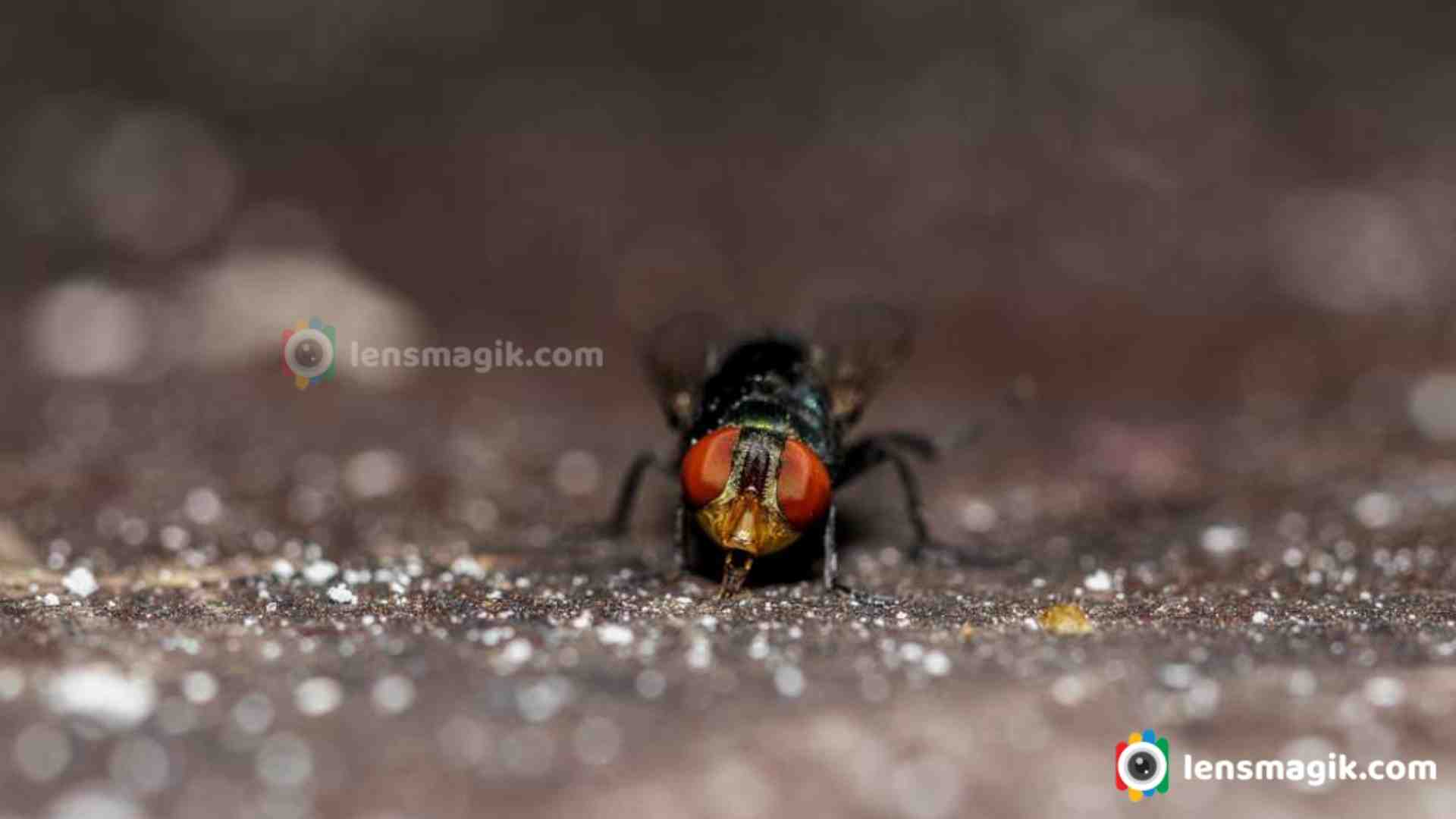
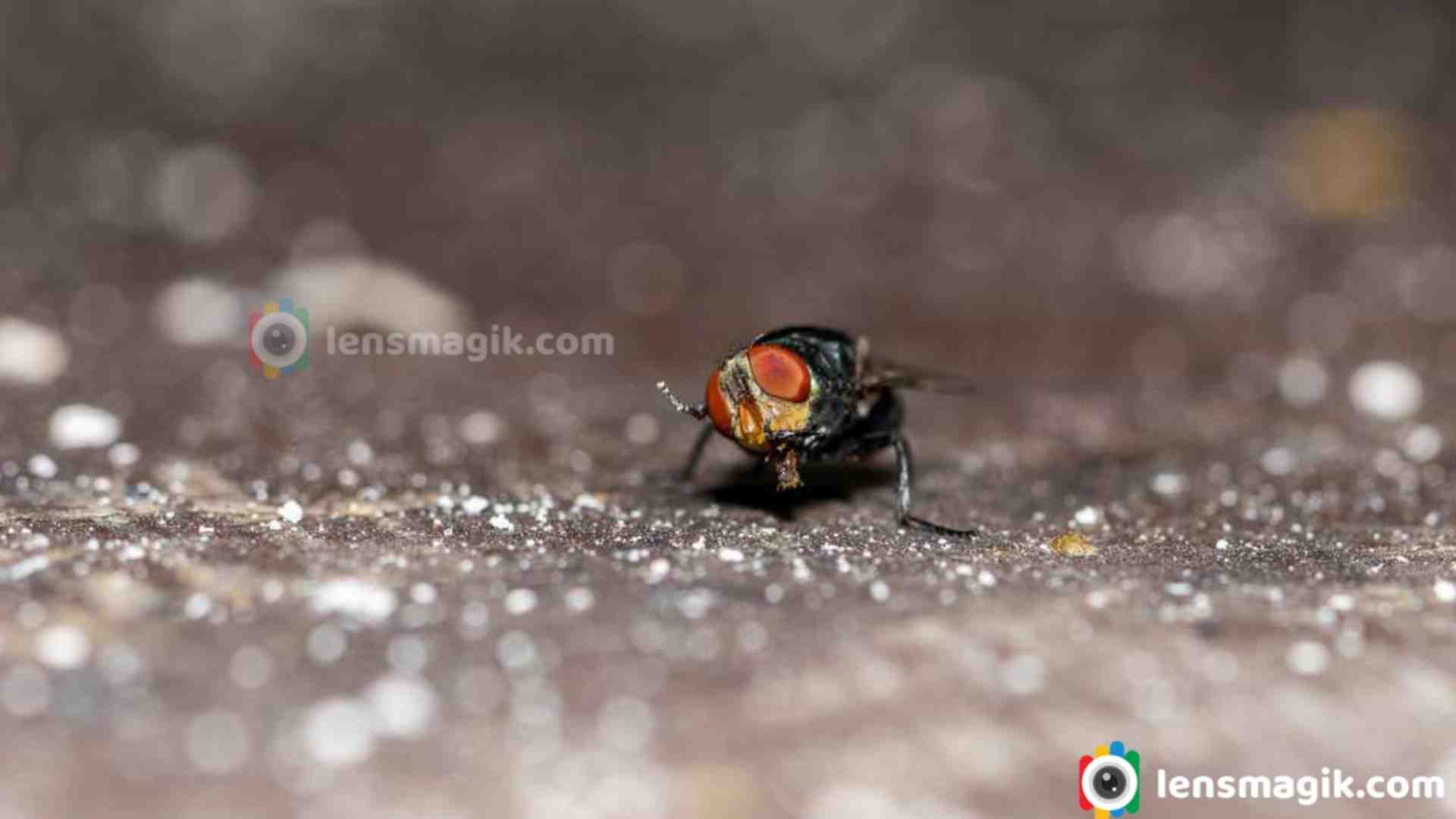
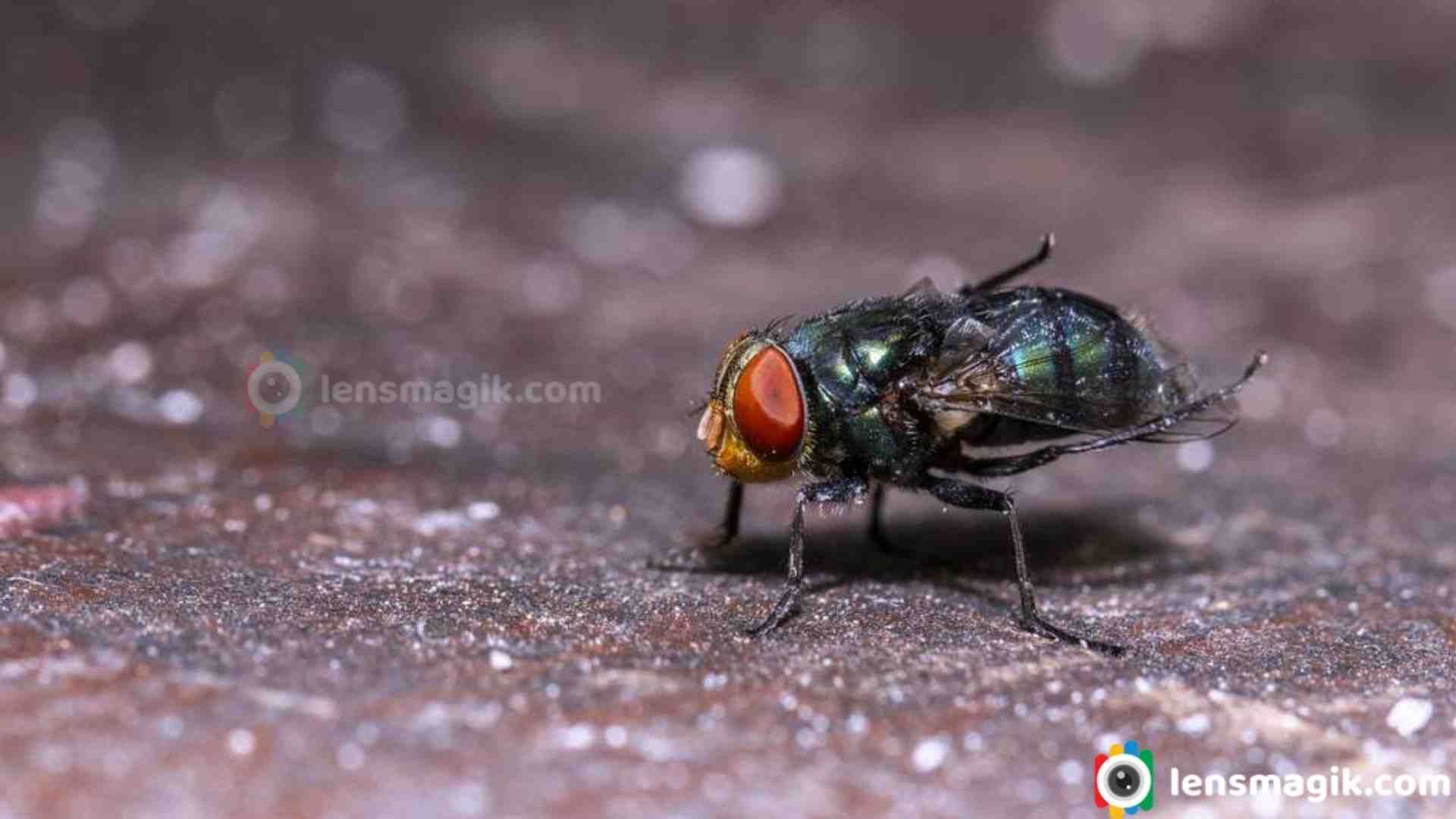
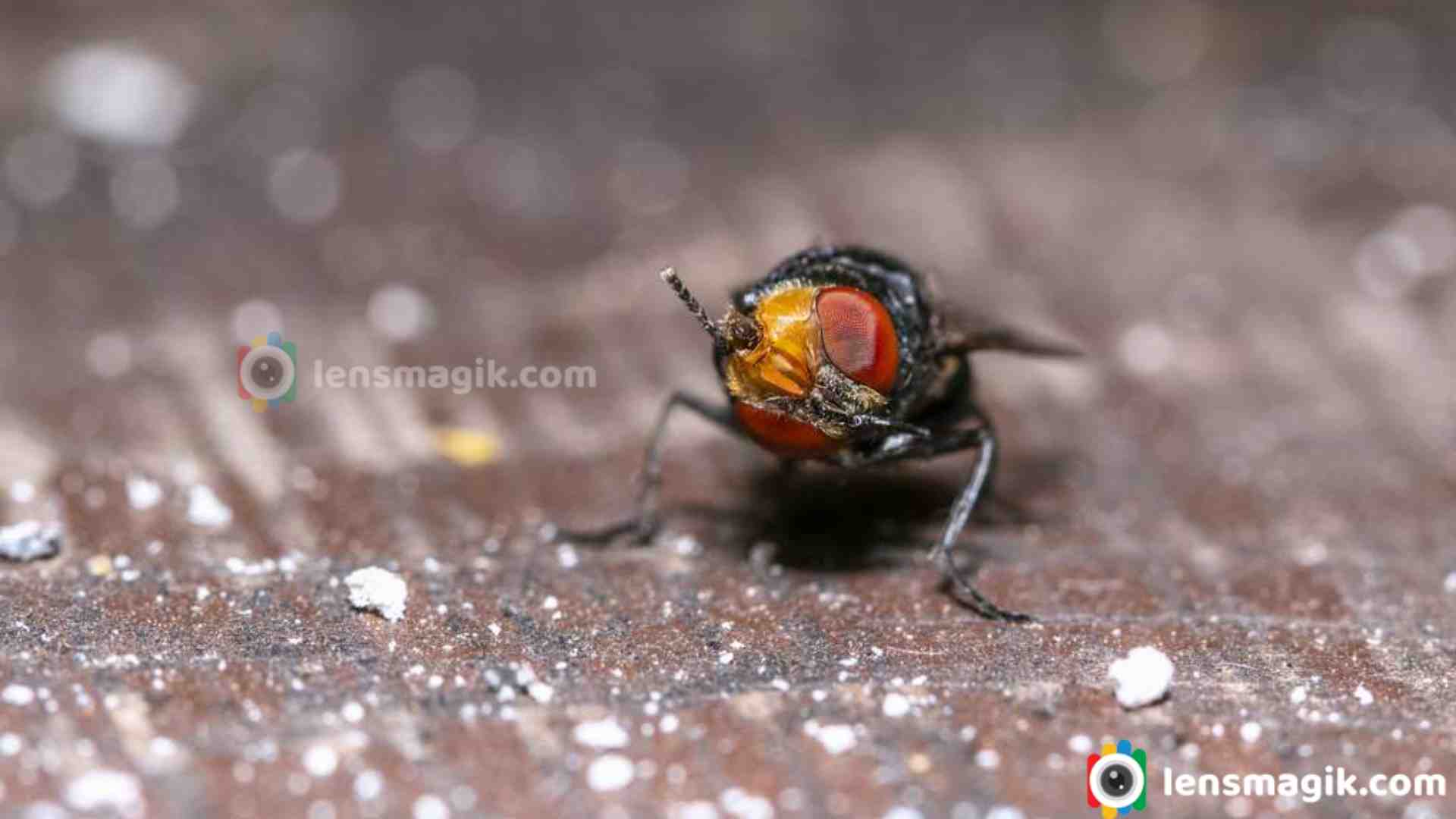
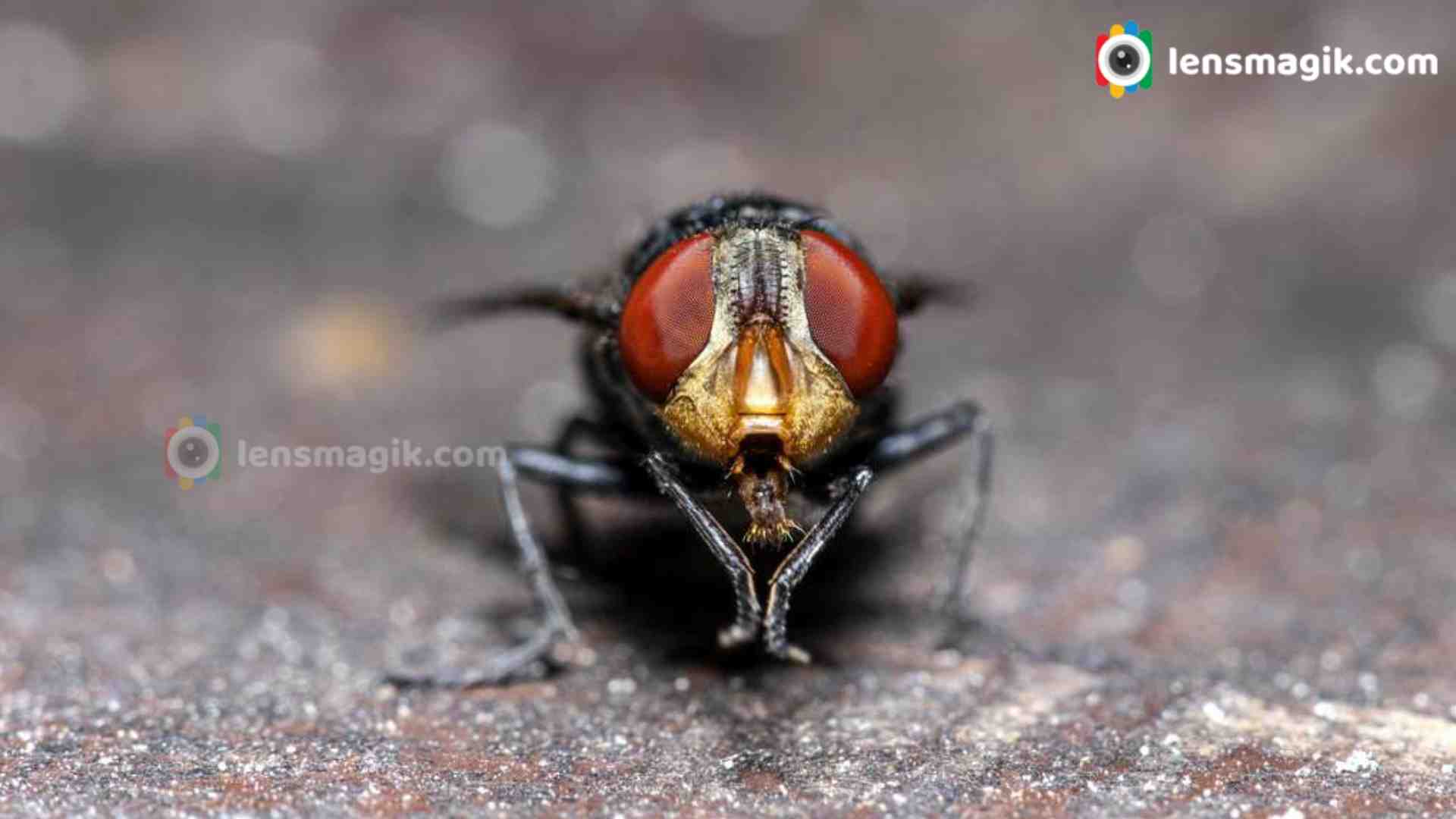
Gear Used : Canon 80 D , Canon 6 D , Canon 100 mm macro lens.
Read more
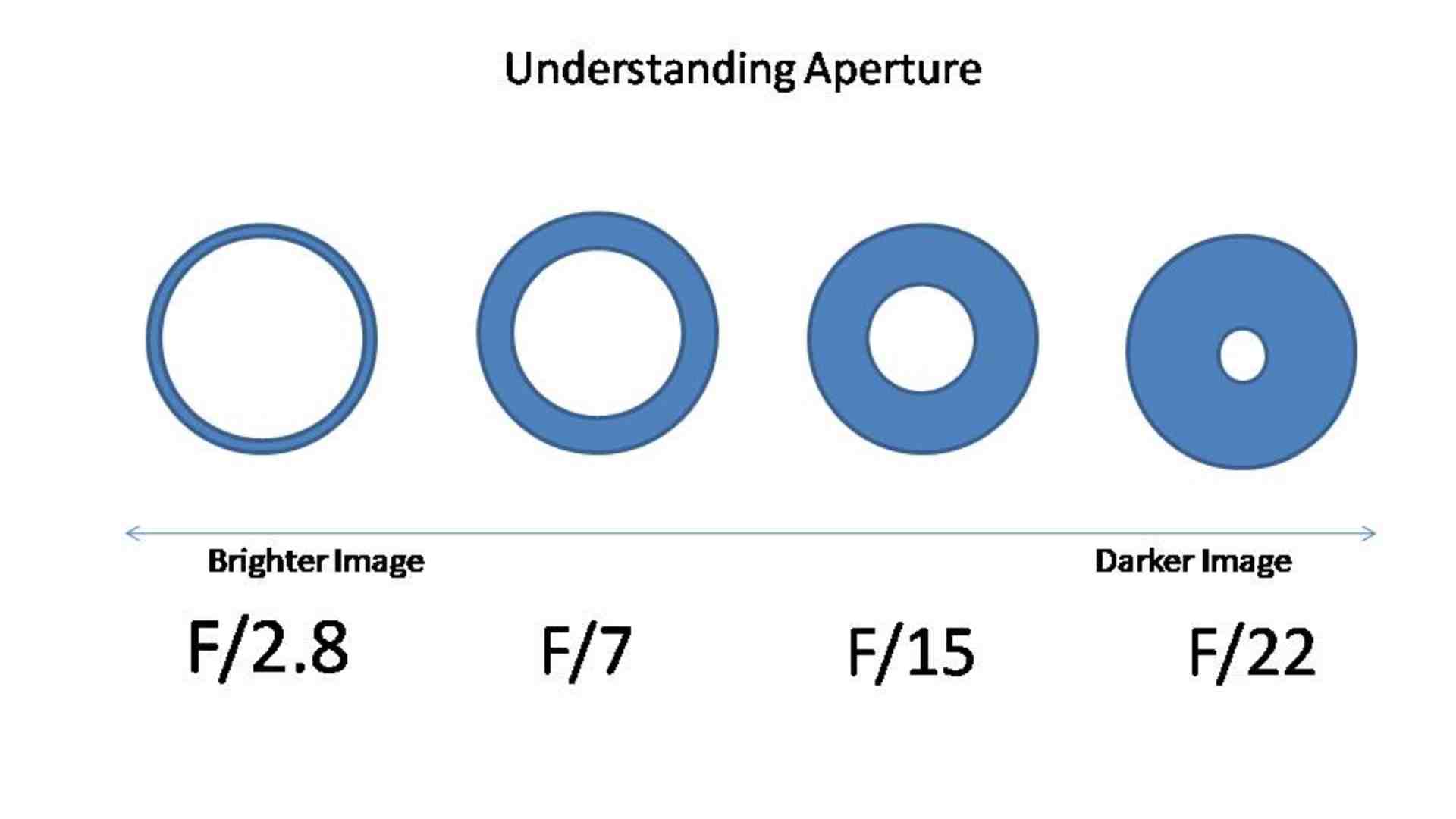
The F number or F stop means focal length of the lens or you can say that measure of light gathering ability of an optical system. F stop number in DSLR camera depends on the camera lens . It does not depends on Camera Body. Your camera lens has define minimum aperture value or F stop focal length on lens . F stop Number also prefer for light optimization and how much light you allow inside the sensor of the camera. Also F stop or Aperture low value and high value makes different in Image in focus parts. Low F / Aperture value like F/2.8 make sharp image only on focus part and rest part in blur and high F/ Aperture value like F/20 make sharp image all focus part . When you Increase and decrease the aperture value or F number in camera you might be increase and decrease in Shutter speed and as well as ISO too.
Understanding F number or Aperture with Shutter speed and ISO :
As shown in main image you can easily understand how aperture or F stop works . It shows that when you use wider aperture like F/2.8 the aperture is wider and more light comes through your lens so the image will be brighter when you use low aperture value. As opposite using high aperture like F/22 the light comes less through your lens and the images are darker. But the main difference in using F number is focus part. It means that when you use aperture at low like F/2.8 your focus image only be a sharp rest part of image will be blurred. And in F/22 your focus parts of images sharpen not blurred I will show you an example of that . But while using F number F/2.8 to F/22 you need to change ISO settings and also A shutter speed too.

As Shown in Above image you can easily understand how Aperture works with ISO and Shutter speed.
One image is taken with F/10, ISO -250 and Shutter speed 1/400 seconds . In that image you can see the subject clear and also other part of the image also clear in background in compare to other image.
The second image taken with F/2.8, ISO-250 and Shutter speed 1/ 5000 seconds. In that image you can see only subject is sharp rest image is blurred. But the changes i made to shutter speed increase because when i use wider aperture F/2.8 more light comes through lens and image will be more brighter so i increase my shutter speed.
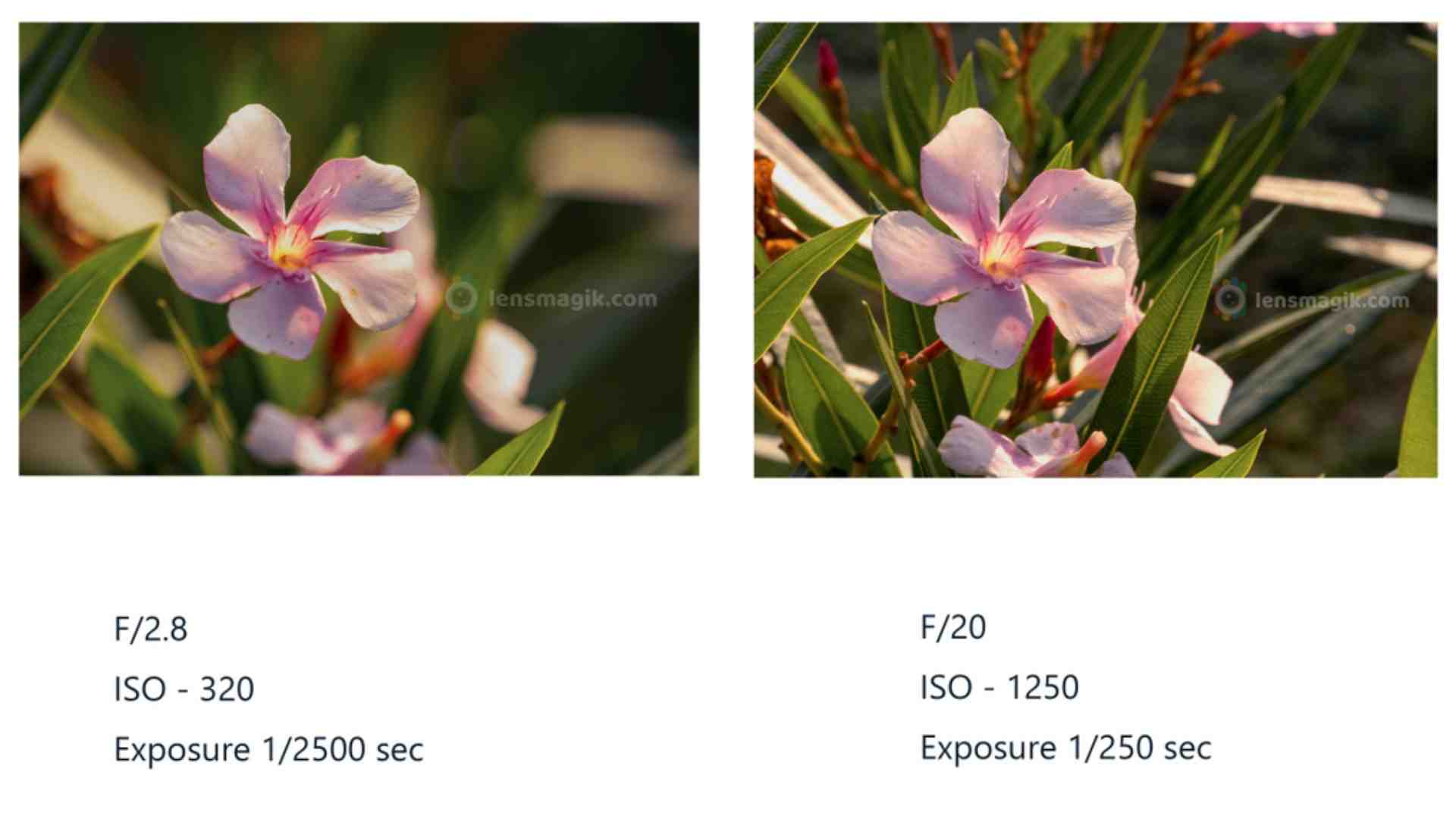
Another example of Aperture is above image.
One image taken with F/2.8 , ISO-320 and shutter speed 1/2500 sec. In that image flower looks clear and rest of image looks blurry . The other image taken with F/20, ISO-1250 and shutter speed 1/250 sec. That image flower with plant leaves looks clear because i use F/20 but in that case i need to increase ISO and lower shutter speed. Increasing ISO may increase noise in your image so if it is not necessary then don't boost ISO use only shutter speed if passible.
Some Facts to know about Aperture or F stop :
- F number decides how much your photo in focus
- Lower F number makes image Brighter
- Higher F number makes image Darker
- Aperture depends on your lens
- Different lens have different aperture value.
- To increase and decrease your aperture value you need to adjust ISO and Shutter speed as per subject and light.
I use Canon 100 mm lens for both above image with canon 80D camera body. Canon 100 mm macro lens has F/2.8 minimum aperture value. All lenses have different minimum and maximum aperture value. ISO and shutter speed depends on your camera Body. Some Camera body support High ISO with low noise too.
Read moreAccentor is a small bird of prunellidae family. In India it is generally found in East Sikkim area. It built its nest low in a bush. When i was on a trip to Singalila National Park. I found at sandakphu area. Sandakphu is high altitude place in Singalila National Park located in West Bengal. From here you can see Mt. Kanchenjunga very clear which is highest peak of West Bengal. Lots of Birds here. To visit Singalila Park November to February you can found lots of snow and good landscapes too with snow on Mt Kanchenjunga. Also if you are going for birding you can visit March to May/June Month is the best . It is very cold weather during winter November to February at Singalila National park.
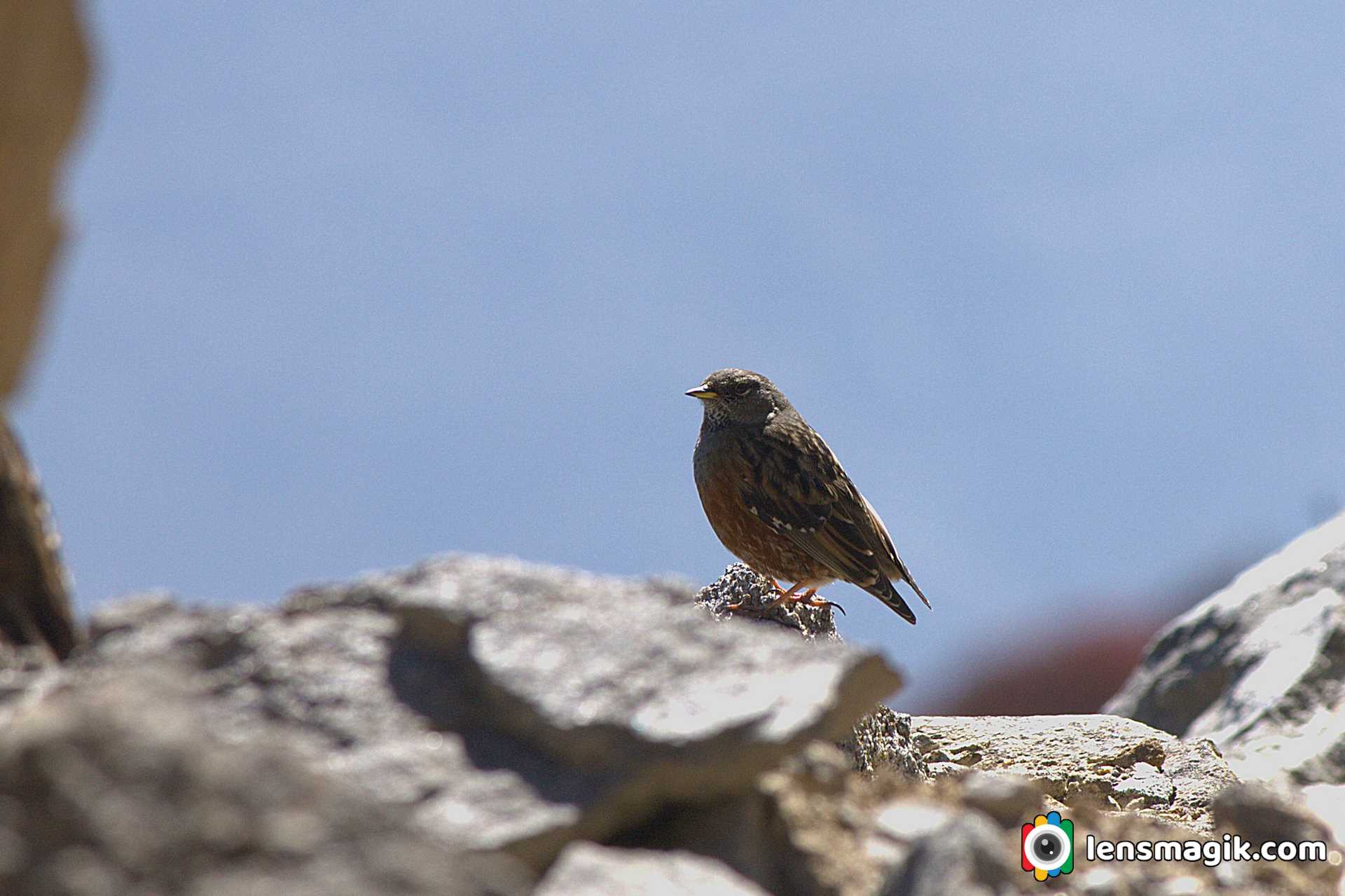
About Alpine Accentor Bird :
- Alpine Accentor bird is robin size bird. Length of bird is around 15 -17 cm.
- Bird just like similar to house sparrow in color with brown back streaked.
- Adult Alpine Accentor have red brown spotting on underparts
- Also adult have grey head too.
- In Asia Accentor found at 2000 m above height. Specially at Himalayas.
- It build nest in bush.
- It laying 3-4 plain (not spotted) eggs of sky blue color.
Singalila National Park :
Singalila national park is located in West Bengal. There are lots of birds in this sanctuary. Also its good for trekking at Sandakphu. From here you can see Mt. Kanchenjunga easily and very closely. Also a beautiful Himalayan Mountain range with snow. Amazing weather very cold in winter and moderate in summer. Summer season is the best for birding at sandakphu.
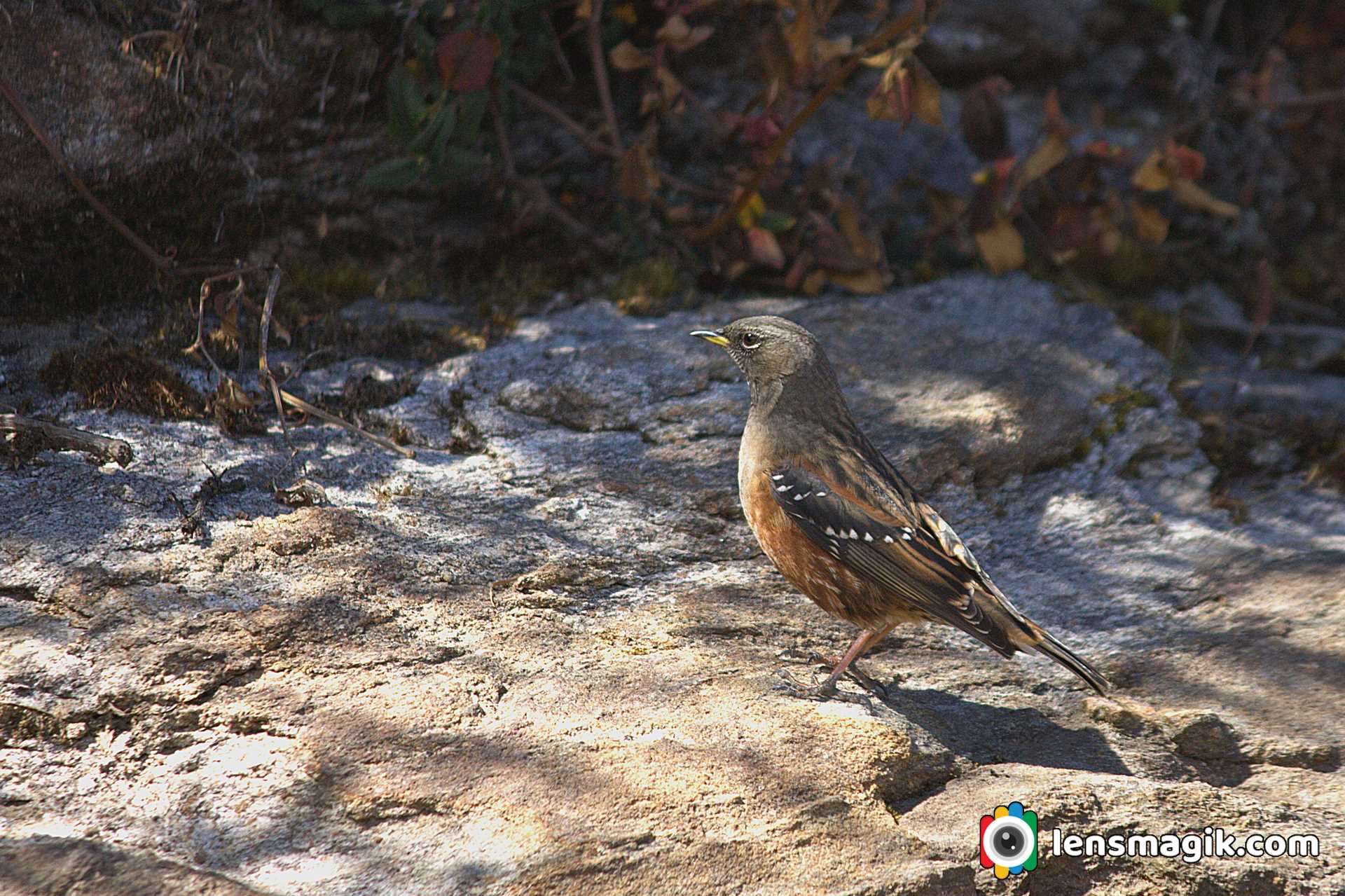
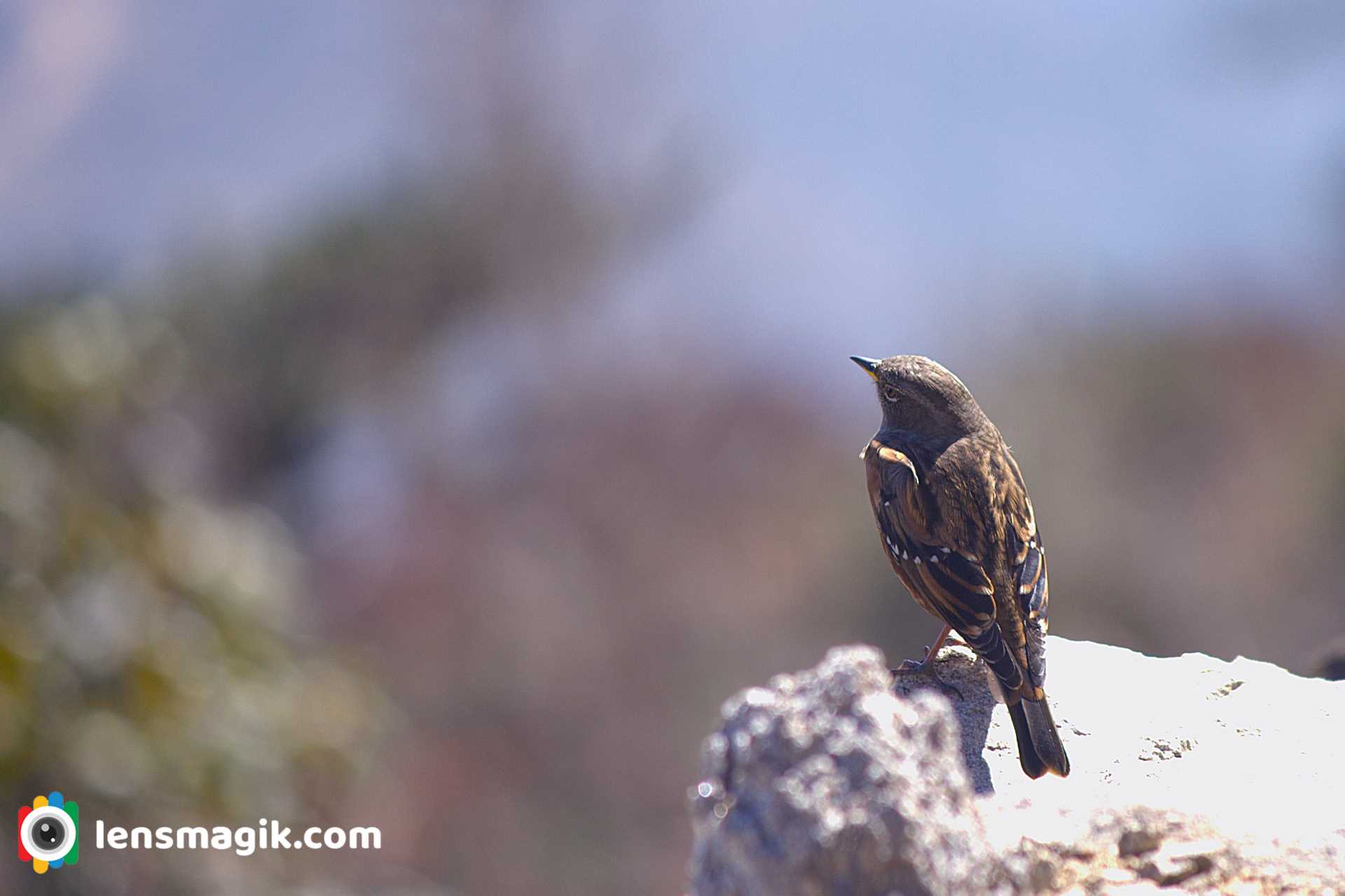

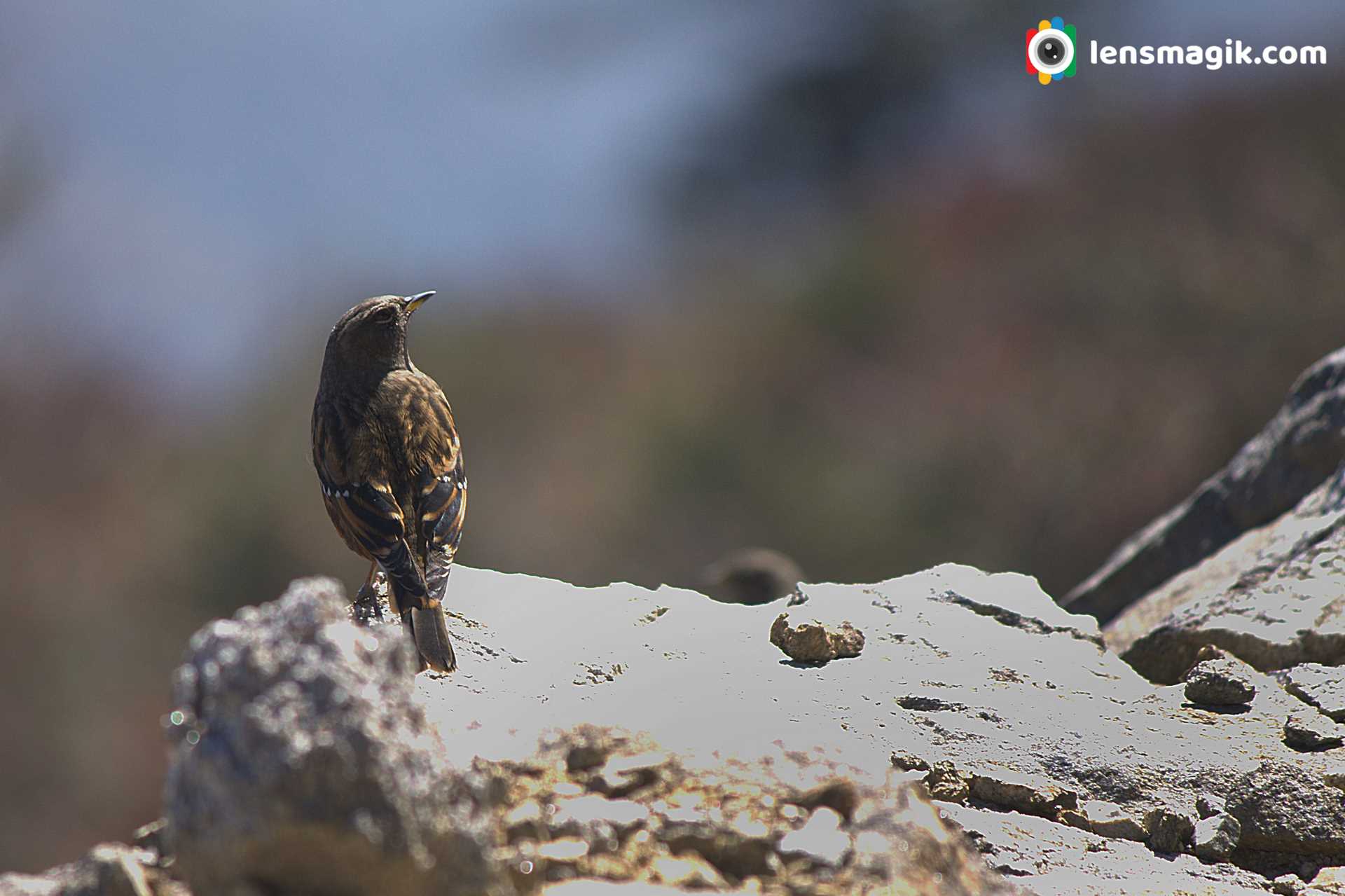
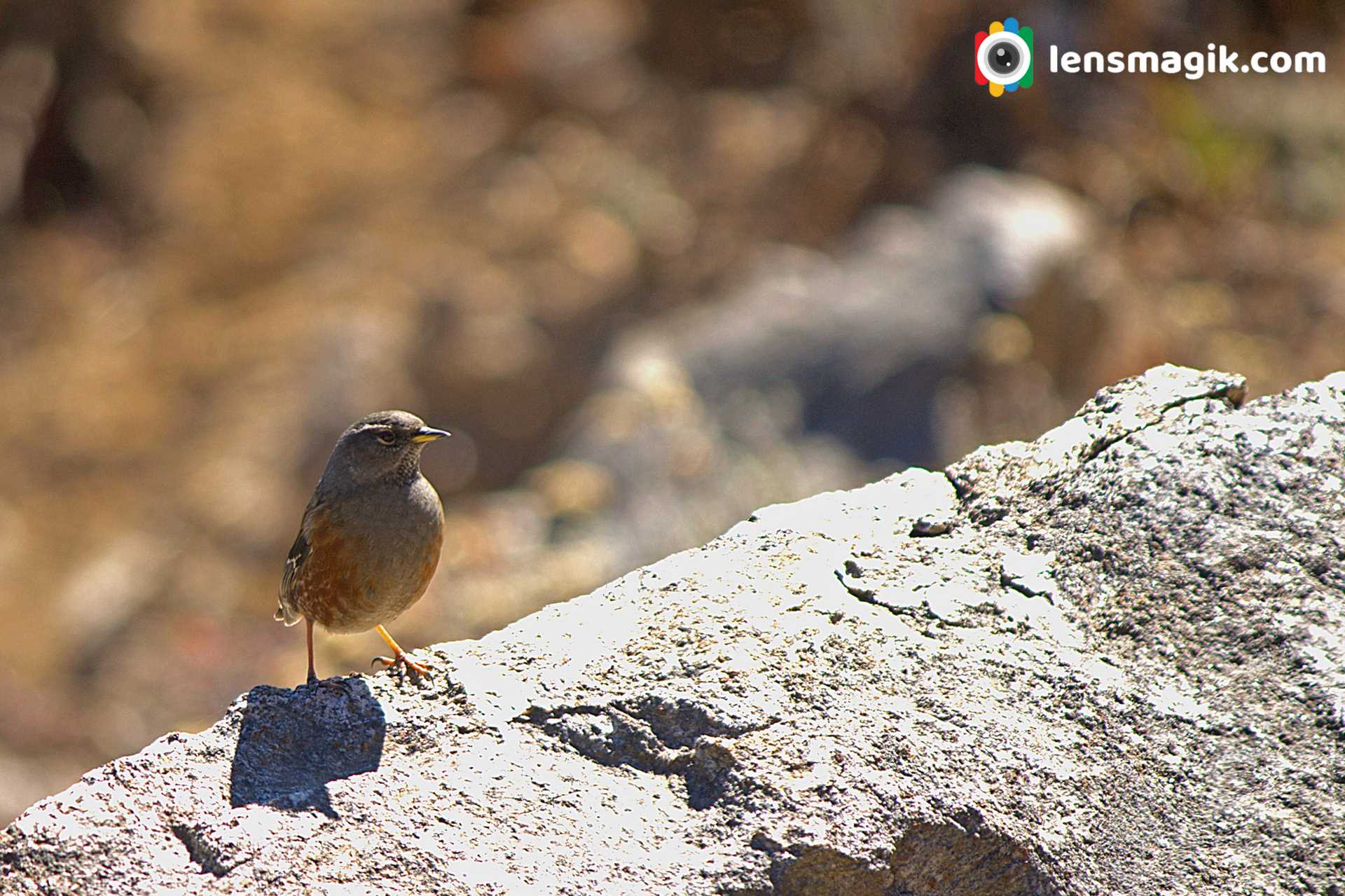
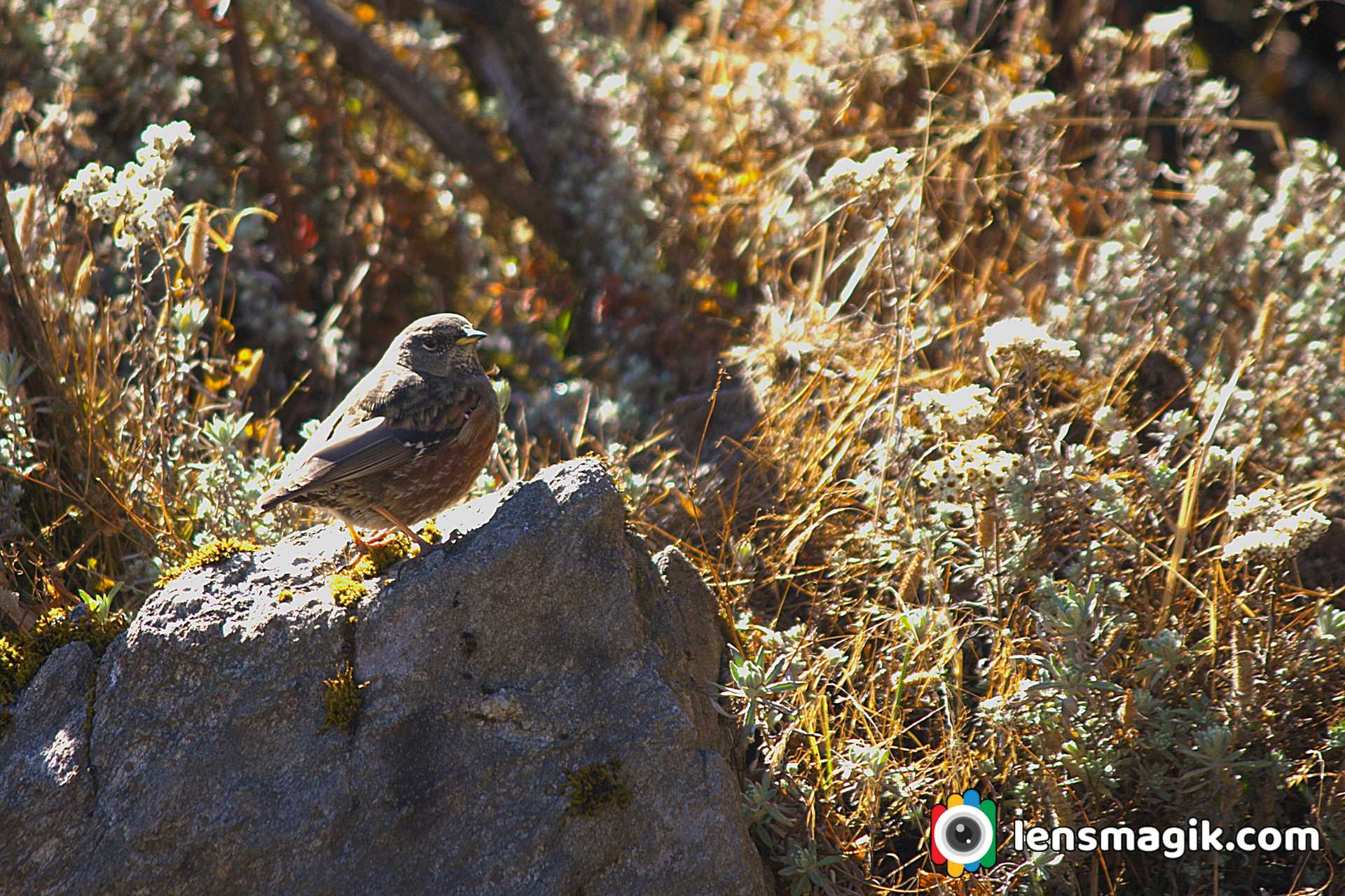
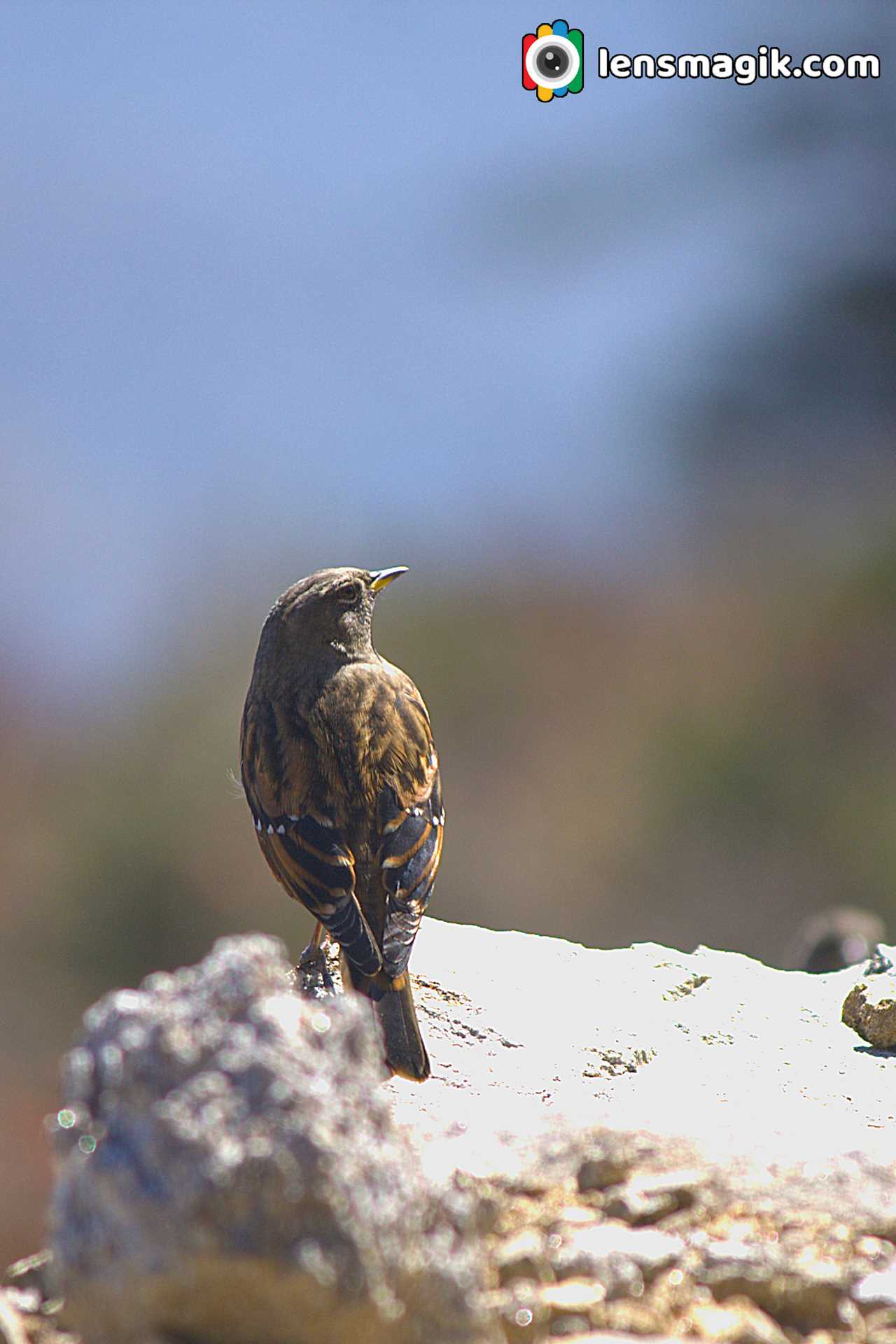
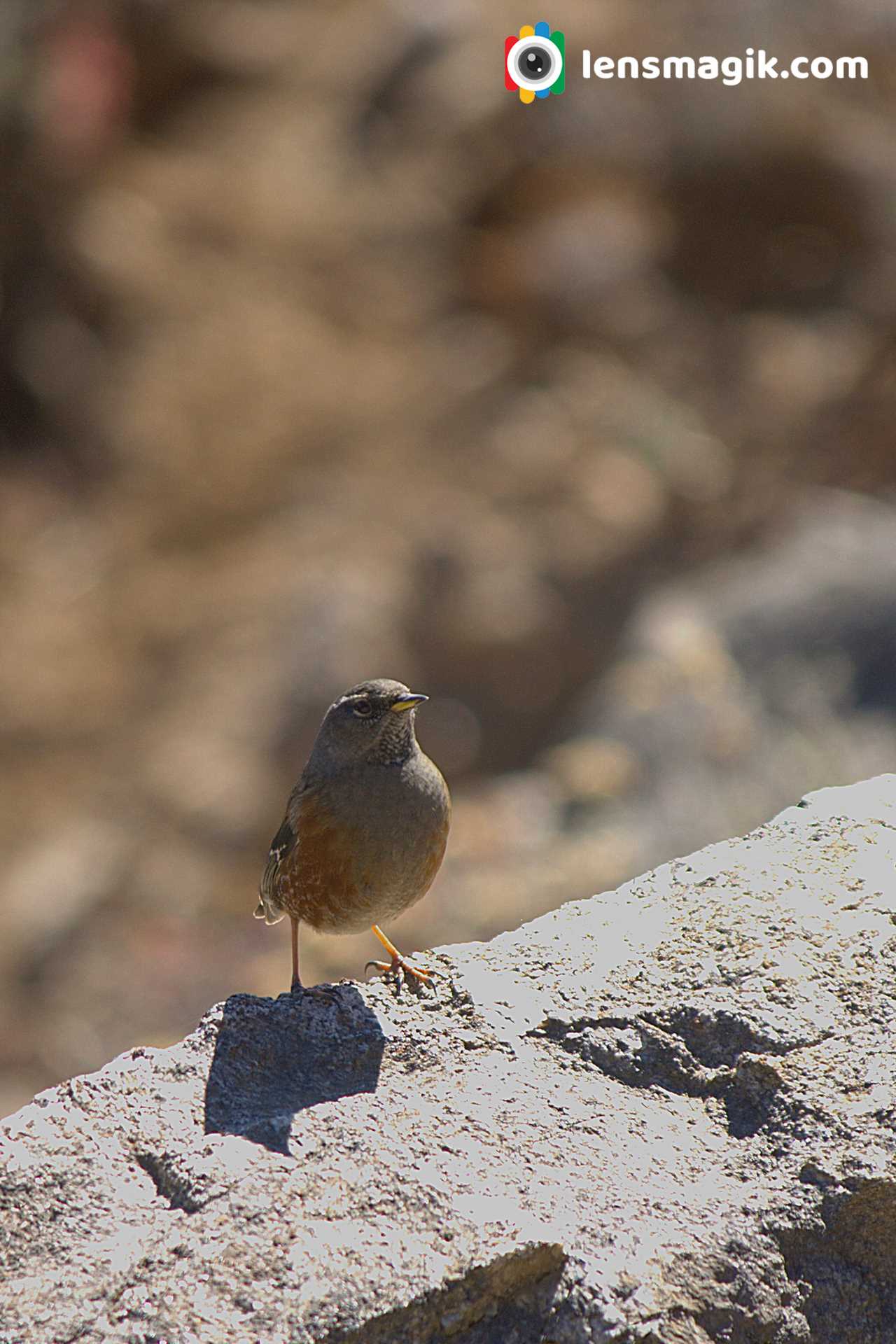
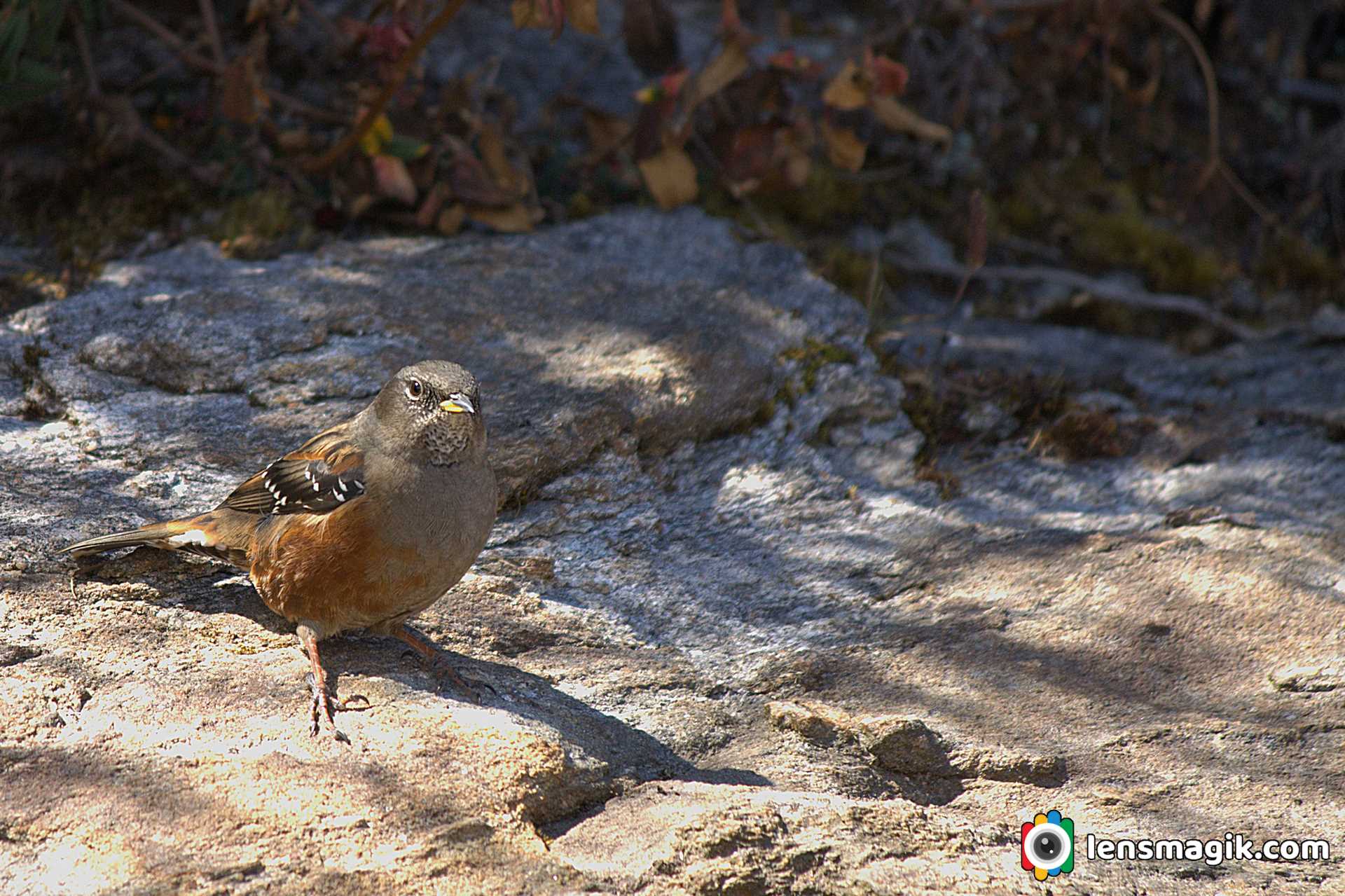
Alpine Accentor bird Binominal Name is Prunella Collaris . Total 9 subspices are recognised of Alpine Accentor bird.
Gear used : Canon 1000 D, Canon 55-250 mm Lens.
Road To Heaven is named to the road from Khavda to Dholavira in Kutch Gujarat. The road is so wonderful and scenery so it known as Road to Heaven . Khavda to Dholavira distance is around 58km but from Khavda there is a single line narrow road passes through small villages around 15-20 km approx. The main road starts after it and it is around 30-35 km approx. strait to Dholavira. Road is under constriction but almost 70-80% work done. The road heading to the city of Harappan Civilization Dholavira which is one of the largest site of Harappan Civilization and Indus valley Civilization.
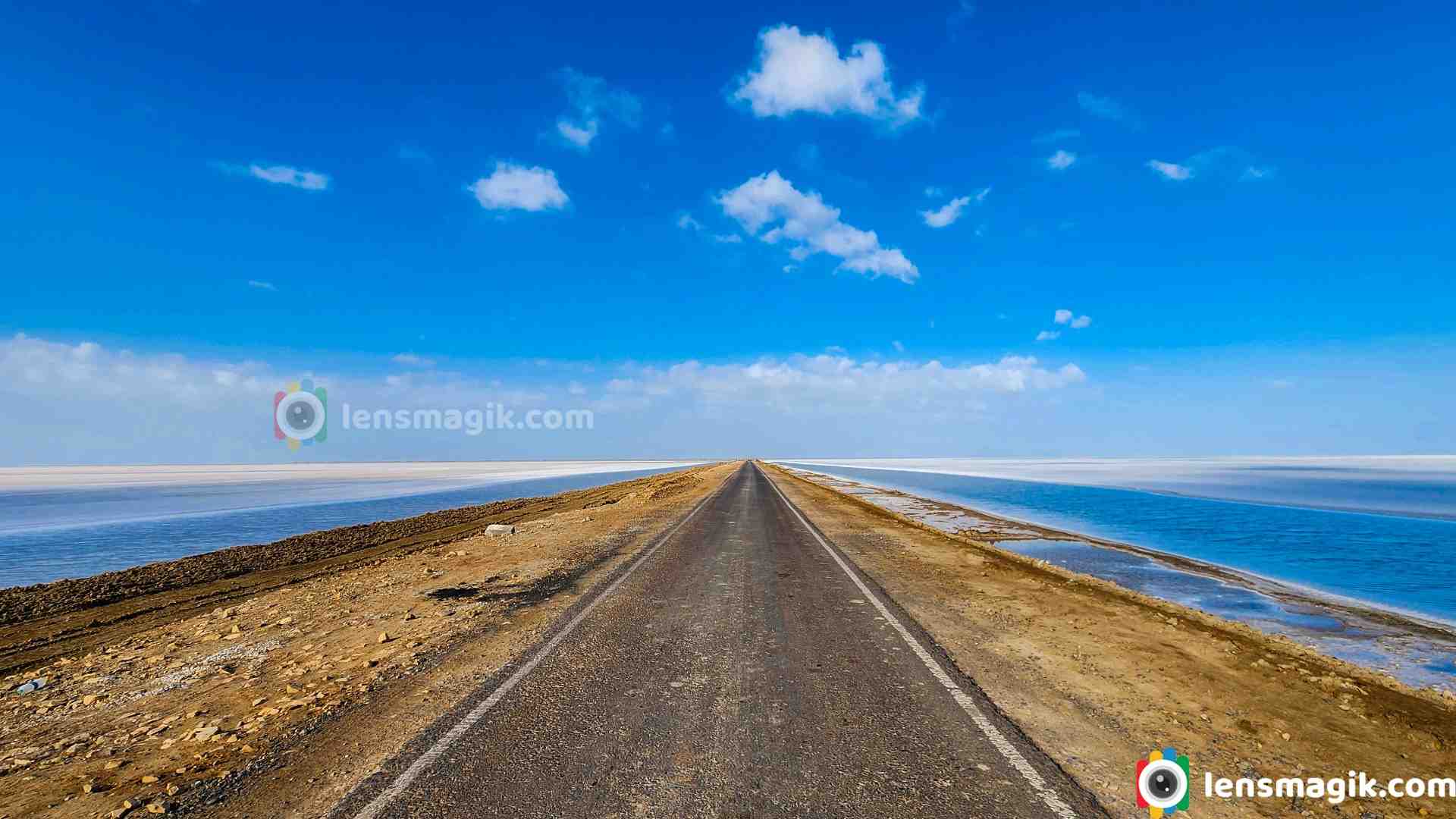
Kutch is a largest district of Gujarat and also of India. Main City or Headquarter of Kutch District is Bhuj. Kutch is famous for White Desert or White Rann. In Every winter season from December to February celebrate “ Rann Utsav “ to attract foreigners and also locals. Tent City made in white desert to stay and also cultural programs arranged in it. The main Rann Utsav held in Dhordo of Kutch.

After visit White desert people also visit Dholavira which is nearest destination from Dhordo and also Kalo Dungar in between. From Dhordo you will have to go Khavda first and then from Khavda to Dholavira which is connected through “ Road To Heaven “. Dholavira is located at Khadir Bet. Khadir bet is separated because after monsoon the water filled outer side of bet. So the Road To Heaven is the way to connect Khadir bet to main city Bhuj.
About Road To Heaven Dholavira / Road to Heaven in Kutch :
- · It connected from Khavda to Dholavira.
- · Road to heaven distance around 30-35 km.
- · After monsoon the rain water on the both side of the road. You can see beautiful Greater Flamingo birds in between. Water level is low but muddy.
- · After winter in January –February the water on both side of the road is evaporated and turn into salt. Not all water but some areas during the road.
- · Water on the both side of the road or Salt/ white layer on both side of the road make the beauty of the road and that’s why it name as “ Road To Heaven “
- · When you are on the road there is hardly some traffic you face the open road with both side water or salt at morning or evening make the scenery like a Heaven.

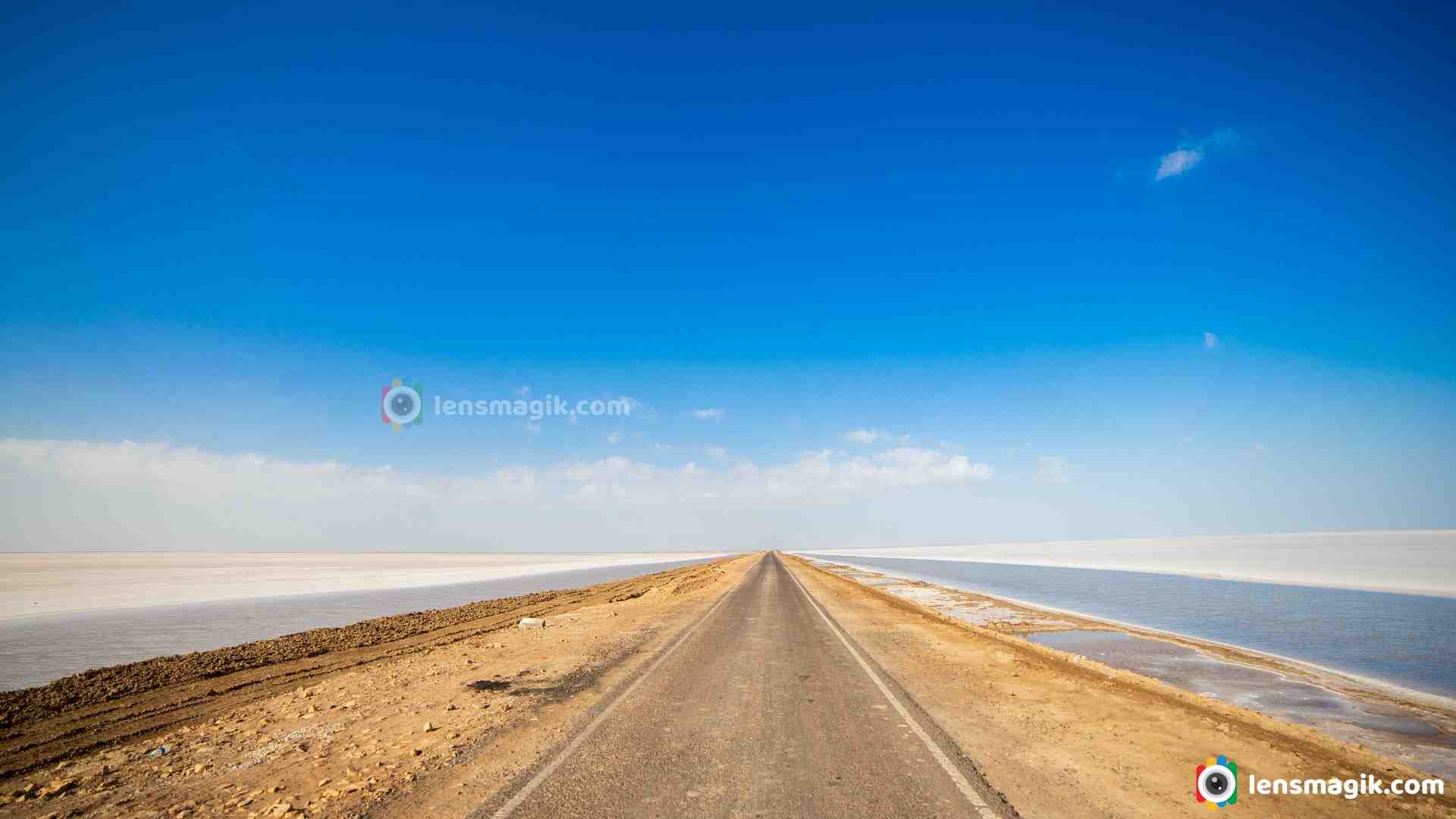

I must suggest to visit Road To Heaven in Kutch while you visit Kutch. Also Visit Dholavira which is one of the largest Harappan Civilization site.
Places to visit near Road To Heaven :
Dholavira, Kalo Dungar, Dhordo, White Desert
Places to Visit near Bhuj : White Desert , Kadiya dhro, Chhatardi, Mandvi beach, Vijay vilas palace, Bhujyo Dungar, Smriti Van, Vande matram memorial
Camera Used : Canon 80D, Canon 6D, DJI Mavic Air2
It is the largest species of Flamingo bird family and also a most widespread species of flamingo family.It is found in India ,south east , middle east and Africa. It is migratory bird. They also breed in India. In Gujarat they breed in Rann Of Kutch , Little Rann of Kutch also found in Thol Bird Sanctuary. I often visit Thol sanctuary so got good shots of them. Best time for shoot them is may-Jun at Thol bird sanctuary bcz of water level is too low . It is been recorded that some flamingo birds are resident in Gujarat at many places like LRK, Khijadia sanctuary, Nalsarovar and Thol Sanctuary. They also breed here and stay for all seasons. So you can find greater flamingo birds in all seasons in Gujarat at many places.
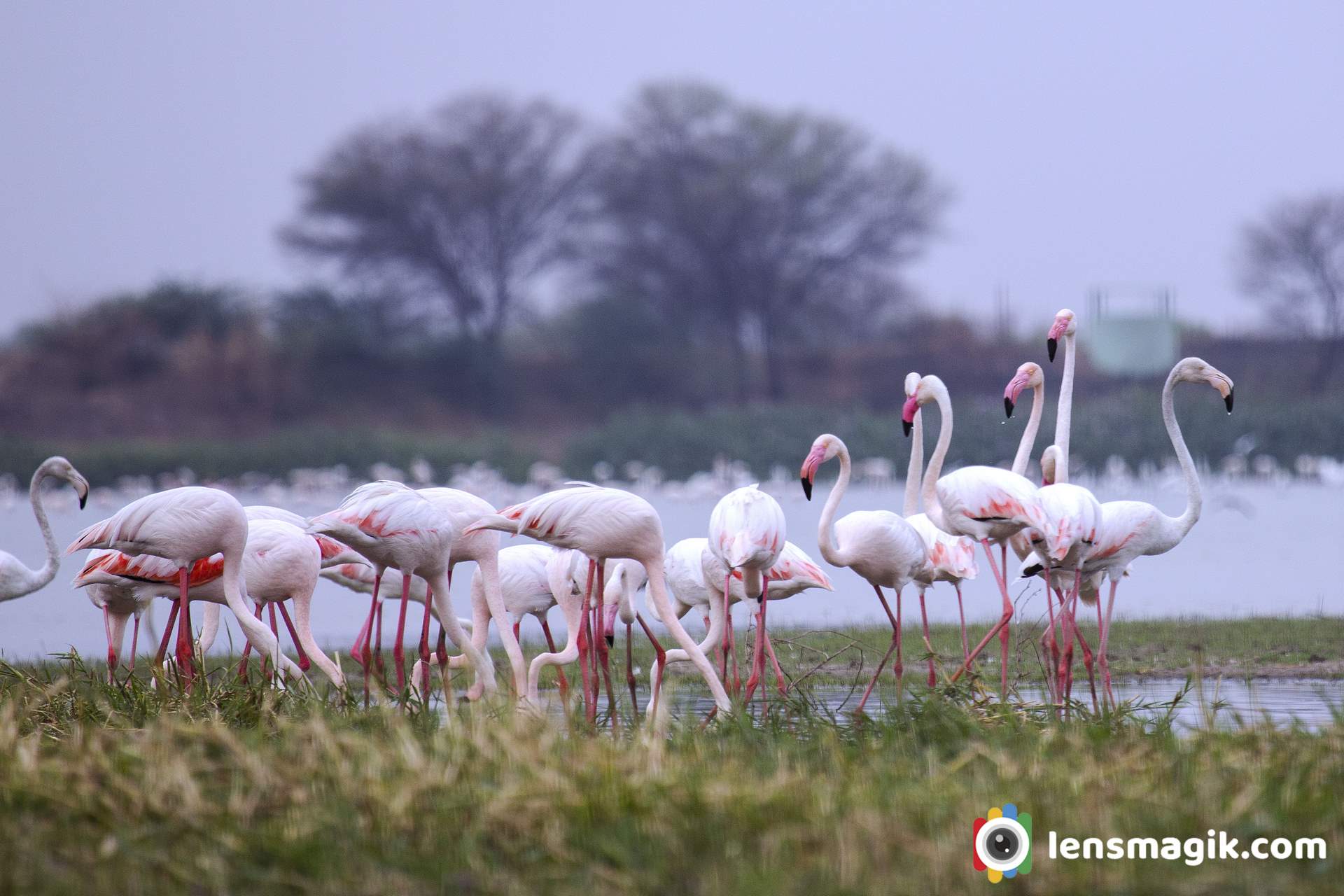
Flamingo bird facts and description :
- Greater flamingo bird is the largest living spices of flamingo.
- Greater flamingo has no subspices.
- Flamingo color most of pinkish white in plumage. Wings are red and feathers are black in end.
- Greater Flamingo bird call is like honking.
- The average lifespan of flamingo bird is 30-40 years.
- Main Difference between Greater flamingo and lesser flamingo is height . Lesser flamingo is shorter than greater flamingo. Also Greater flamingo has pale pink bill and black tip. In other case lesser flamingo has dark crimson bill. Lesser flamingo is also more red in color than greater flamingos.
Greater Flamingo birds In Thol Lake : Thol sanctuary is often i visit. Flamingo birds are stay here all seasons. I got good numbers of Greater flamingo and lesser flamingo bird images in a group when i visit Thol. This is my best time with flamingos. Also i got some beautiful pictures of flamingo birds with group and also in duo with some masti. Flamingos looks very good in frame bcz of their color. Thol lake is good place for birders because more than 150 birds spices found here. Also some mammals like Blue bull and black buck also found here. Lots of water birds and tree birds found here. Also sanctuary is not so big so you can find all birds in around 6 sqkm area. Best time to visit thol lake is November to March. All migratory birds are visit in winter so that is best time. Early morning is best for birders.
Timing And Fees of Thol Sanctuary :
Thol Sanctuary open at 6 AM in morning and close at around 5 PM
Fees of Thol Sanctuary is 50 INR per person and camera fees are 200 INR. Car fees are 500 INR.
Weekend fees may change that actually i don't know about it.
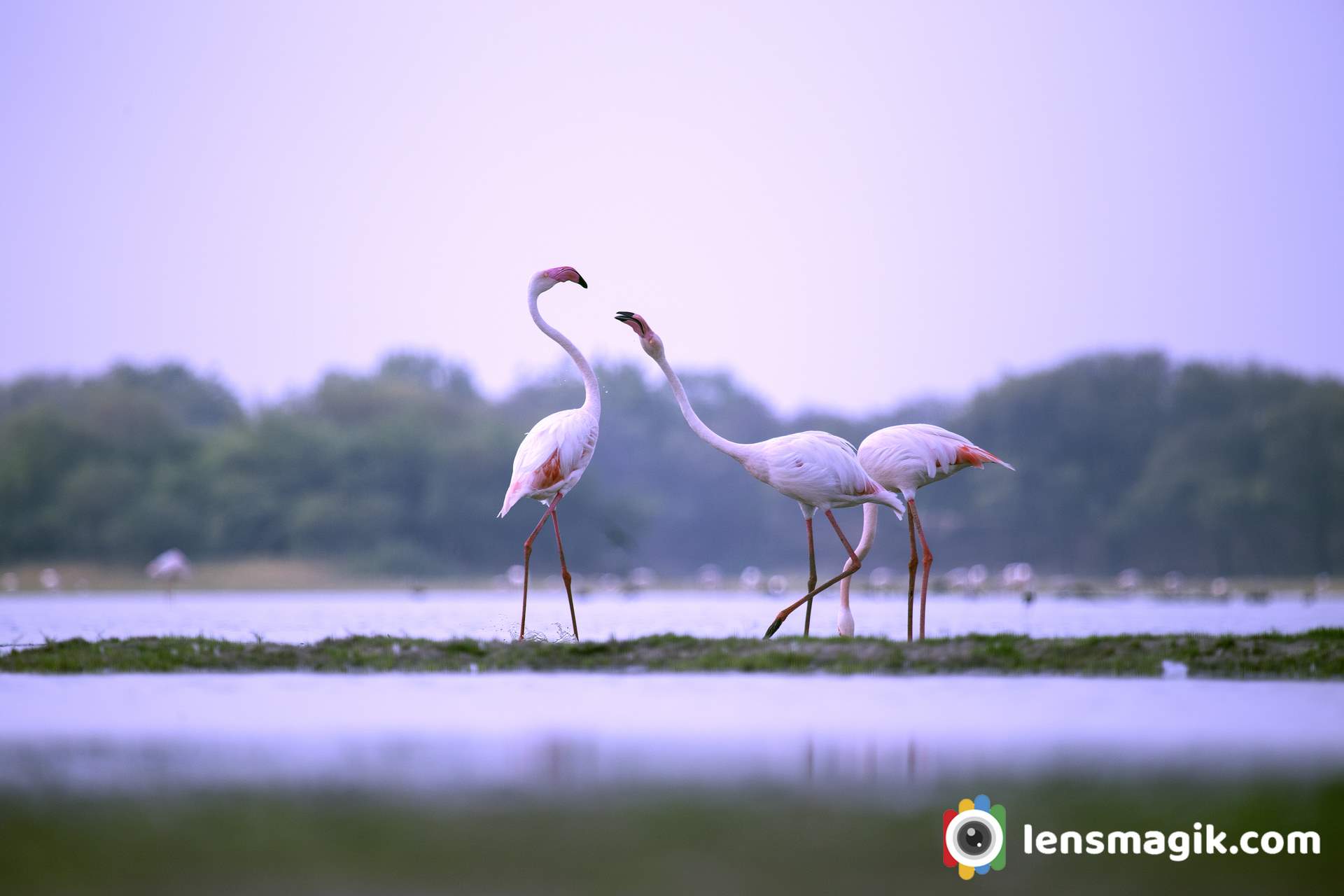
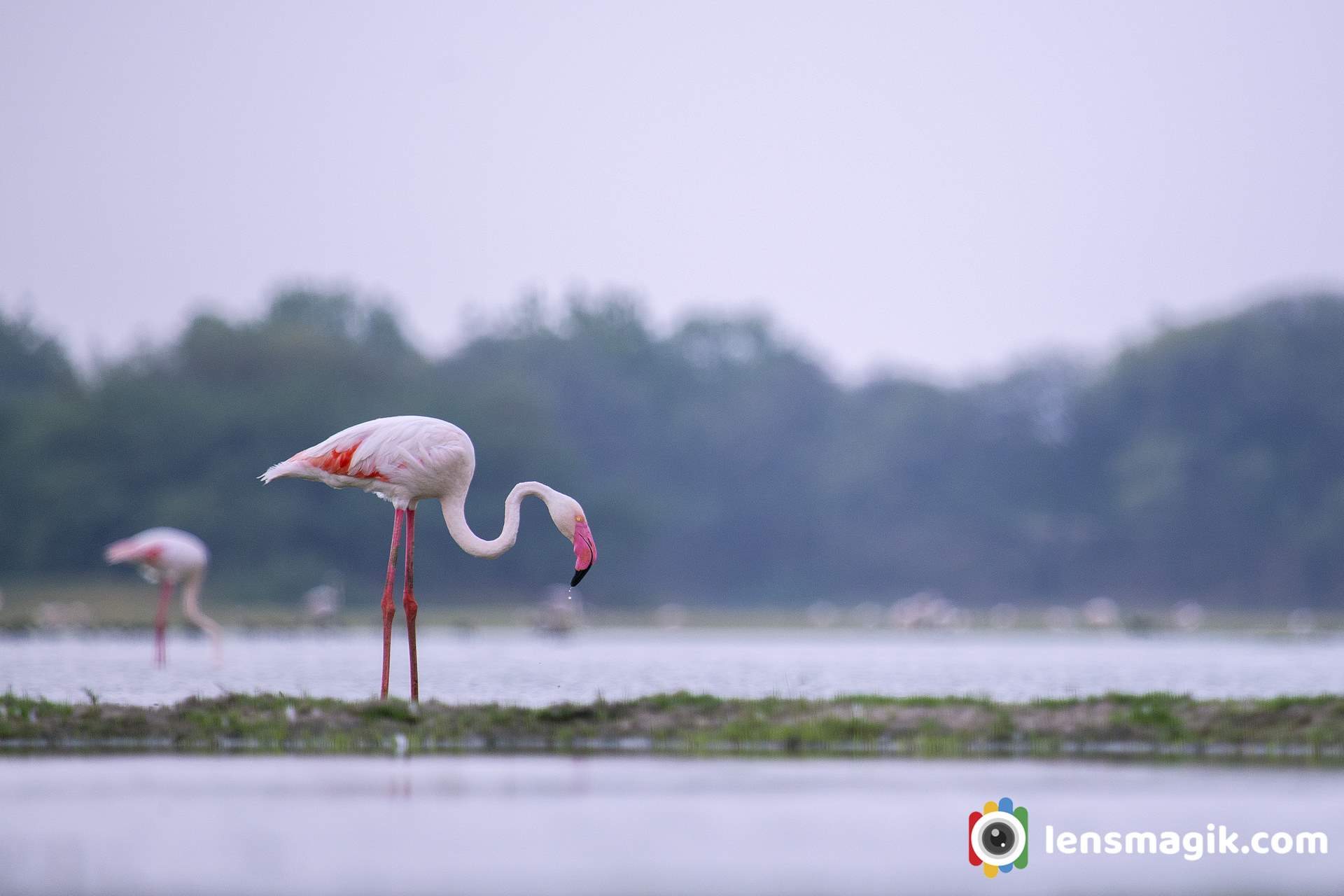
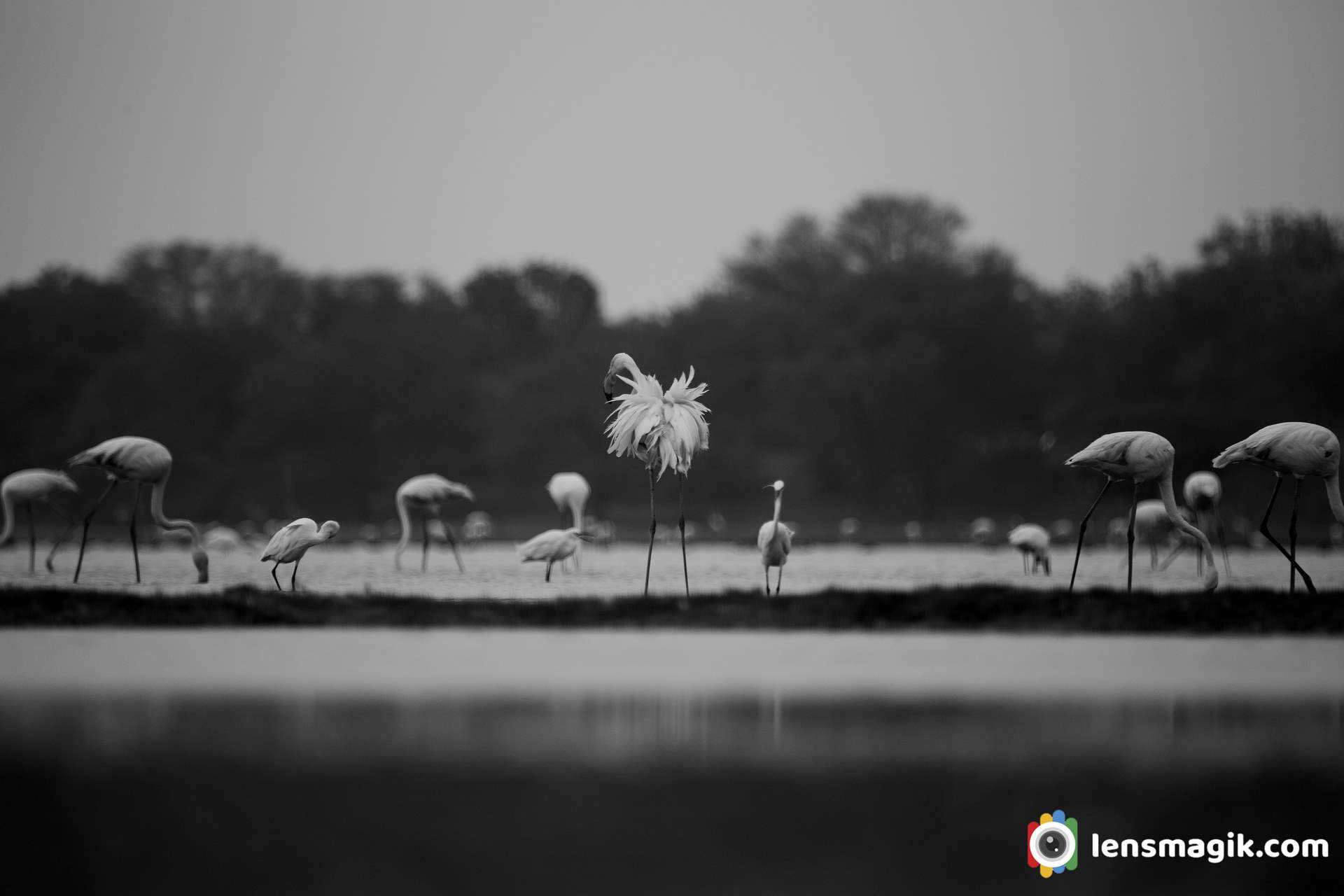
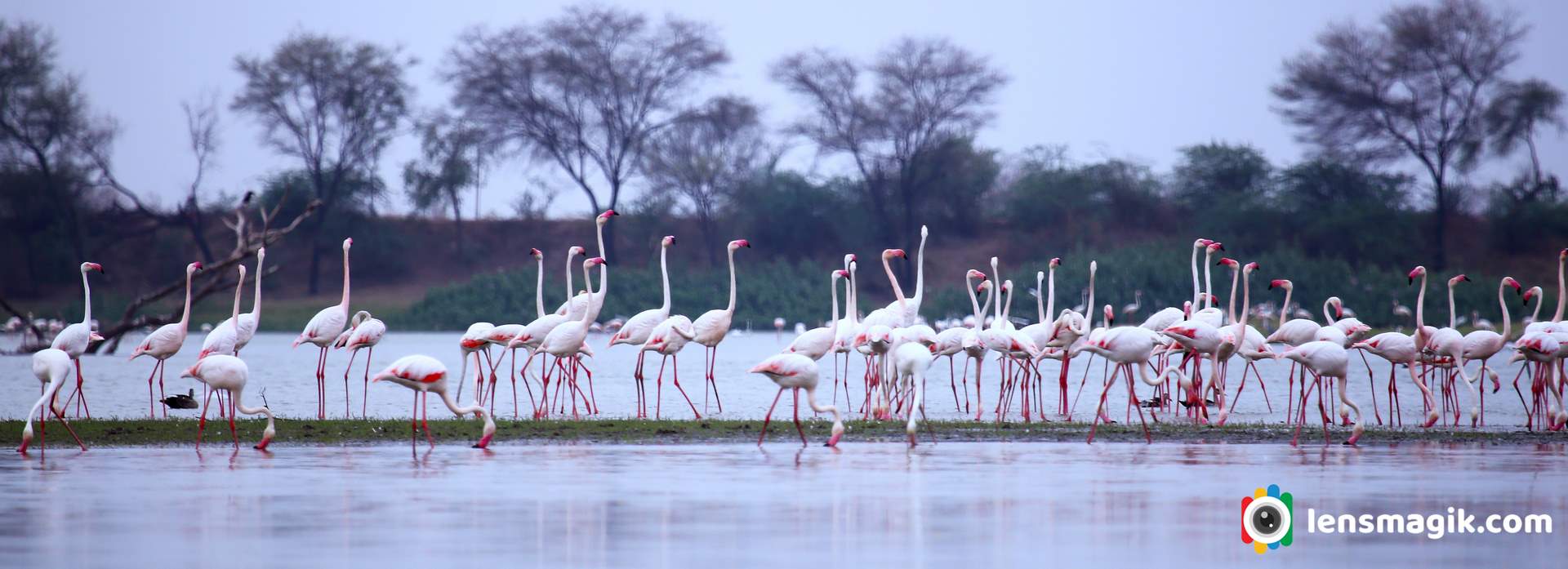
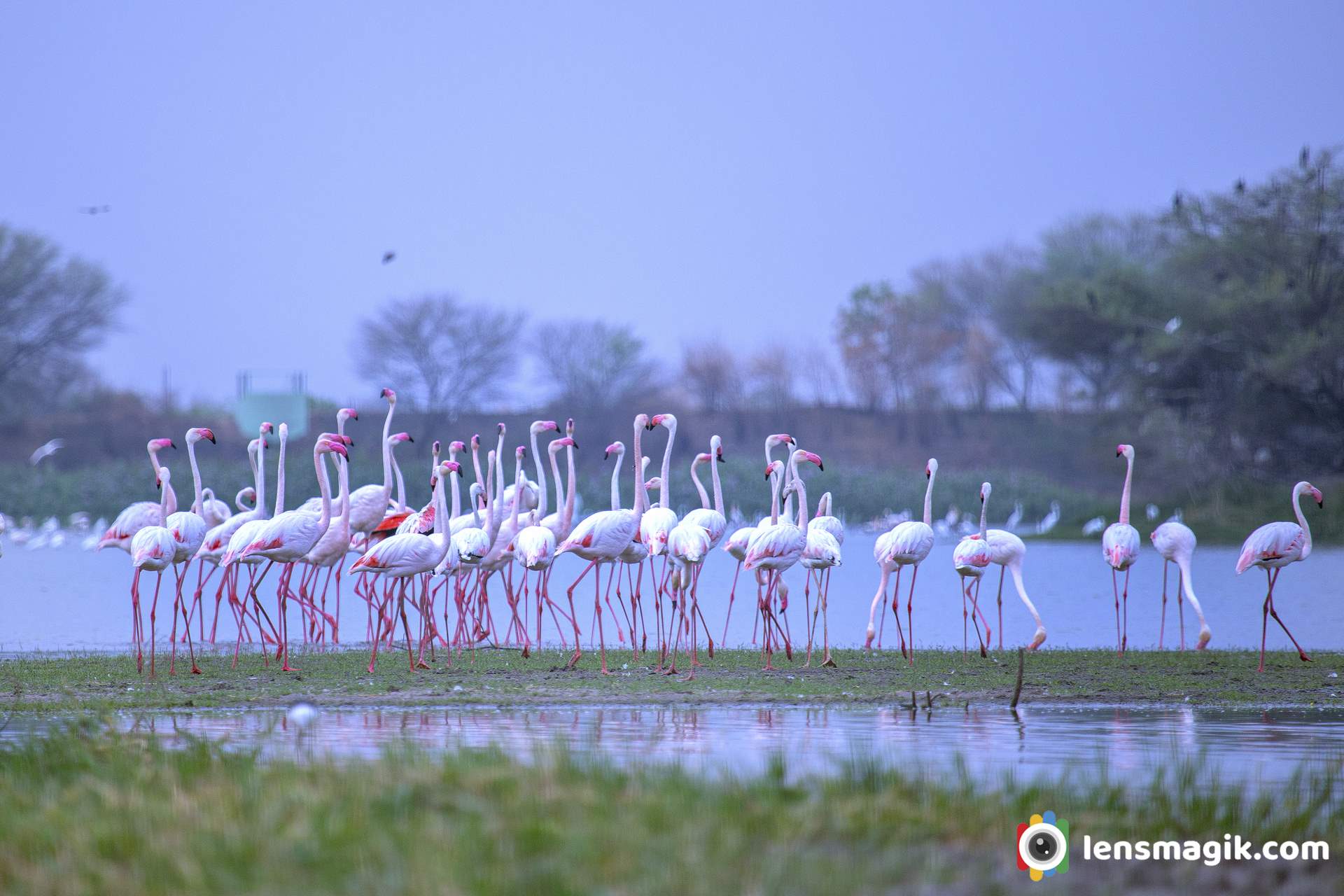
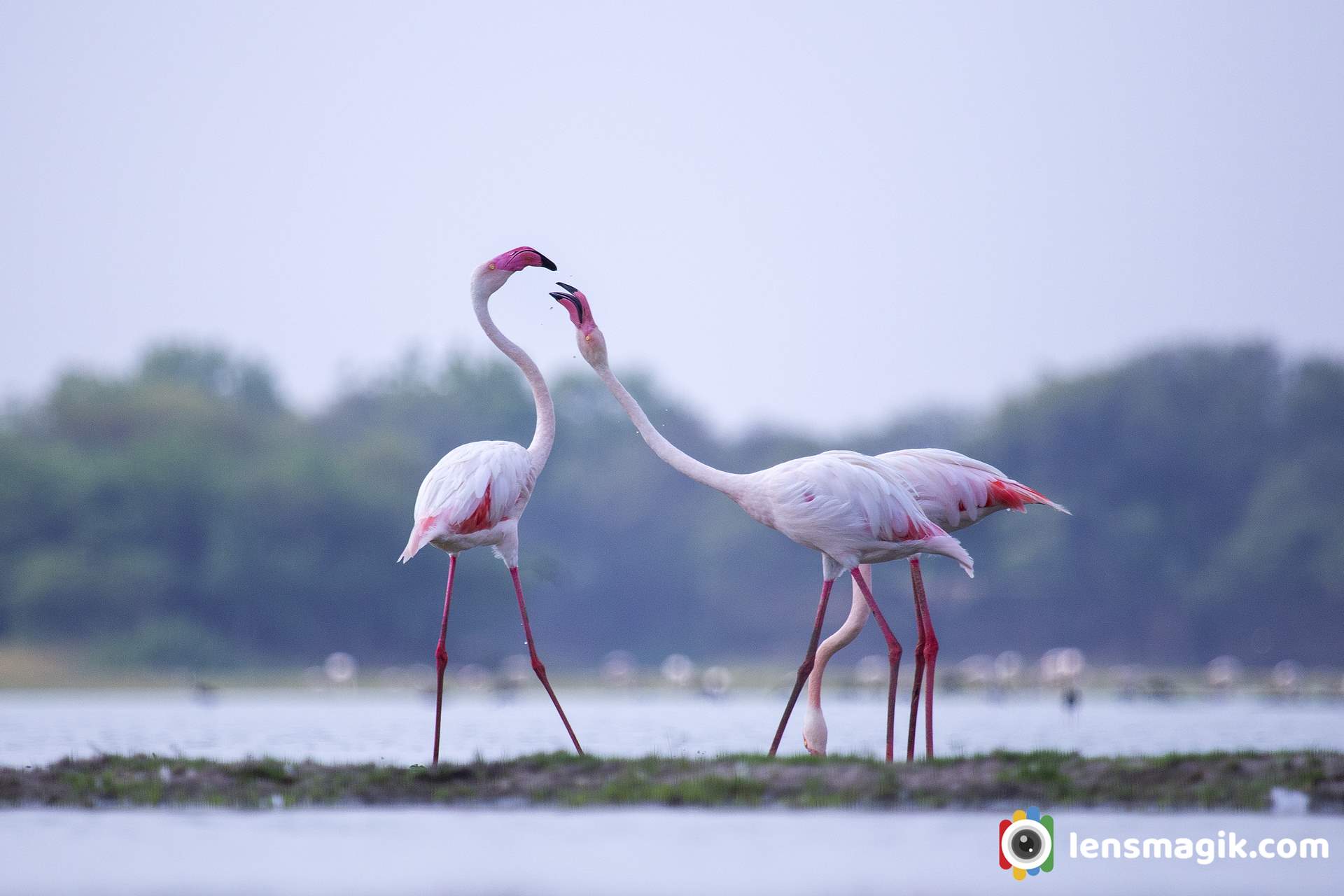

Two flamingos with little egret in between of them with down head all. The images of flamingo bird making a good frame. Because of its color flamingo birds images are very attractive and also their grouping make a perfect frame of flamingo bird picture.
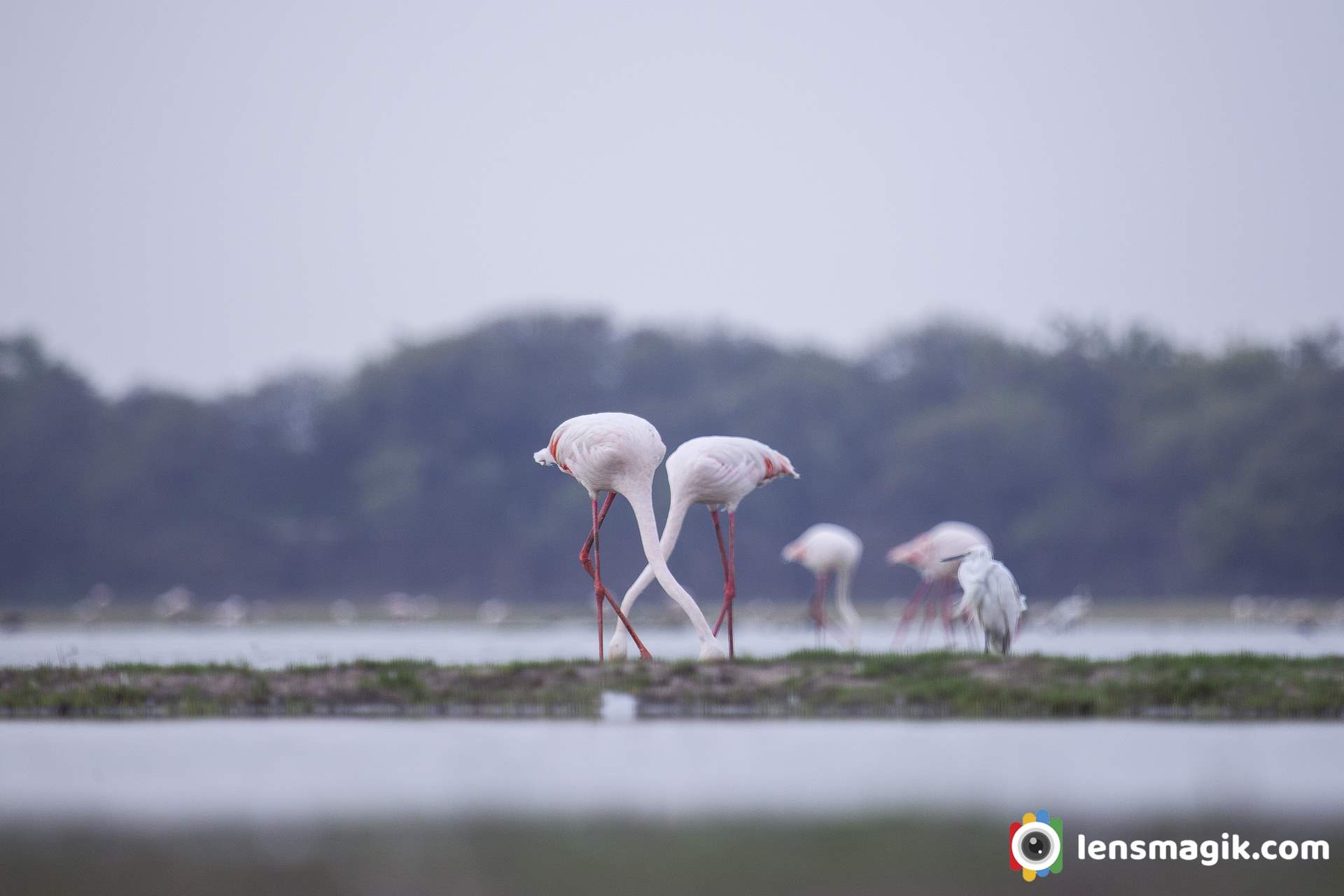
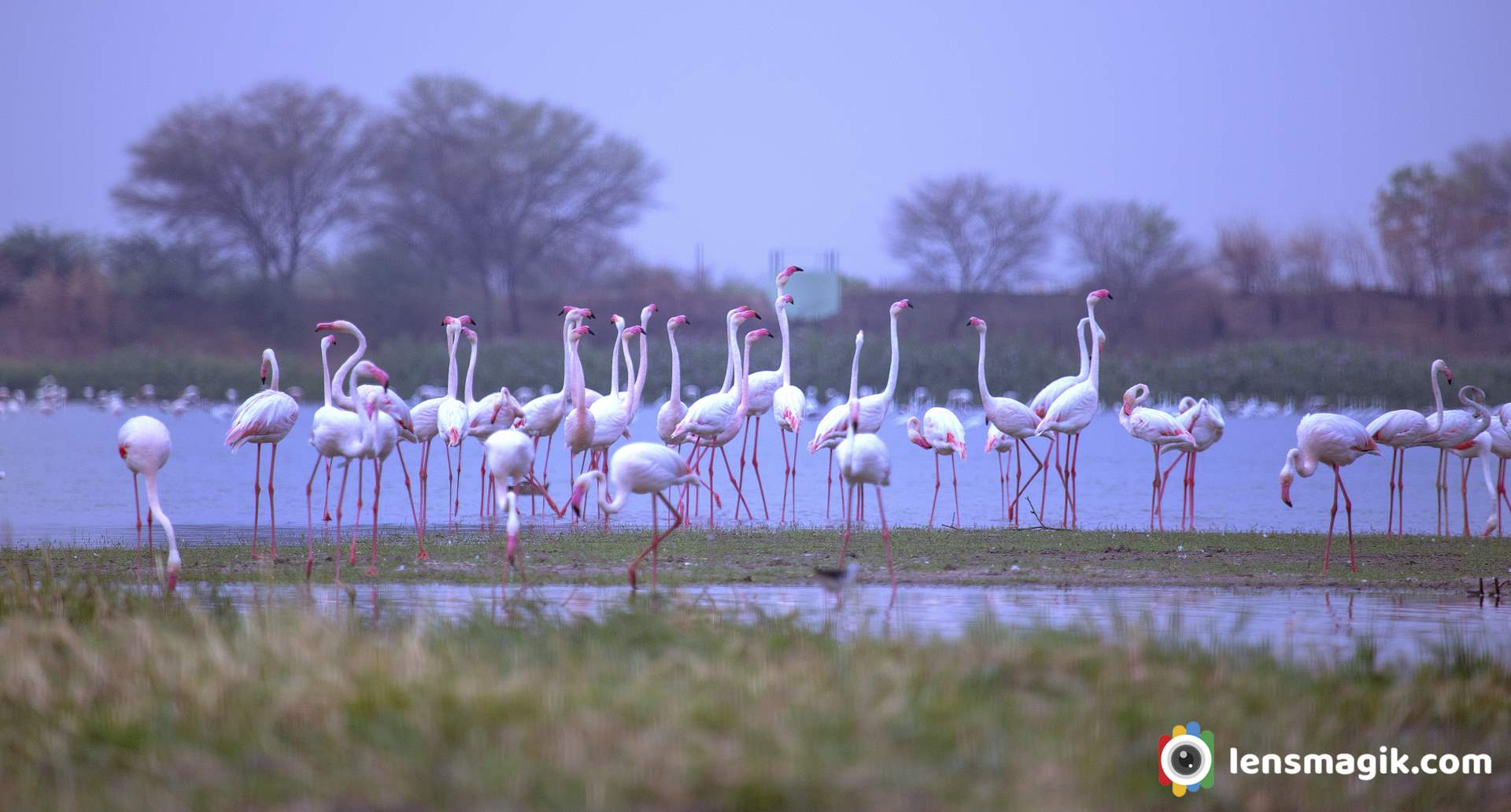
A morning pared time for flamingo birds. A beautiful Greater flamingo birds are in a raw make image nice and show their unity.
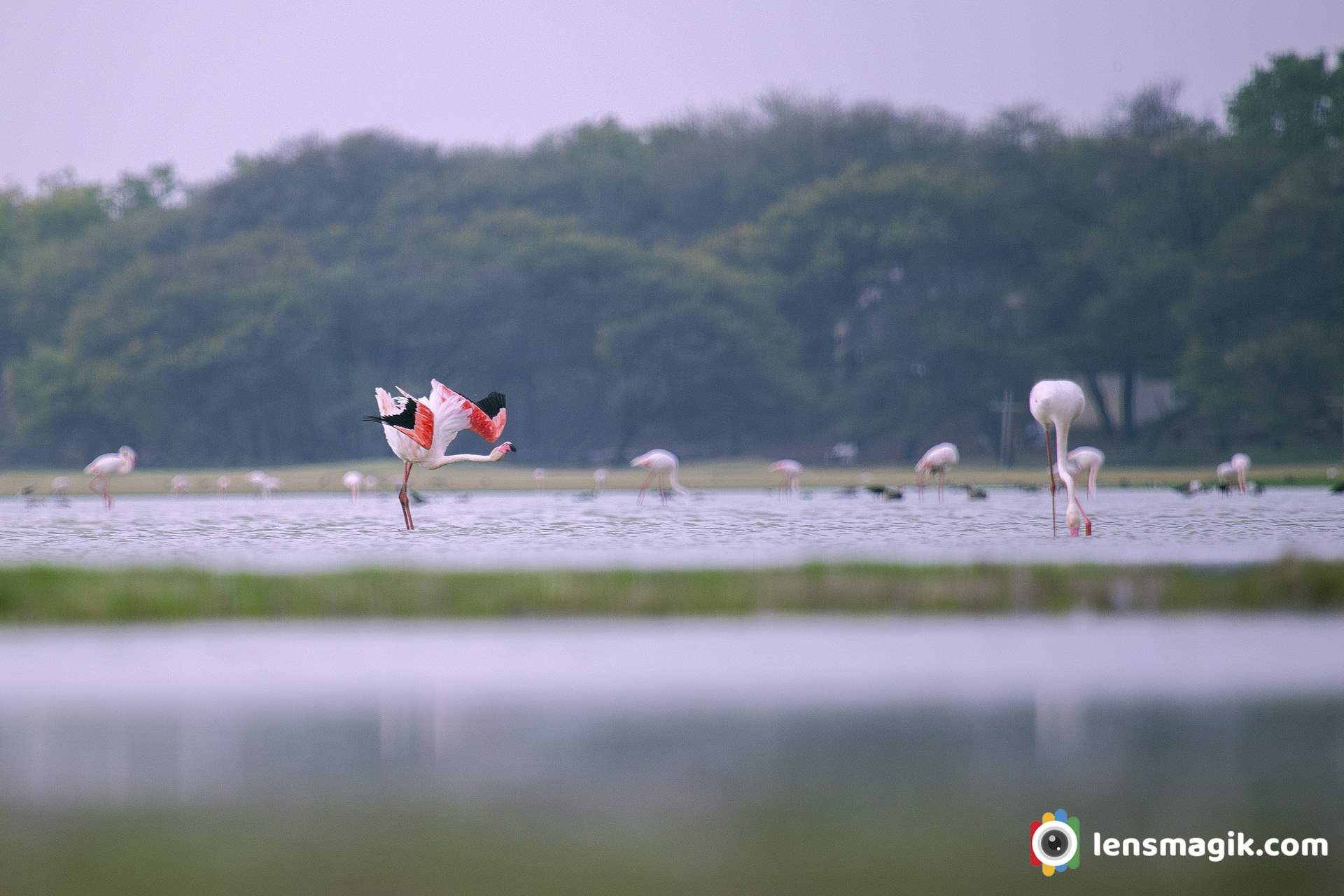
Perfact wingspan of Flamingo bird looks great. Pink Wings make image more attractive.
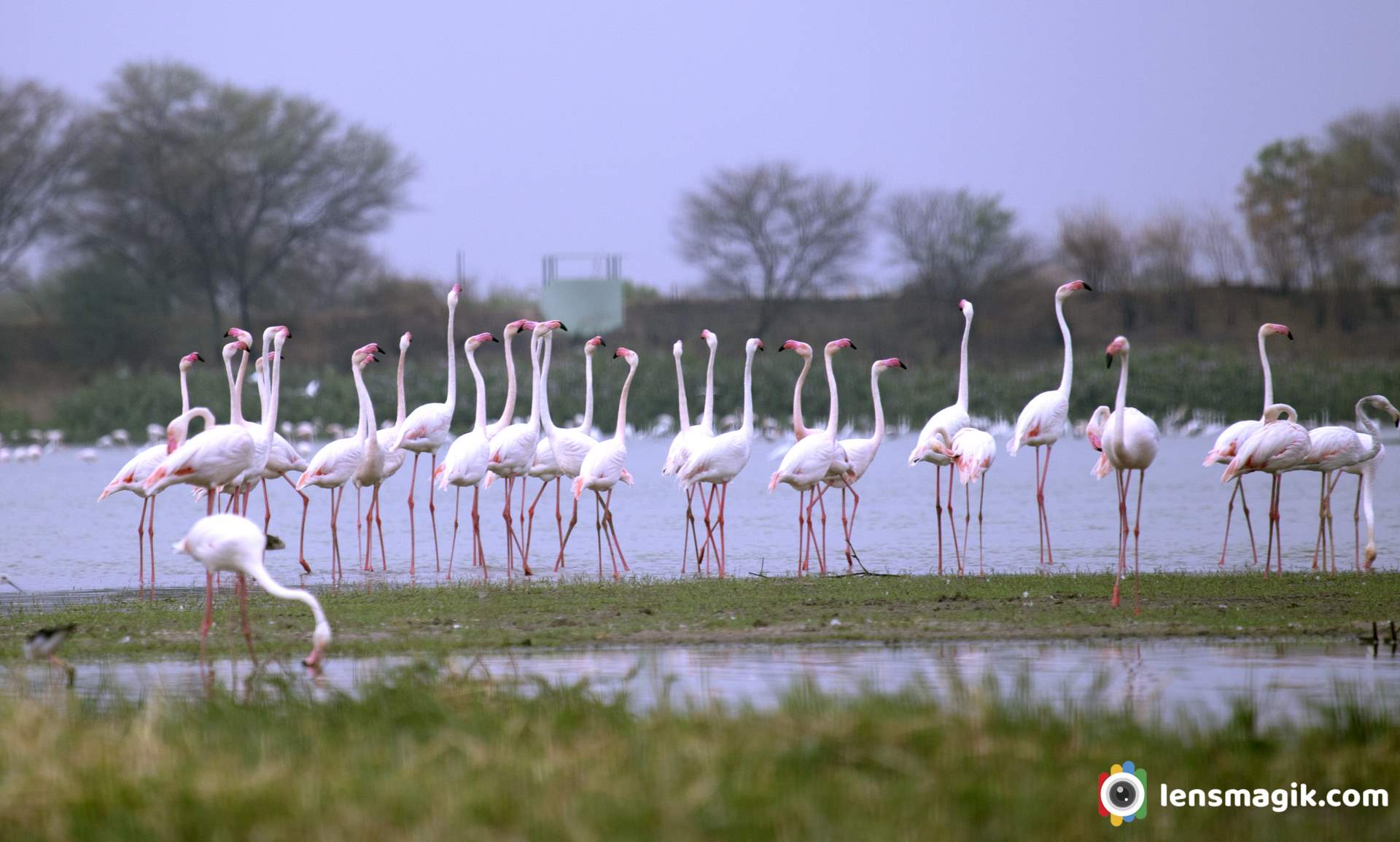
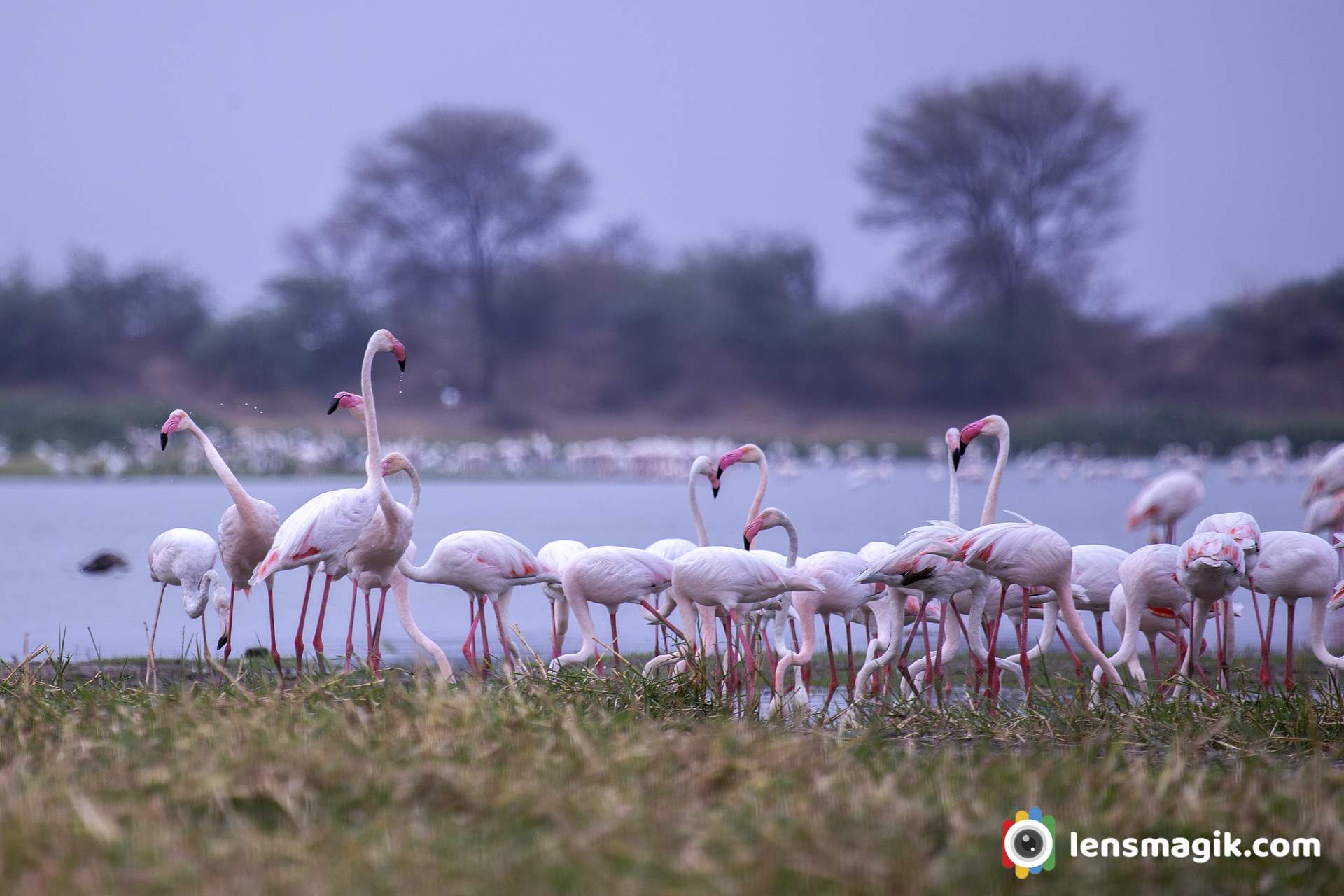
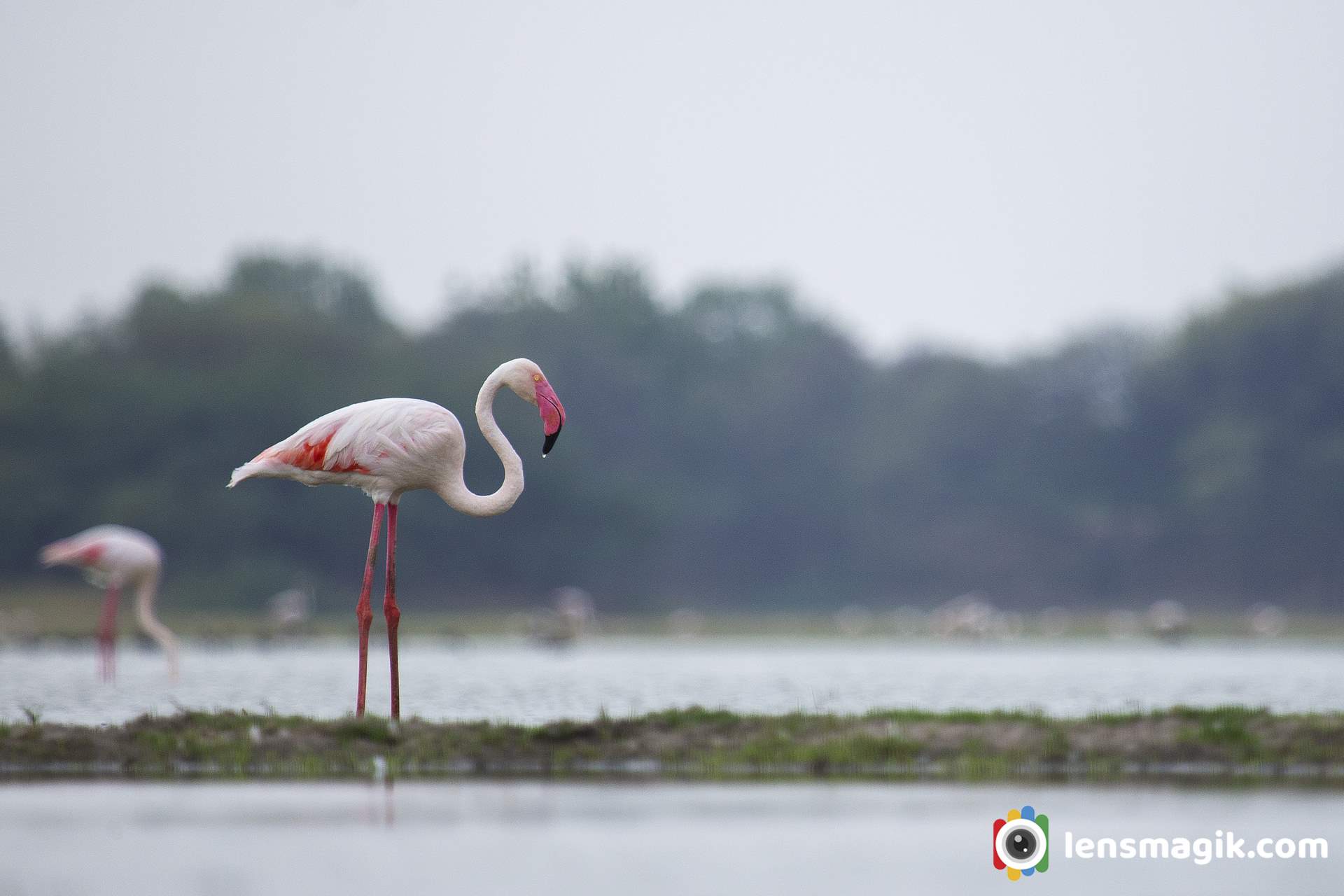
Solo Greater flamingo bird
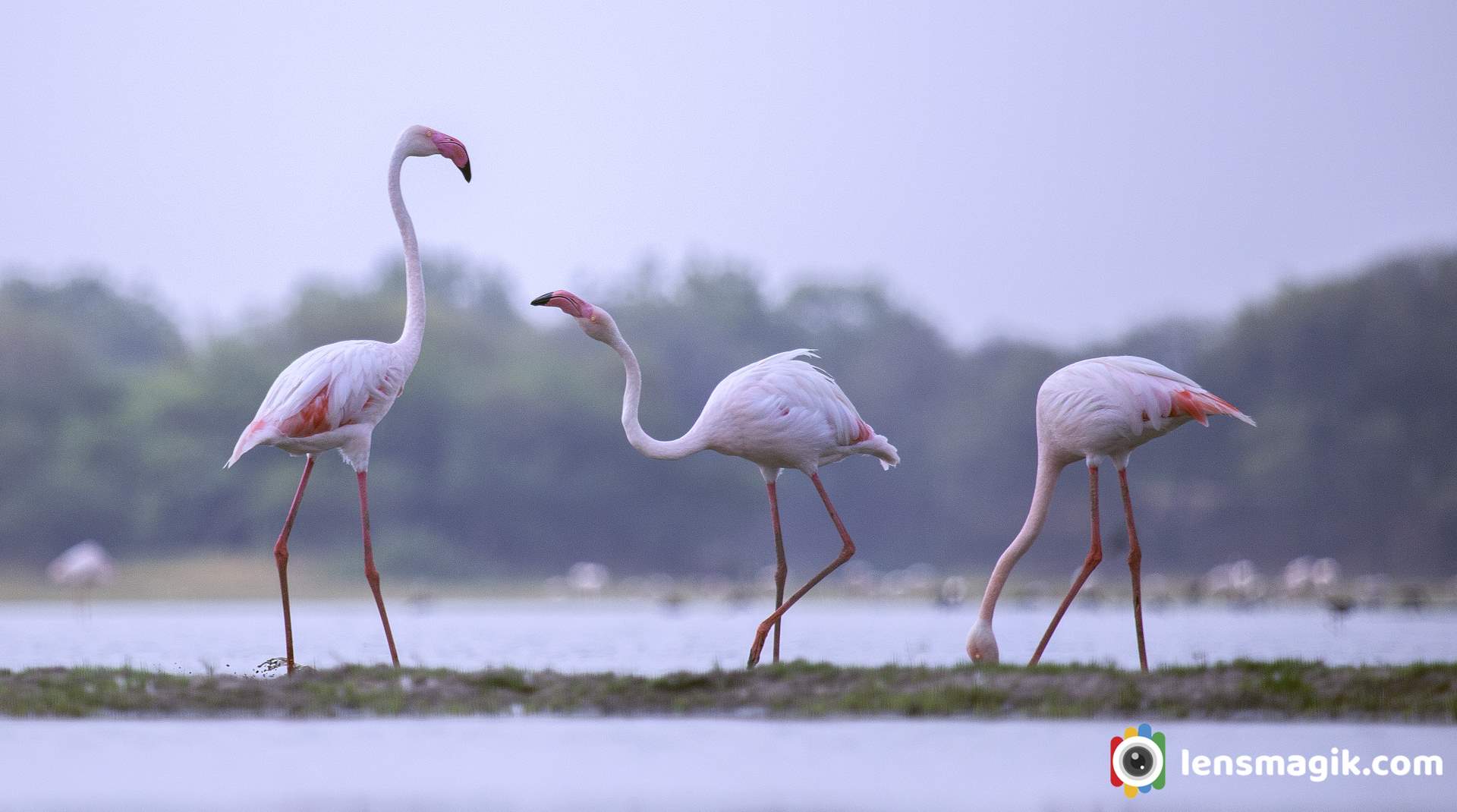
Some masti time for two flamingo birds .
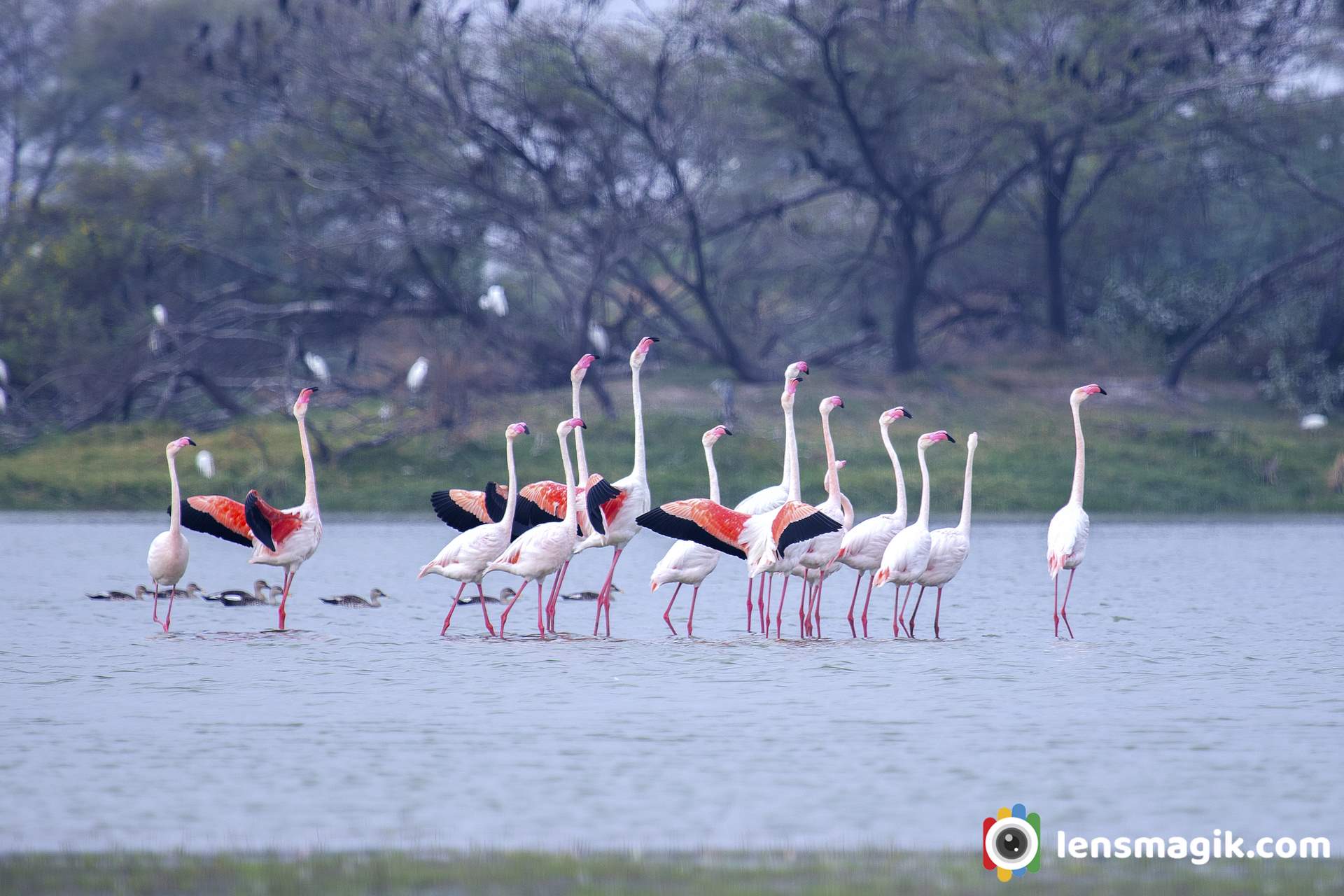
Above image shows the discipline of Flamingo Bird and looks like a morning pared they are doing .
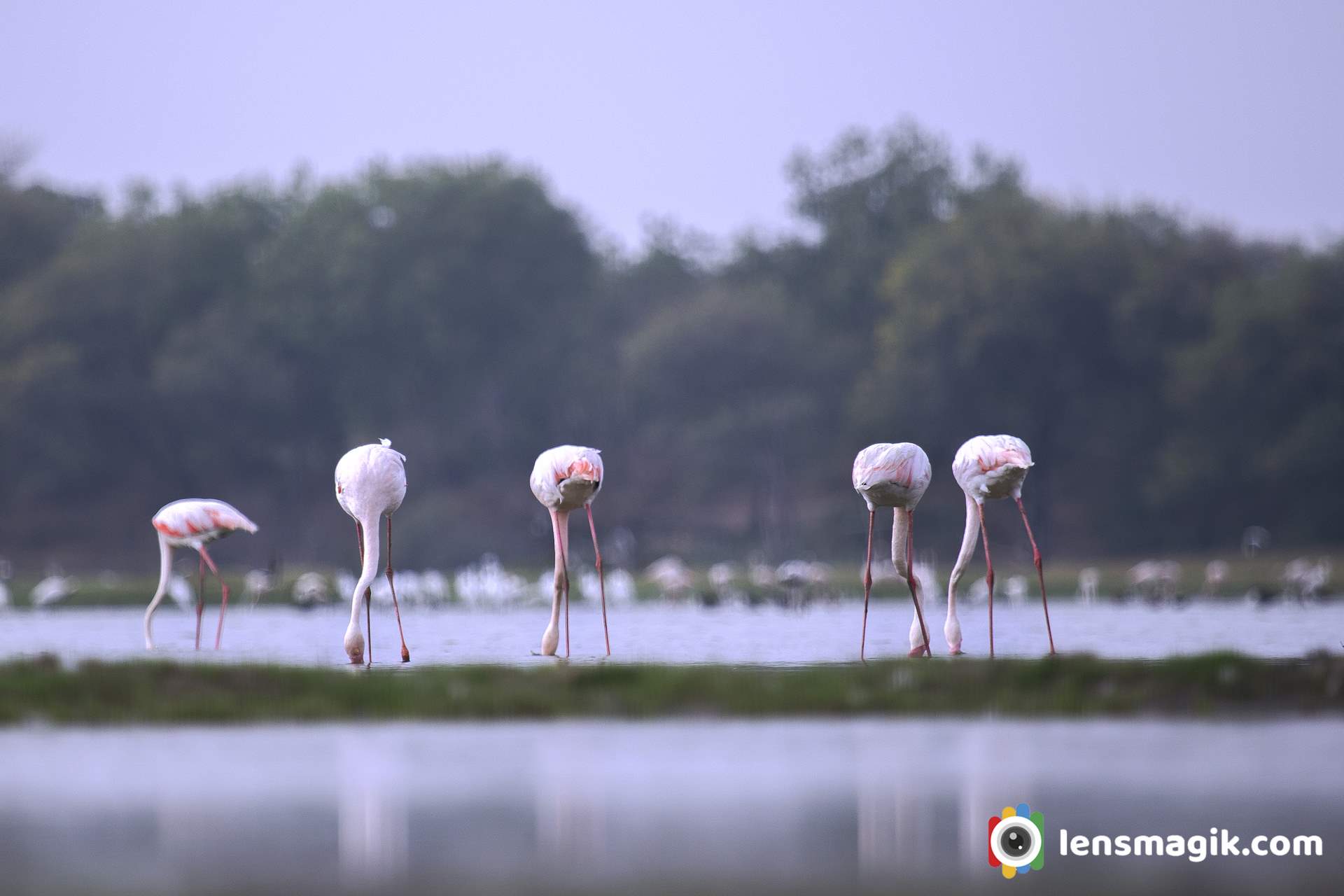
https://youtu.be/9dVBrR9NSOo
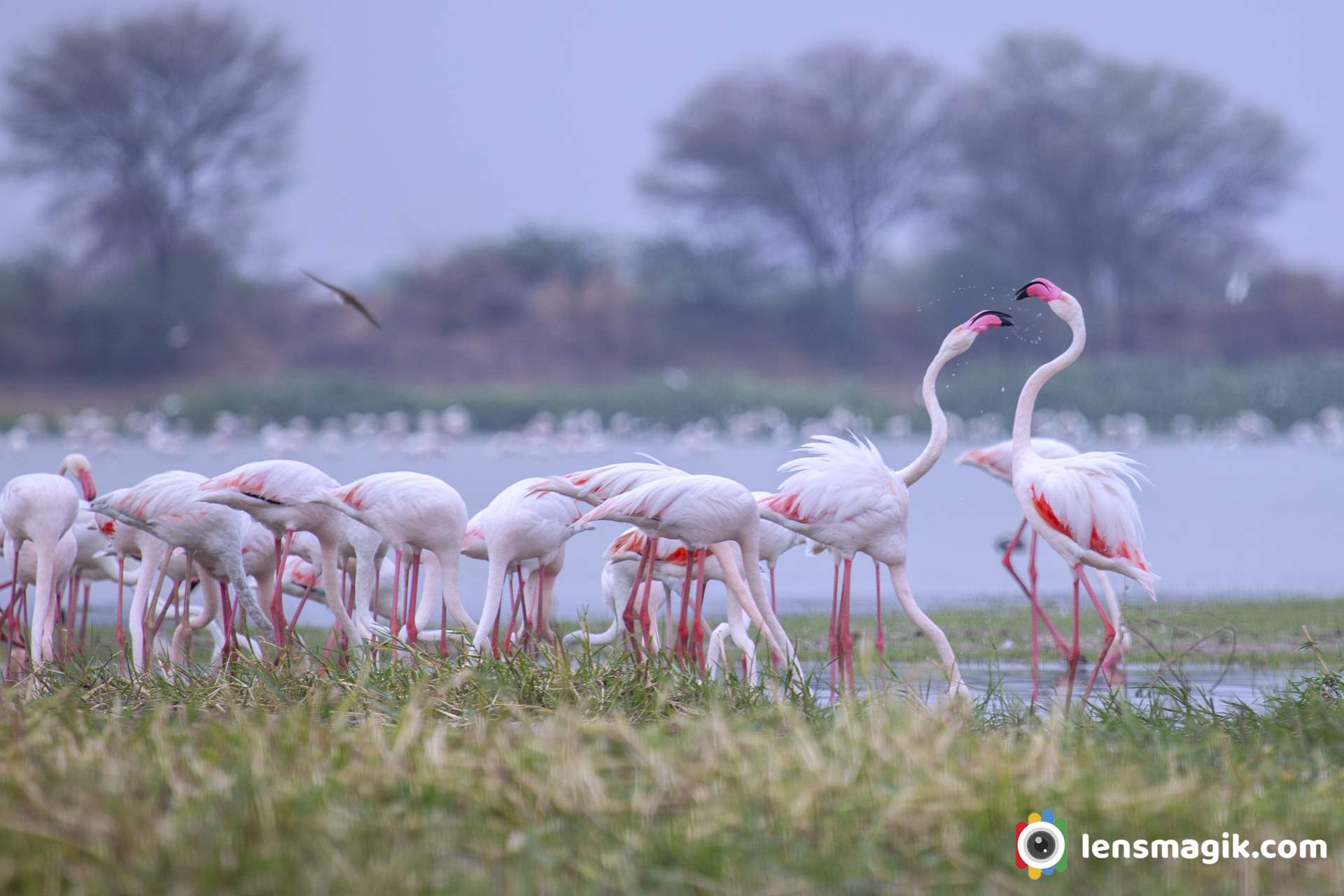
A group of Flamingo Birds at Thol Lake make your frame awesome.
Location : Thol Lake, Gujarat
Thol lake is just 25 km approx. from Ahmedabad. You can visit one day for Thol lake is enough. Also you can find another migratory birds like pelicans , bar headed goose, river tern and many more resident spices.
Ahmedabad to Thol lake distance about 25km
Thol bird sanctuary is located in Kadi Taluka in Mehsana District near sanand Gujarat. It is an artificial lake located near village Thol. In 1912 thol lake was built and it was declared as a Sanctuary in 1988. The main use of lake is use of water for irrigation. The Thol Bird Sanctuary or a Thol lake wildlife Sanctuary India is a habitat of more than 150 spices of birds. Also it is famous for migratory birds Flamingos and Sarus Crane which breeds here.


About Thol Lake / Thol Bird Sanctuary
Thol lake is located near Thol village and its area around 38000 acres. Lake faces all season winter , summer and monsoon. During winter temperature goes to 8 degree and in summer temperature goes to 43 degree. Thol lake is under control of Forest and Irrigation department of Gujarat. Thol lake water storage capacity is around 84 million cubic meters. Thol wildlife sanctuary is declared as Eco Sensitive Zone .
Flora and Fauna Thol Sanctuary :
Thol lake has many vegetation plants like Zizyphus, Acacia nilotica, Ficus, Capparis, Azadirachta indica etc. There are also some mix flora of Marshy and Aquatic plants reported in Thol Lake.
Thol lake is protected area and it is very good habitat for water birds. In thol bird sanctuary there are more than 150 spices of birds found . Among these more than 60 % of birds are water birds. Flamingo bird is most prominent bird of Thol Lake. Also Sarus Crane nest in large number here.
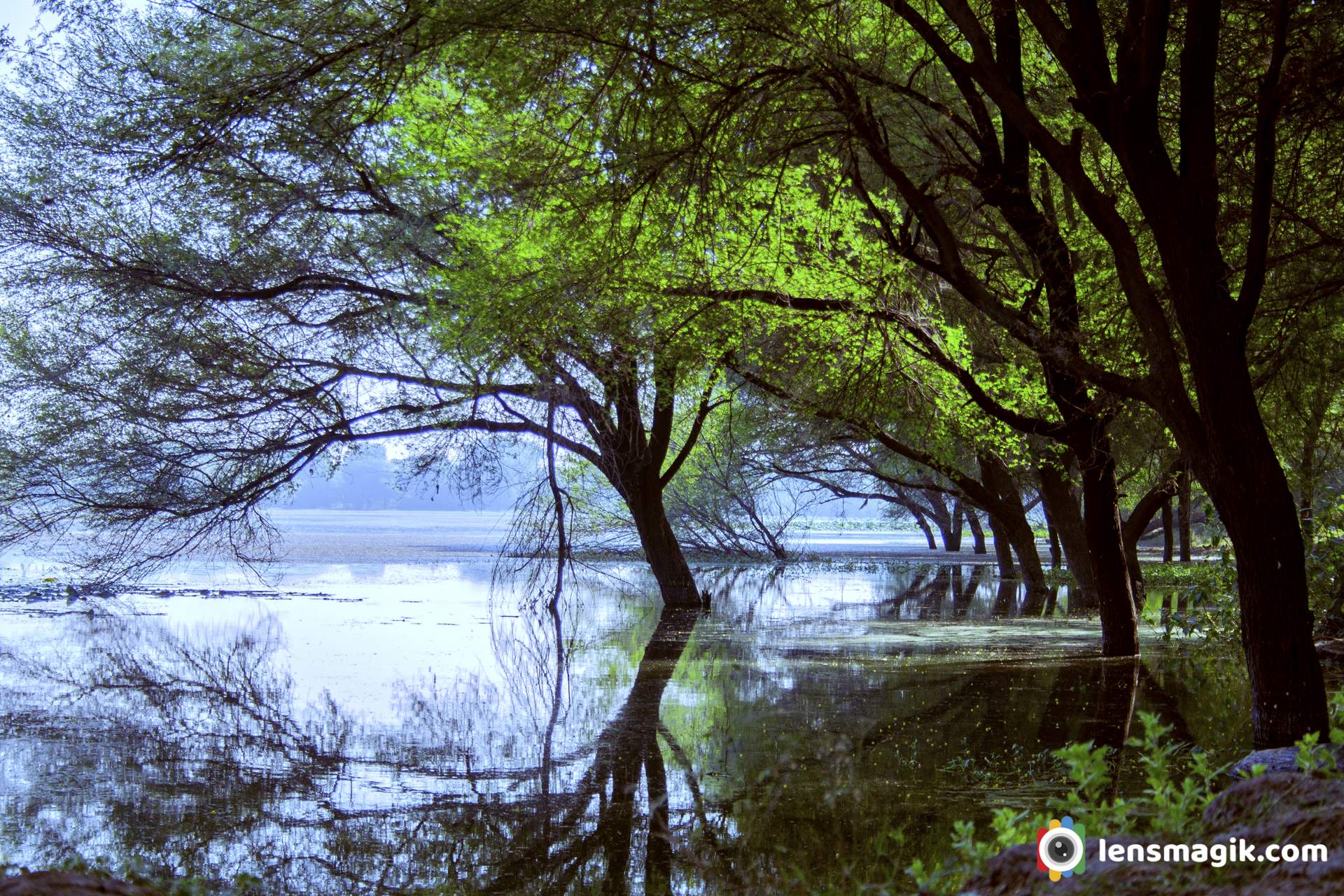
Famous Migratory Birds of Thol Lake
• Flamingos
• Sarus Crane
• Great White Pelican
• Mallards
• Bar Headed Geese , Grey Headed Geese
• Waterfowl
There are also some spices reported here like Dalmatian Pelican, Indian Skimmer, Greater Spotted Eagle, Indian Vulture and white rumped Vulture etc. In Mammals Bluebull, Blackbuck and Golden jackal reported here.
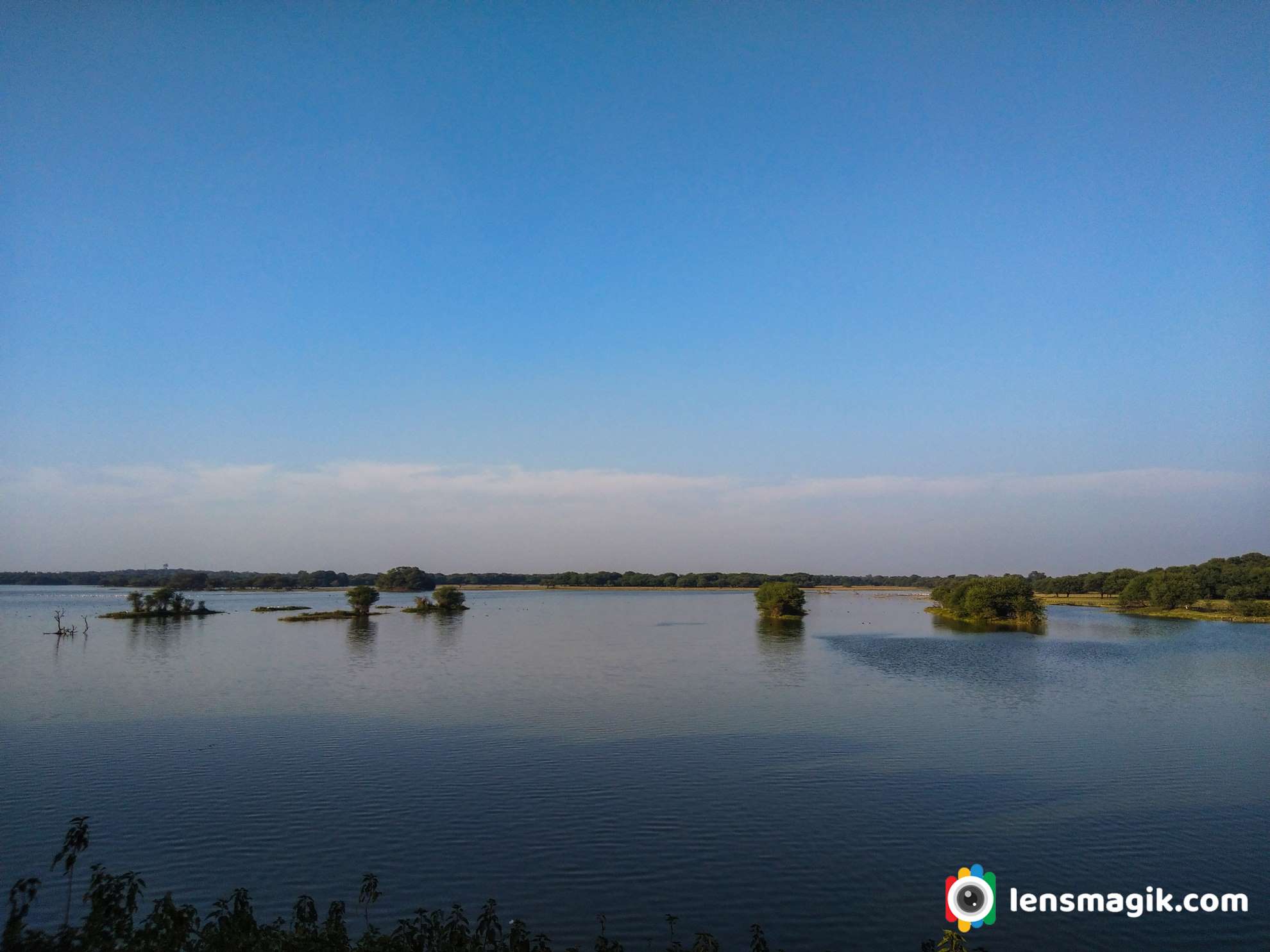
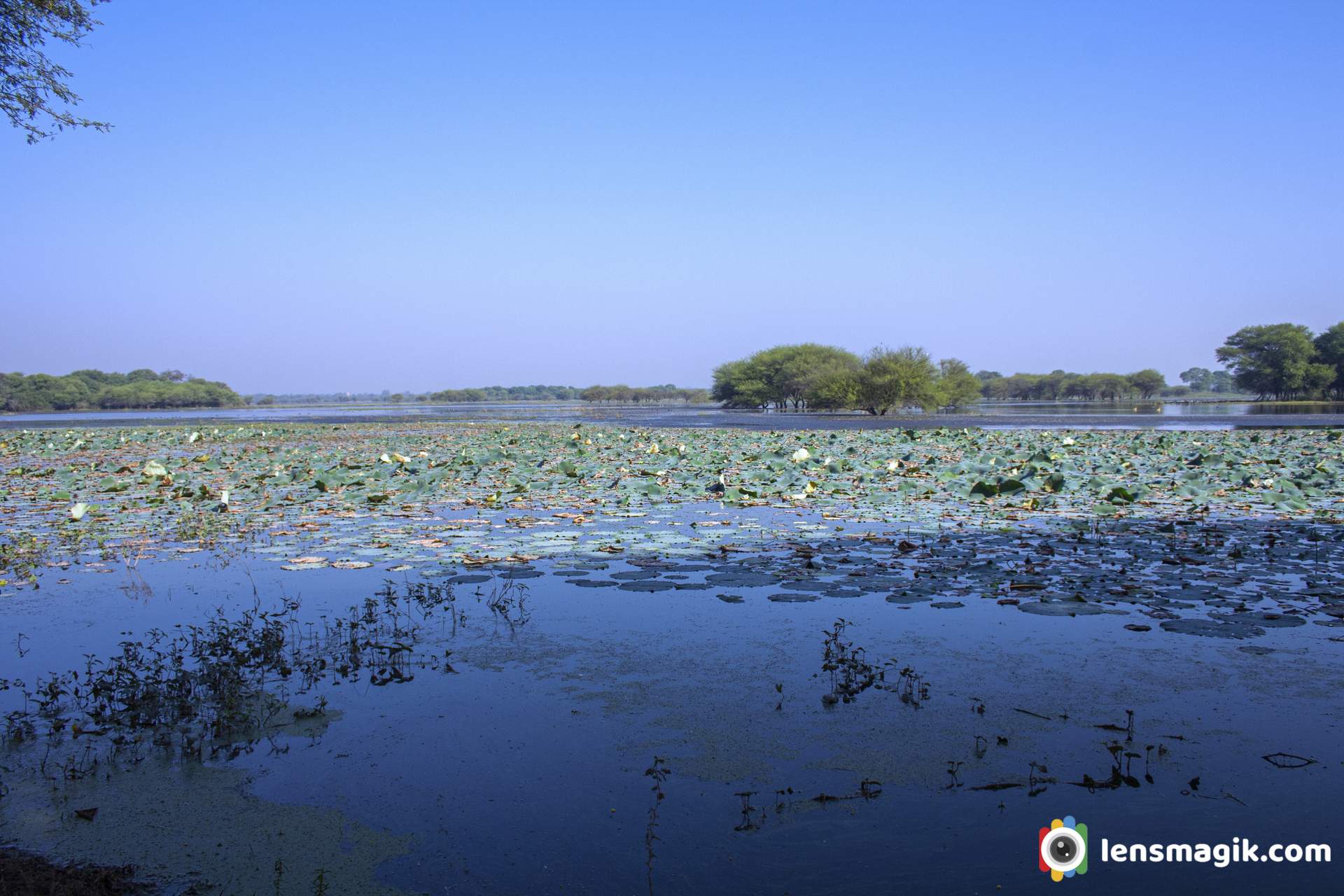
Thol Lake Timing and Fees :
Thol lake open everyday at 6 AM in morning and close at 5.30 PM in evening. Entry fees for Thol Lake or Thol sanctuary is 50 INR for per person. Also Camera fees extra at 200 INR and if you go via car then car fees also 500 INR. Foreigner fees are 10 $ per person.
Best Time to Visit Thol Sanctuary / Thol Lake :
Best time early morning for Thol Lake. In winter if you go before sunrise you can see Twilight sky amazing with lake shore and birds sound .During all season Thol lake has its own beauty. Every season you can visit at Thol Lake. But mostly during winter from November to March season is best for Thol Sanctuary visit. Because during winter lots of Migratory birds came here and stay for long time so for birding winter season is best at Thol Lake. Also during summer some of birds stays here like flamingos and pelicans, geese etc. So you can also see them in summer too. Also during summer water level of lake is low so may be the birds you can get in deep or sometimes closer. During monsoon most people don’t visit but if you like macro photography then you must visit Thol lake in monsoon. You can get some excellent macro subjects like waterdrops , Spiders, Insects etc.
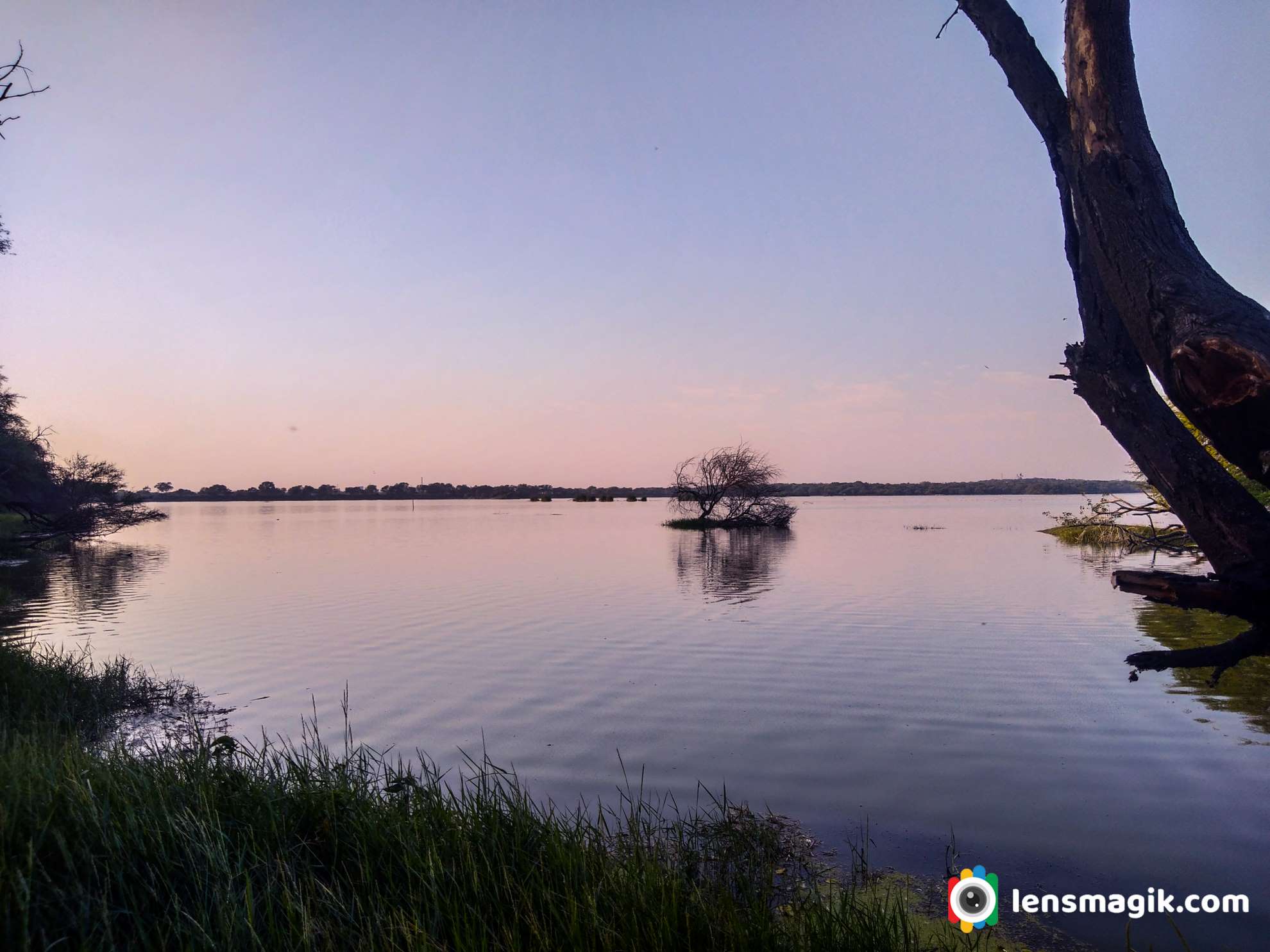
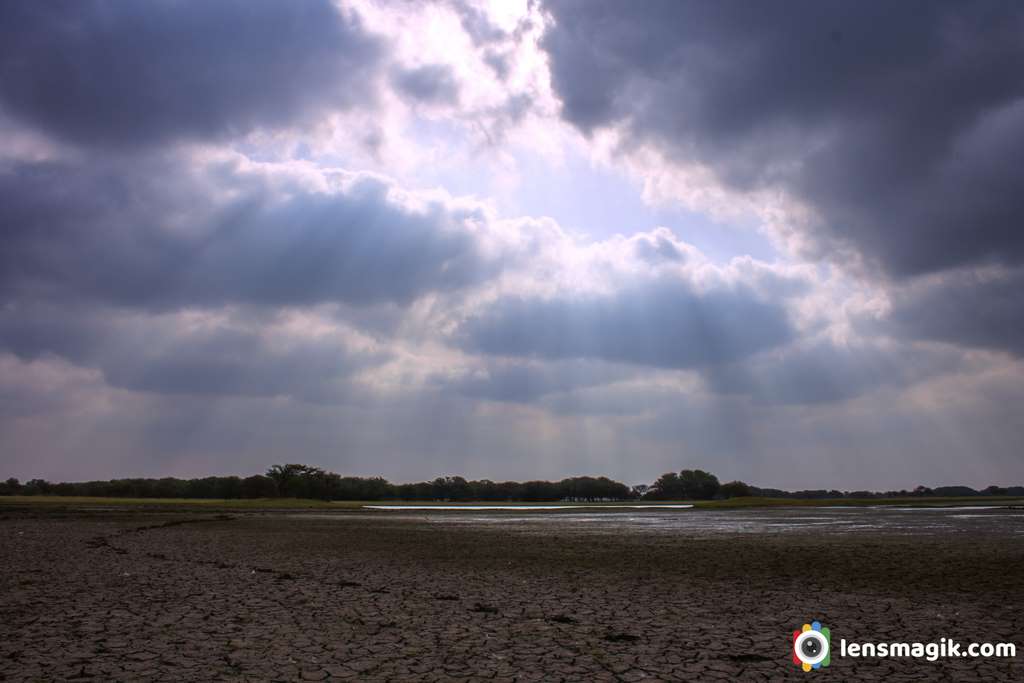
What to do and What not to do in Thol Lake / Keep in mind while visiting sanctuary in India :
• Keep silence in sanctuary
• Maintain discipline
• Keep sanctuary clean
• Do not throw plastic waste anywhere in sanctuary
• Protect wildlife
• Observe birds, mammals etc and protect them and identify them
• Follow rules of wildlife protection act -1972
• Don’t disturb birds and animals
• Don’t enter in sanctuary with liquor and inflammable objects
• Don’t make loud noice.
• Enter in sanctuary with permit only and keep receipt till you leave sanctuary
• Don’t feed birds and animals
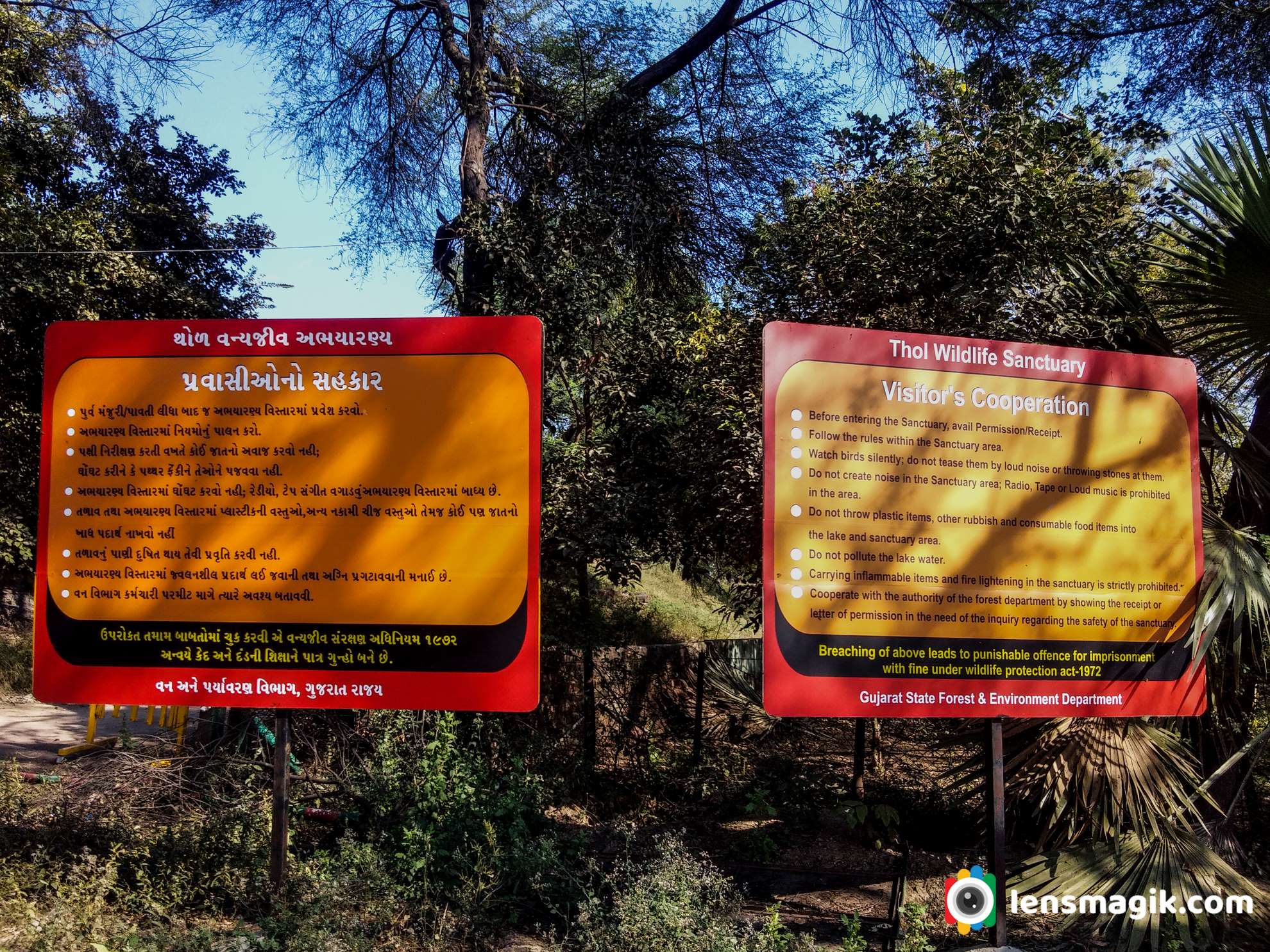
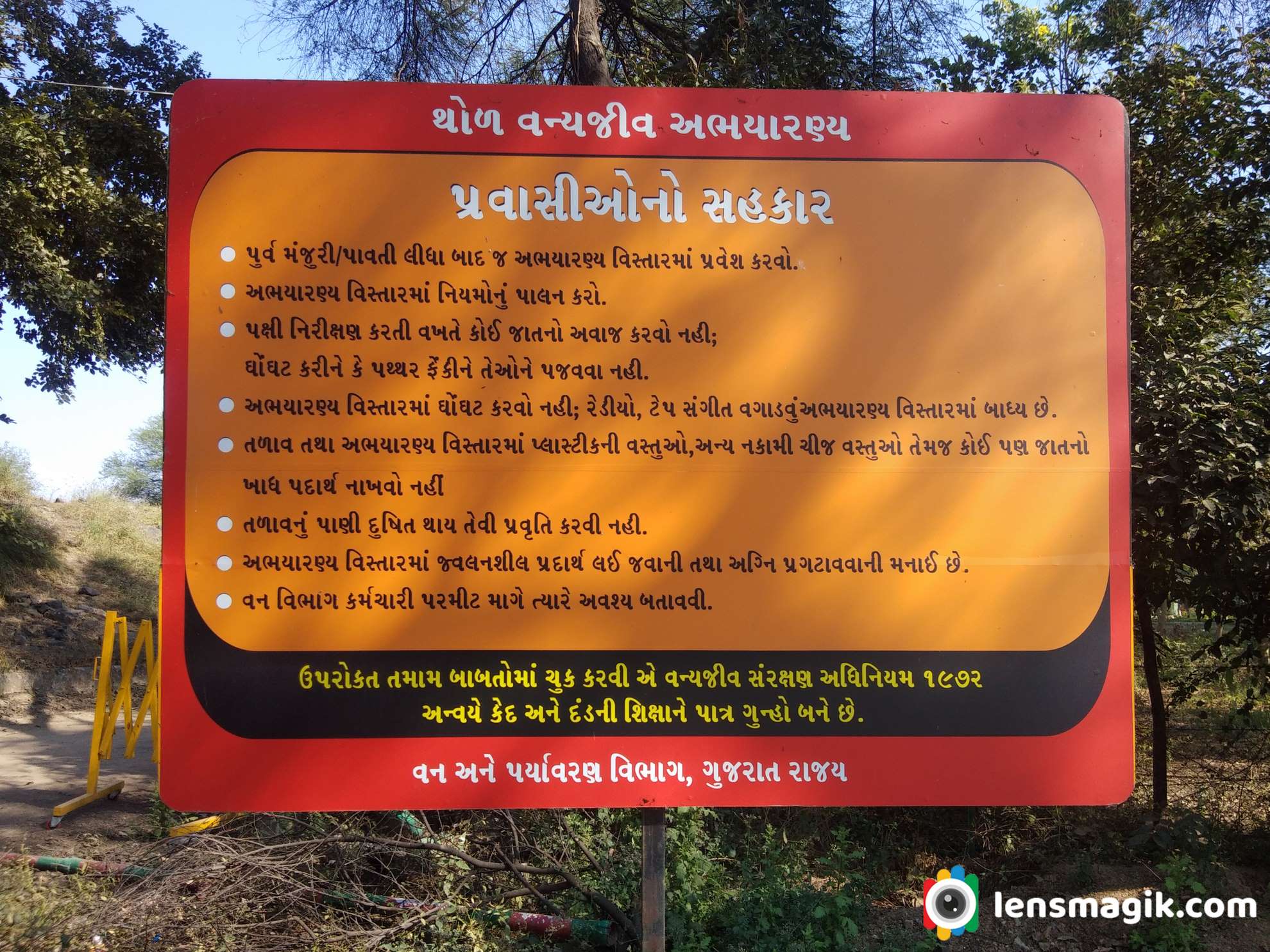
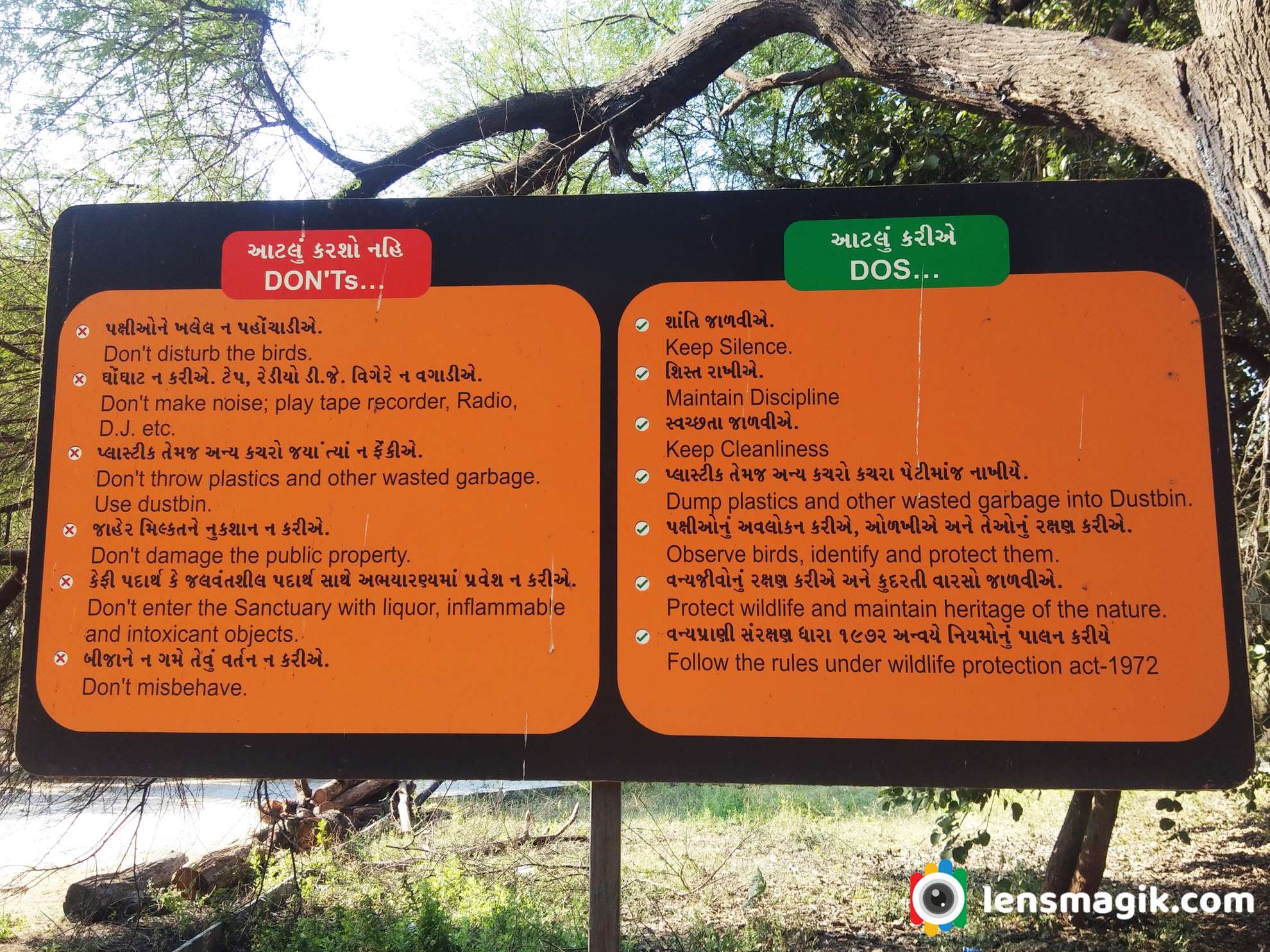
Where to Stay near Thol Lake :
Well near to Thol Lake there are not good places to stay at night but you can go near to destinations like Kadi, Kalol or Gandhinagar , Ahmedabad where you can get good places to stay at night. Nearest I suggest Kalol around 15-18 km or you can go Ahmedabad around 25 km.
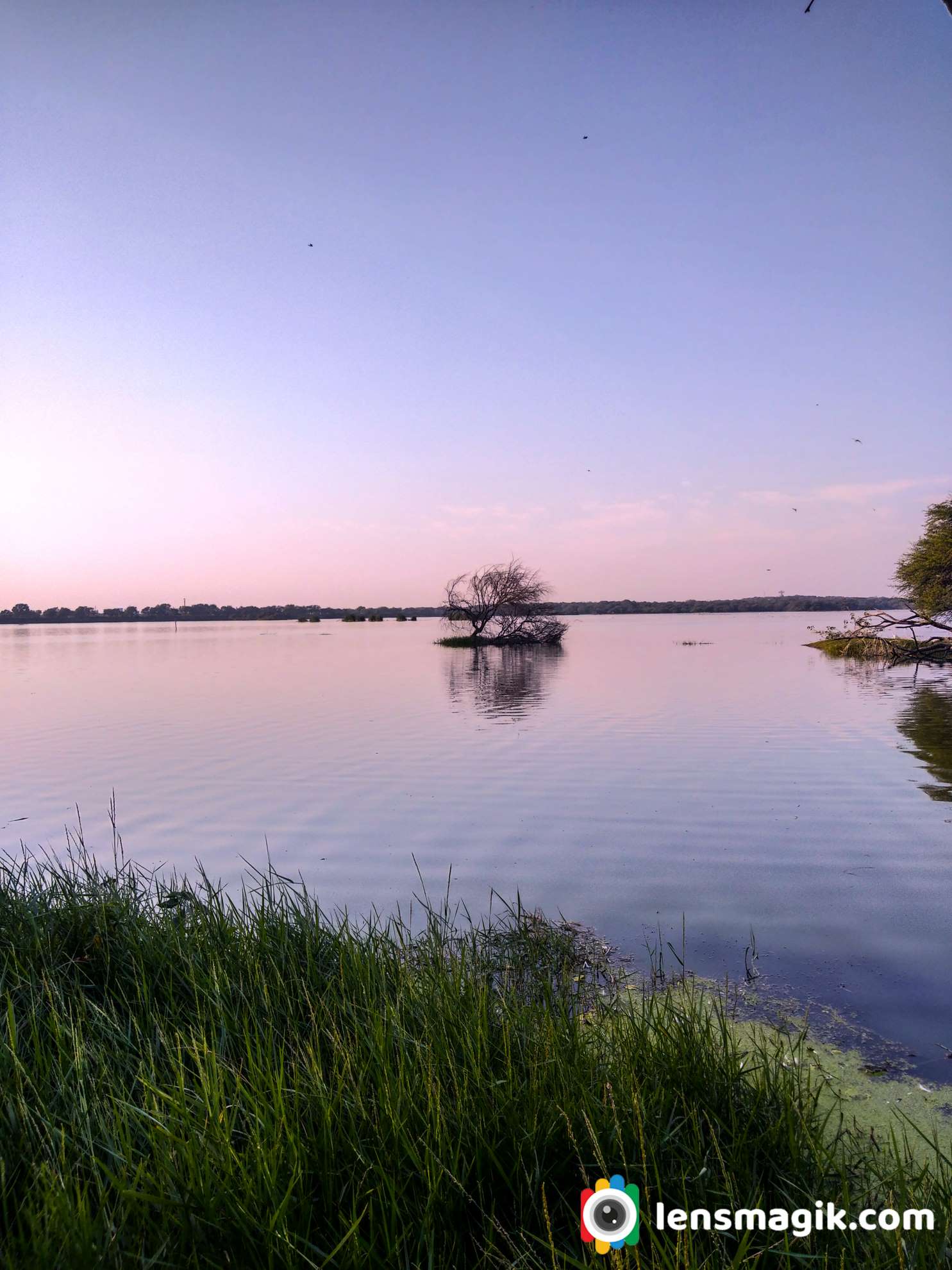

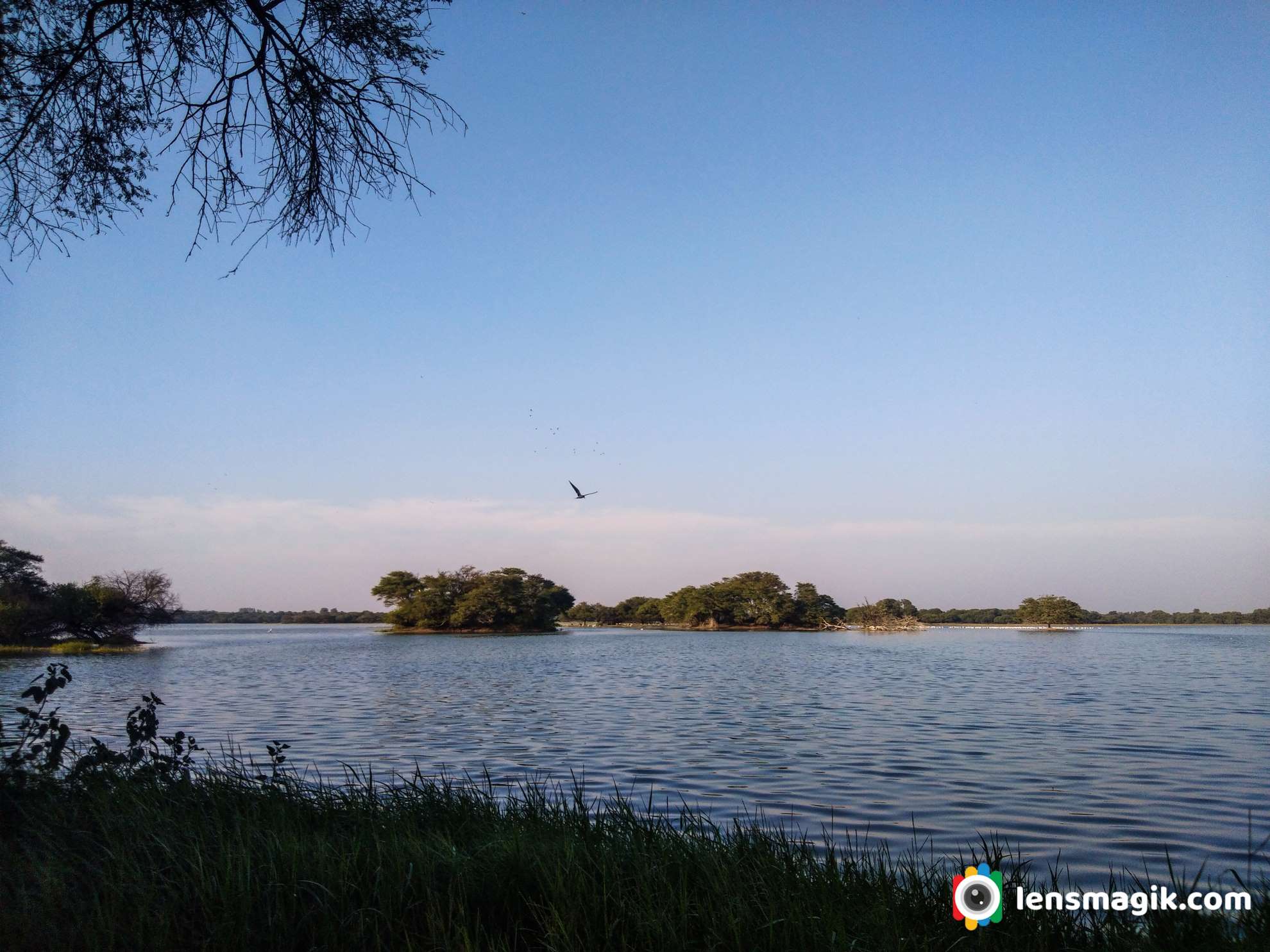


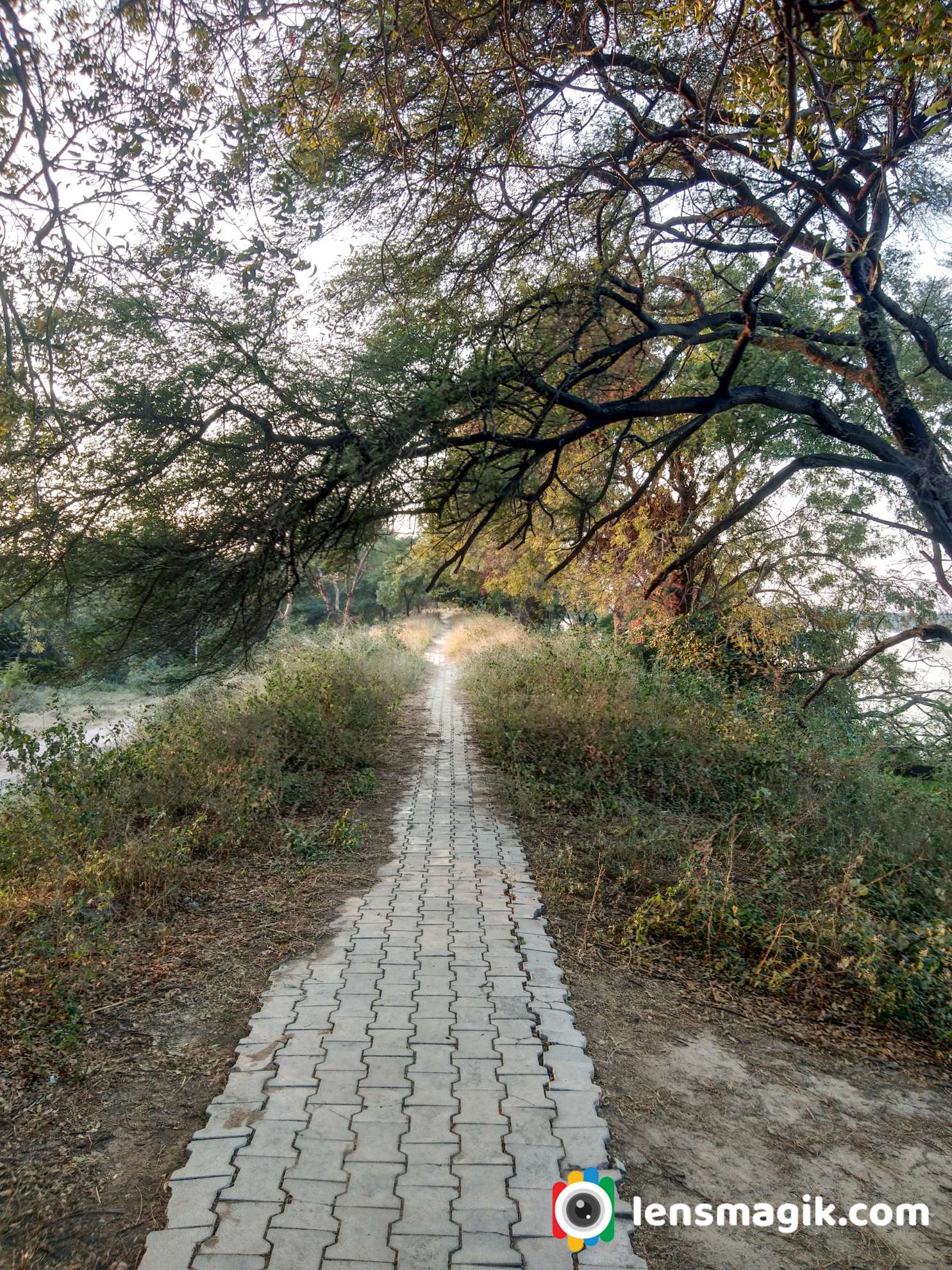
Places to Visit near Thol Lake :
If you are staying at Ahmedabad then go for Ahmedabad Darshan , Pol area of Ahmedabad and Adalaj Ni Vav ( Heritage places ) etc. Also go for fast food test at night at Manek Chauk and SindhuBhavan road there are lots of option for food lovers like Urban Chauk, Freezbee etc.
If you stay at Gandhinagar then visit Mahatma Mandir at Gandhinagar, Sarita udyan , Akshardham Temple etc.
I would suggest Modhera Sun Temple if you had some more time which is around 100km from Ahmedabad. For bird lovers and bird photographer I would suggest visit Little ran of Kutch (LRK) during Winter season, Pariej Lake, Indroda park Gandhinagar, Jessore Sanctuary Banaskantha etc.
How to Reach Thol Sanctuary :
Nearest airport is Ahmedabad and from Ahmedabad thol lake distance is around 30-40 km
Also for Railway station is Ahmedabad because you can get all frequency and destinations from Ahmedabad railway station.
Bahucharaji or Becharaji is located in Mehsana district Gujarat. It is a Hindu Temple of Hindu Goddess Bahuchara Mata.Bahucharaji Temple is in Bahucharaji town near shankhalpur village Mehsana. Bahucharaji Temple is in center of town. Bahucharaji temple managed by State Government. Ma Devi Bahucharaji is worshipped here as Goddess Bala Tripura Sundari.

Story of Bahucharaji temple
As per old people says Dandasur demon was stayed near Becharaji and won Patallok, Mrutyulok and Devloka all three lokas. The Devil has boon from Lord Shiva that a godeess appeared against him in small girl form. All 3 lokas Devas went to Goddess Parambaa to save them from demon. The Bahuchar mata appeared in form of small girl for fist time at Varakhadi tree . So bahuchar mata known as Bala Bahuchara Mata. Goddess killed demon with Trishul and bought peace for people of earth.
- Main vehicle of Bahuchar Mata is cock.
- Bala Yantra of Crystle and encased In gold is worshipped at temple.
- Bahuchar Mata carries sward on top right hand, Abhay mudra on bottom right, a text of scriptures on top left and trident on bottom left.
- In my family we believed that new born male child first time hair removed ( Mundan ) after 1 year in temple.
- It is also believed that any new child don’t speak properly then bought here and on his behalf cock donated to Mata and in few days child can speak properly.
- All over from India devotee came here and pray for blessing of Goddess. On purnima ( full moon ) day is special for devotees. On Chaitri Poonam 5 days fair arranged near the Temple and in city.
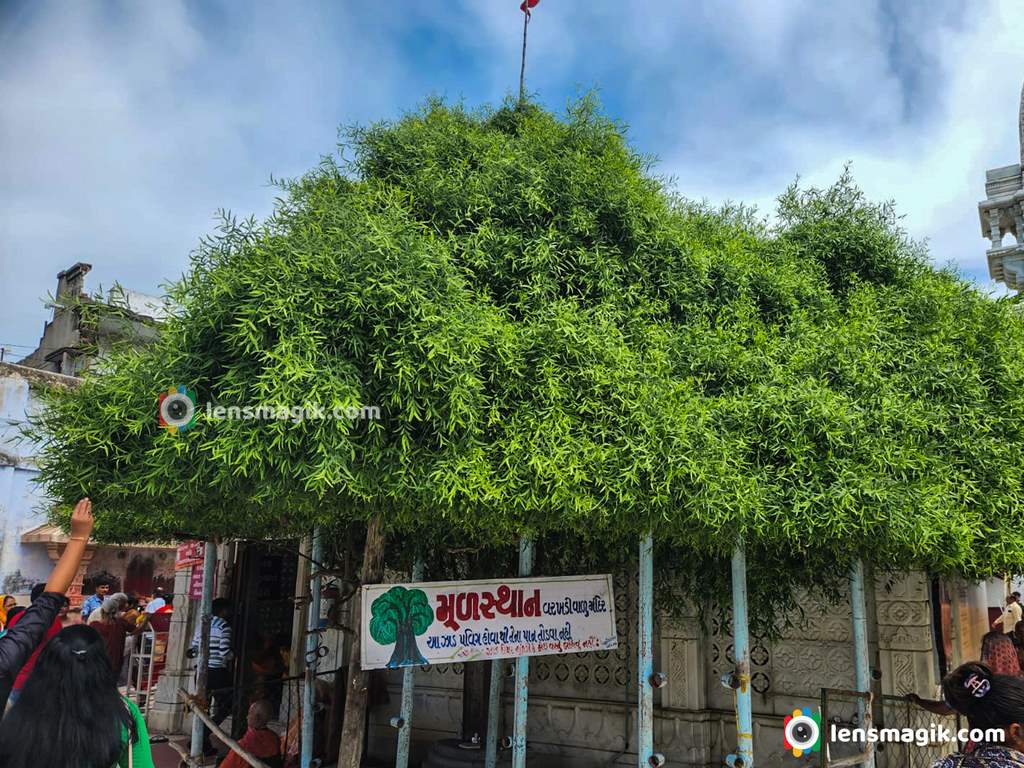

Where to Stay in Bahucharaji or Bechraji :
There are lots of Dharamshala , Hotels, Guest Houses in Bahucharaji. All places are in good rate available. People can also go to Mehsana , Shankhalpur for stay . Also people can go to Modhera Sun Temple for visit.
Bahucharaji Mata Temple Darshan Timing :
Bahucharaji Mata temple darshan timing is from 5.30 AM to 10 PM .
Nearest Airport : Ahmedabad
District : Mehsana
Pincode of Bechraji : 384213